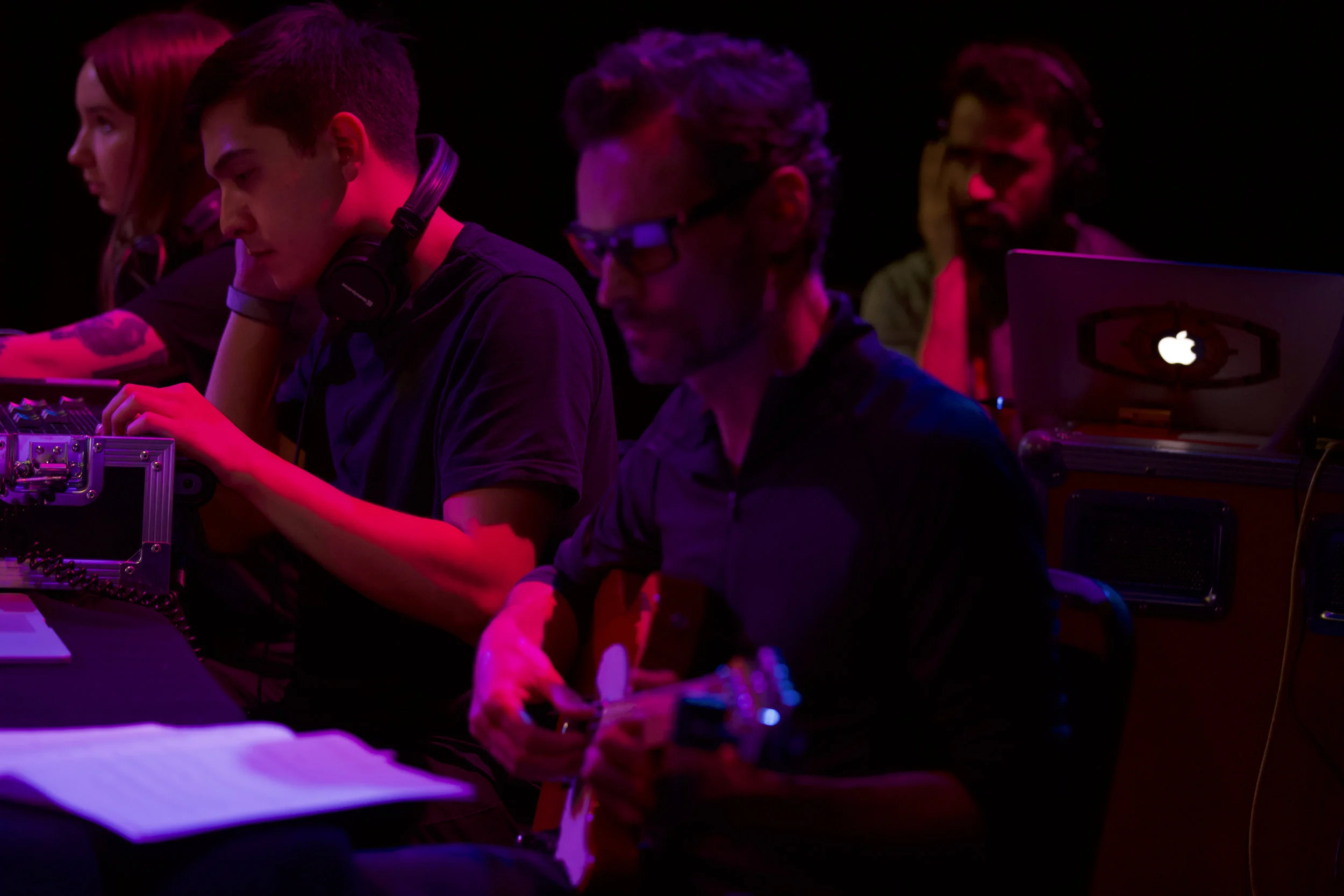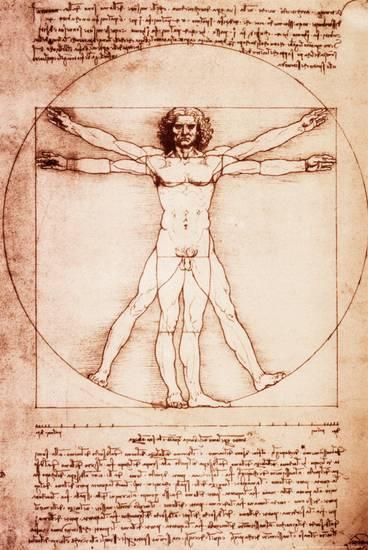Gallery
LCM final Rehearsal (19th October 2018)
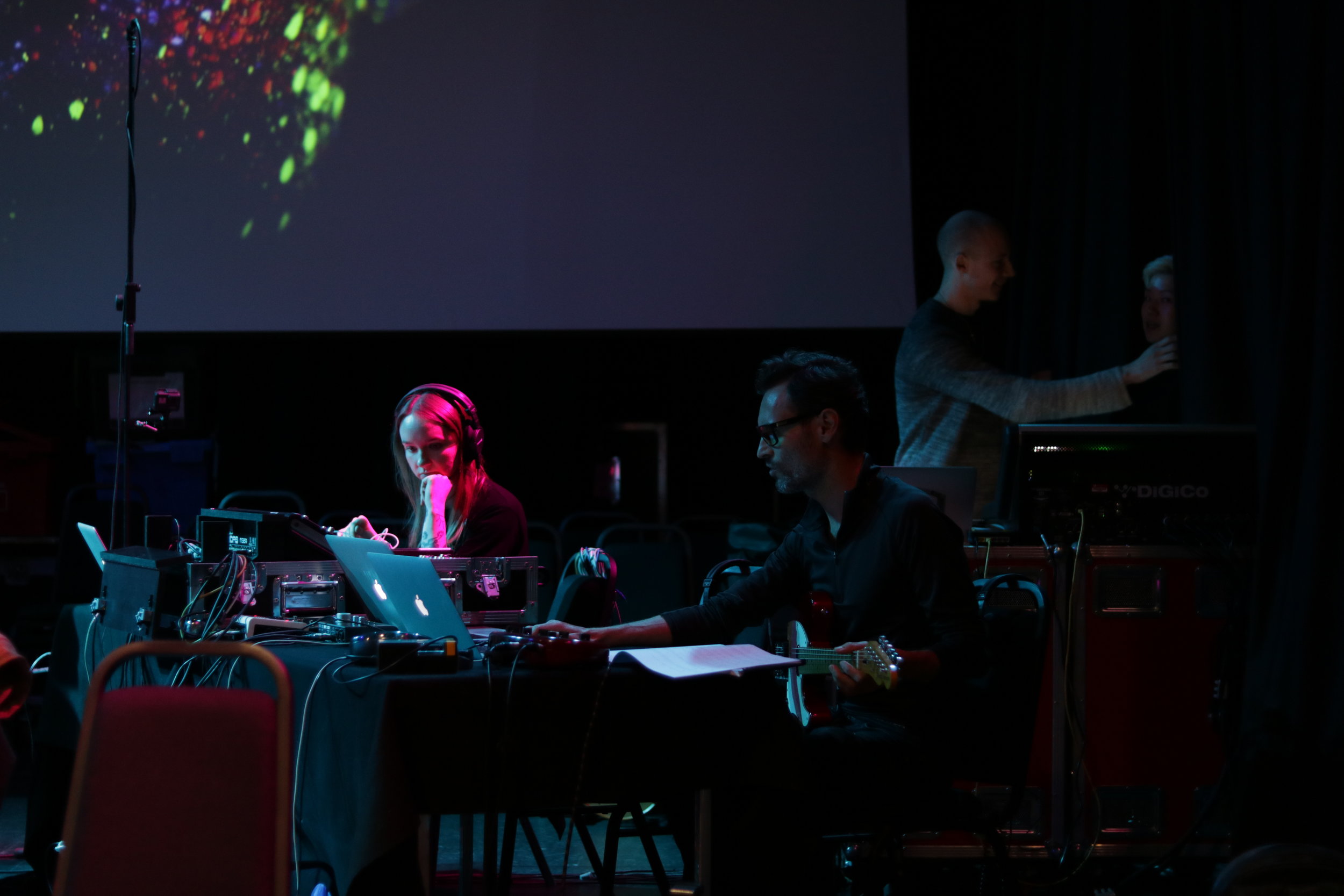
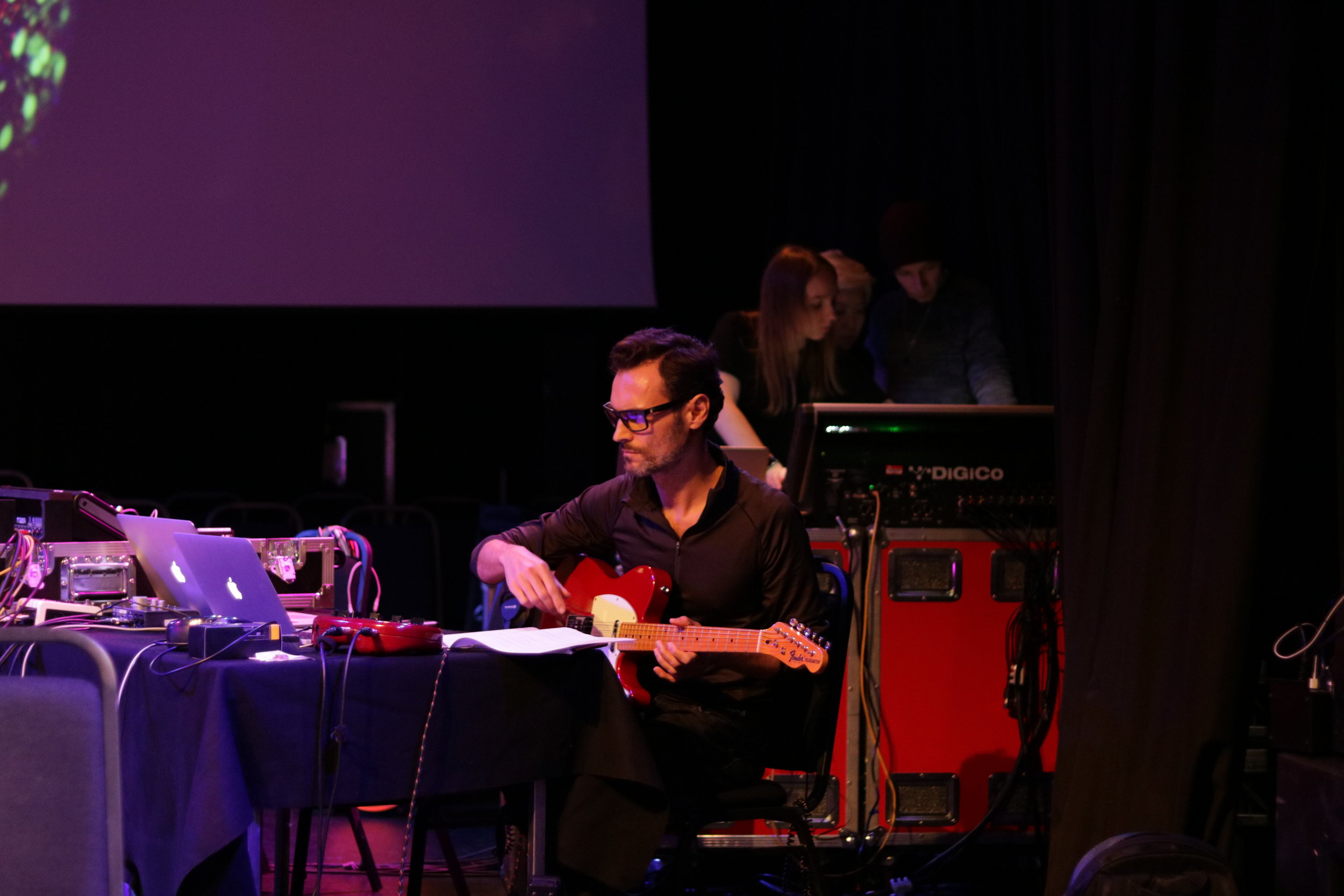
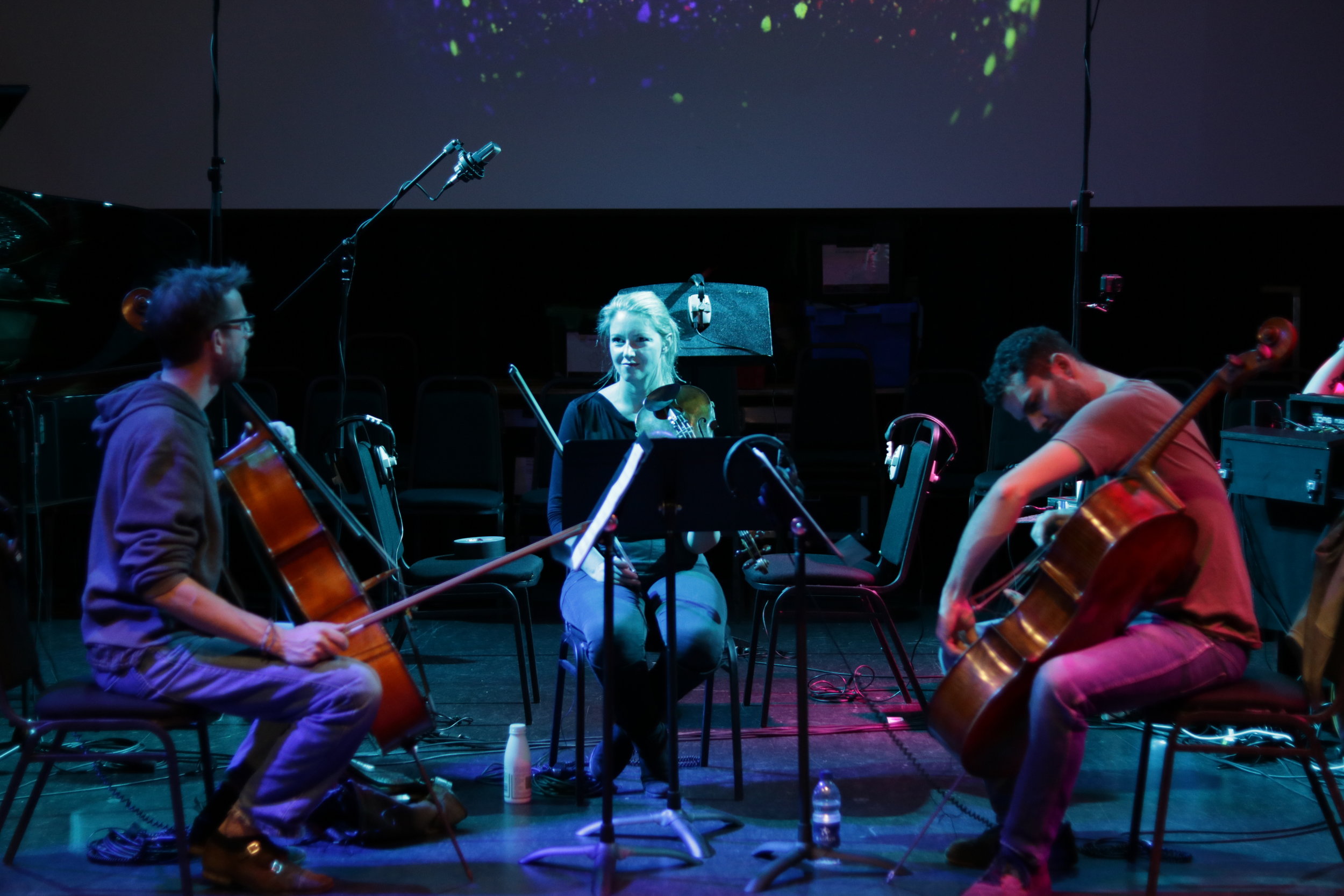
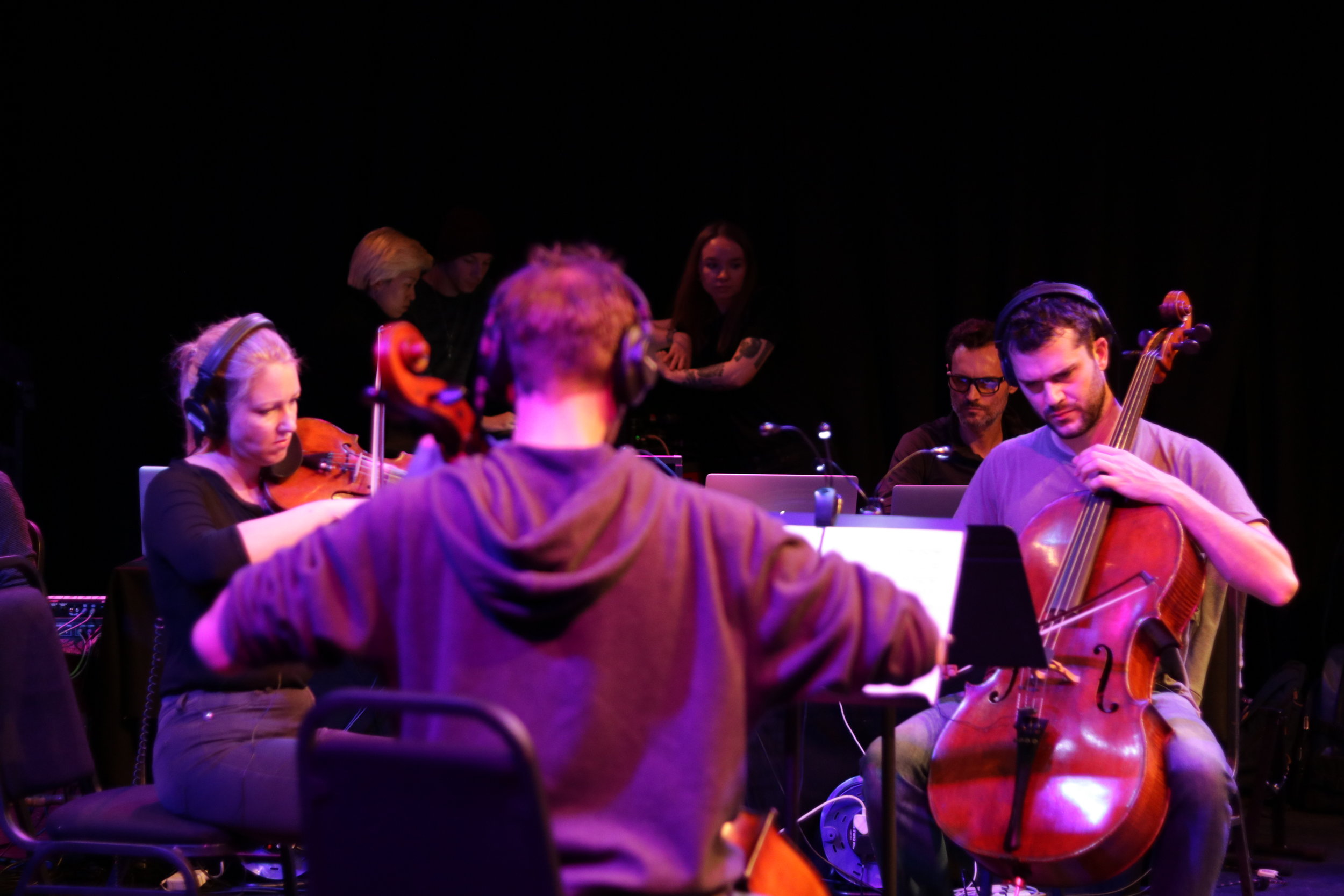
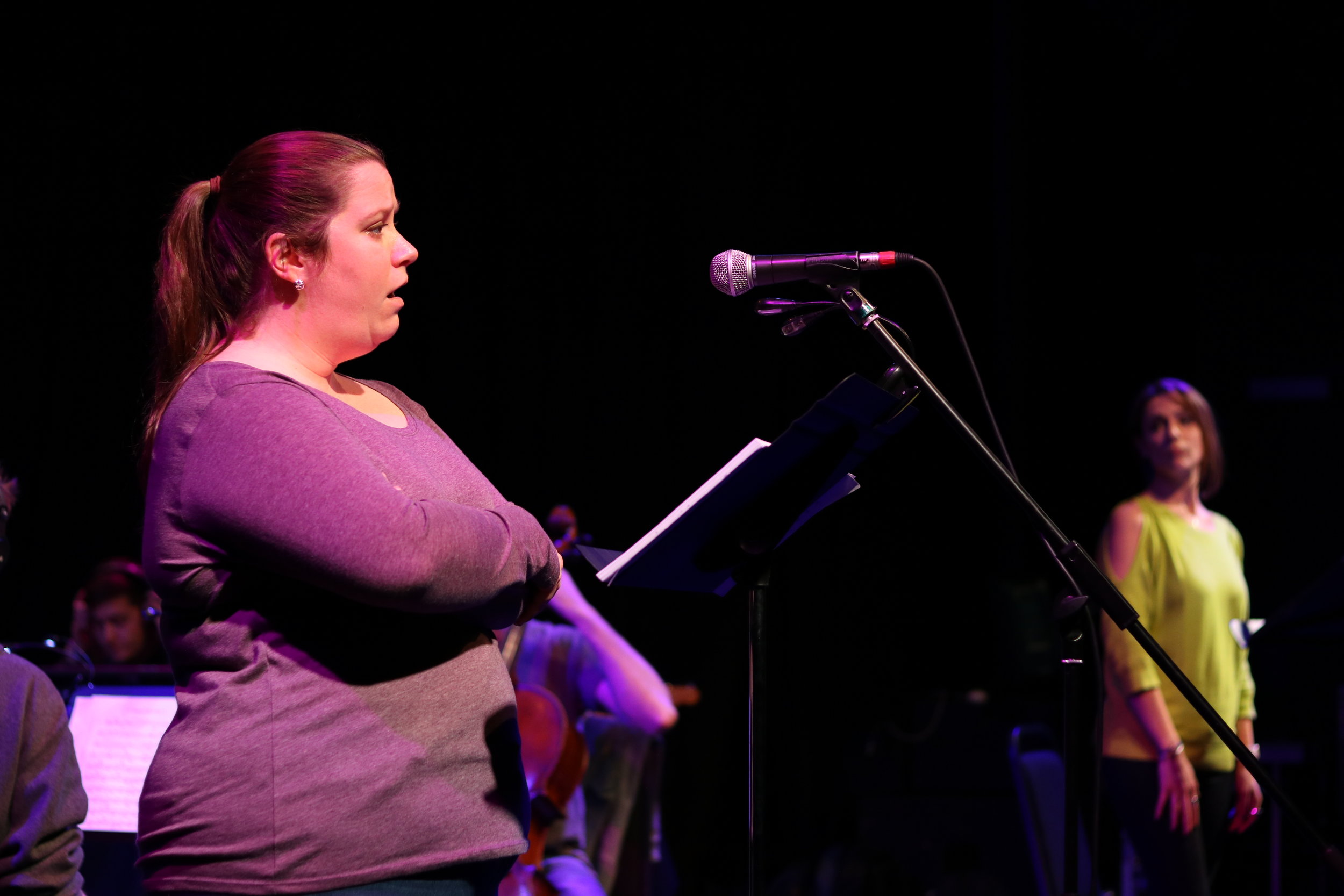
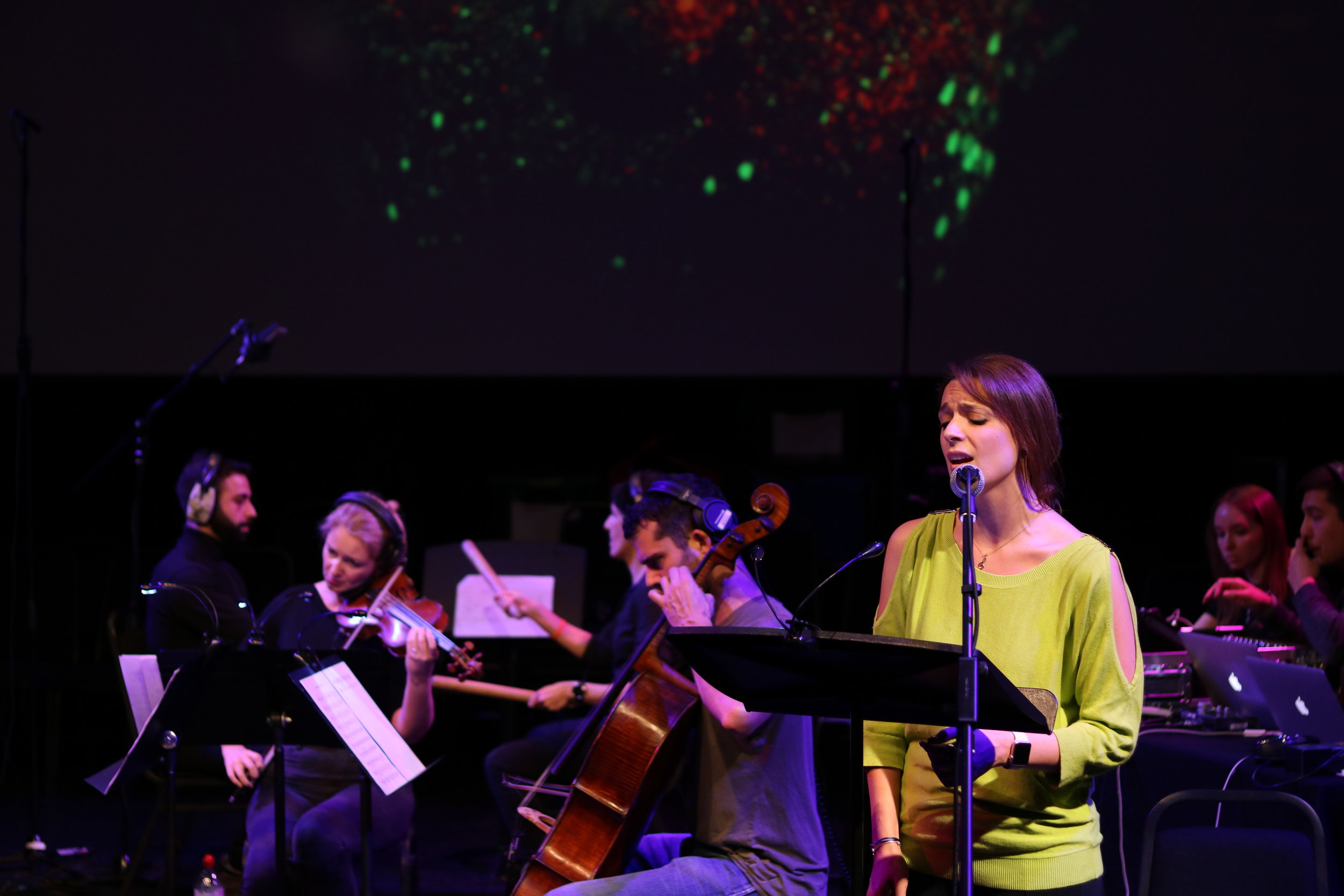
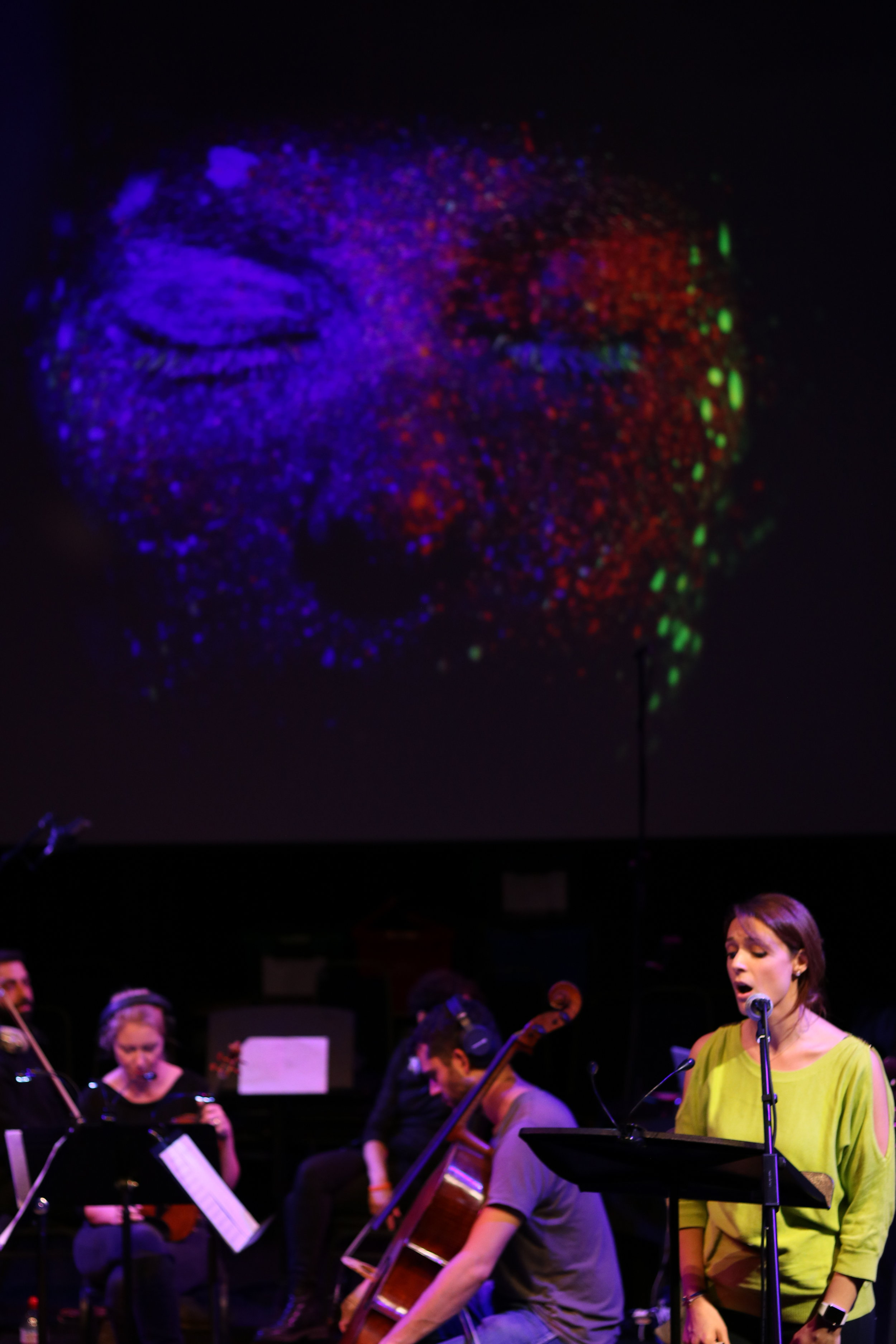
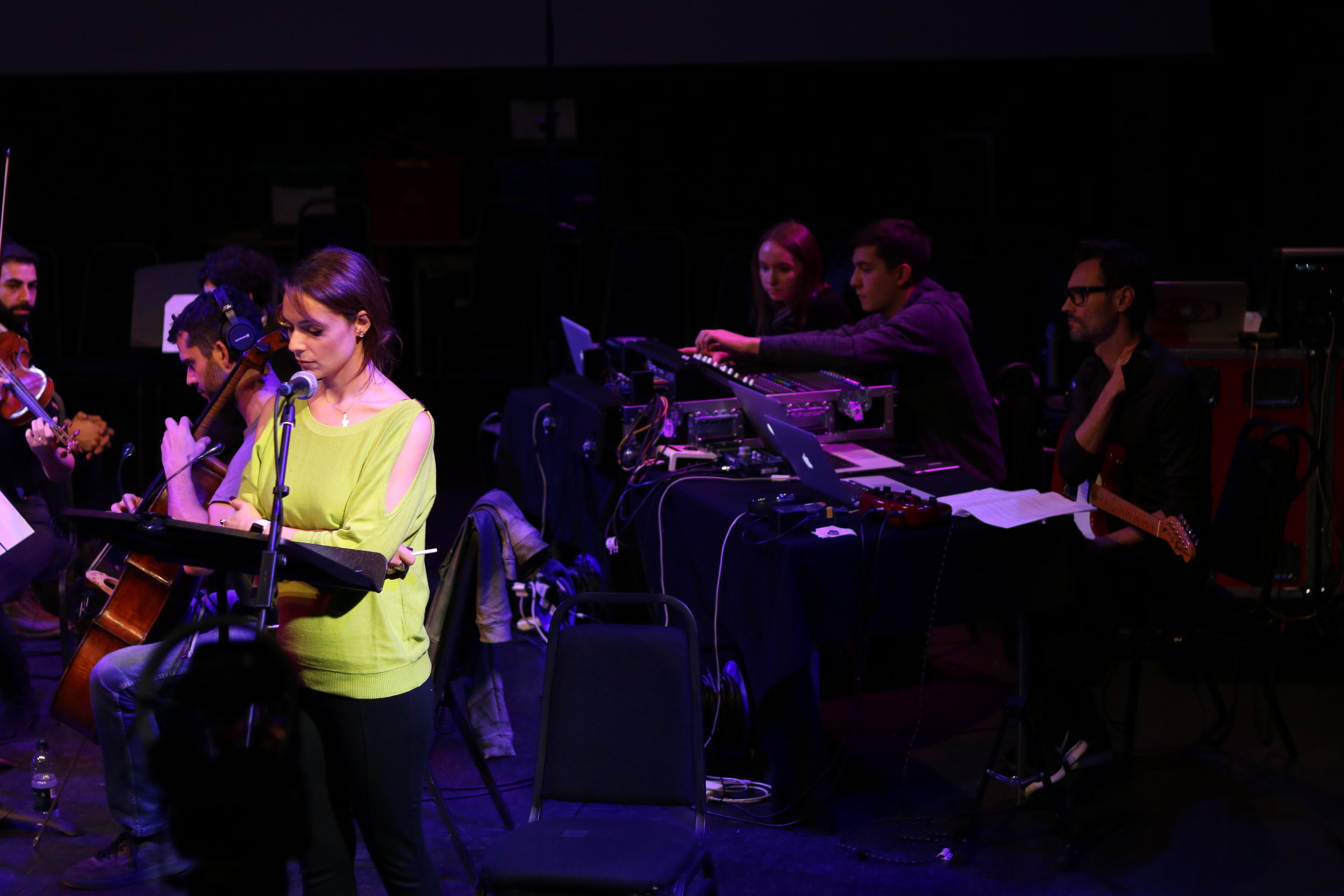
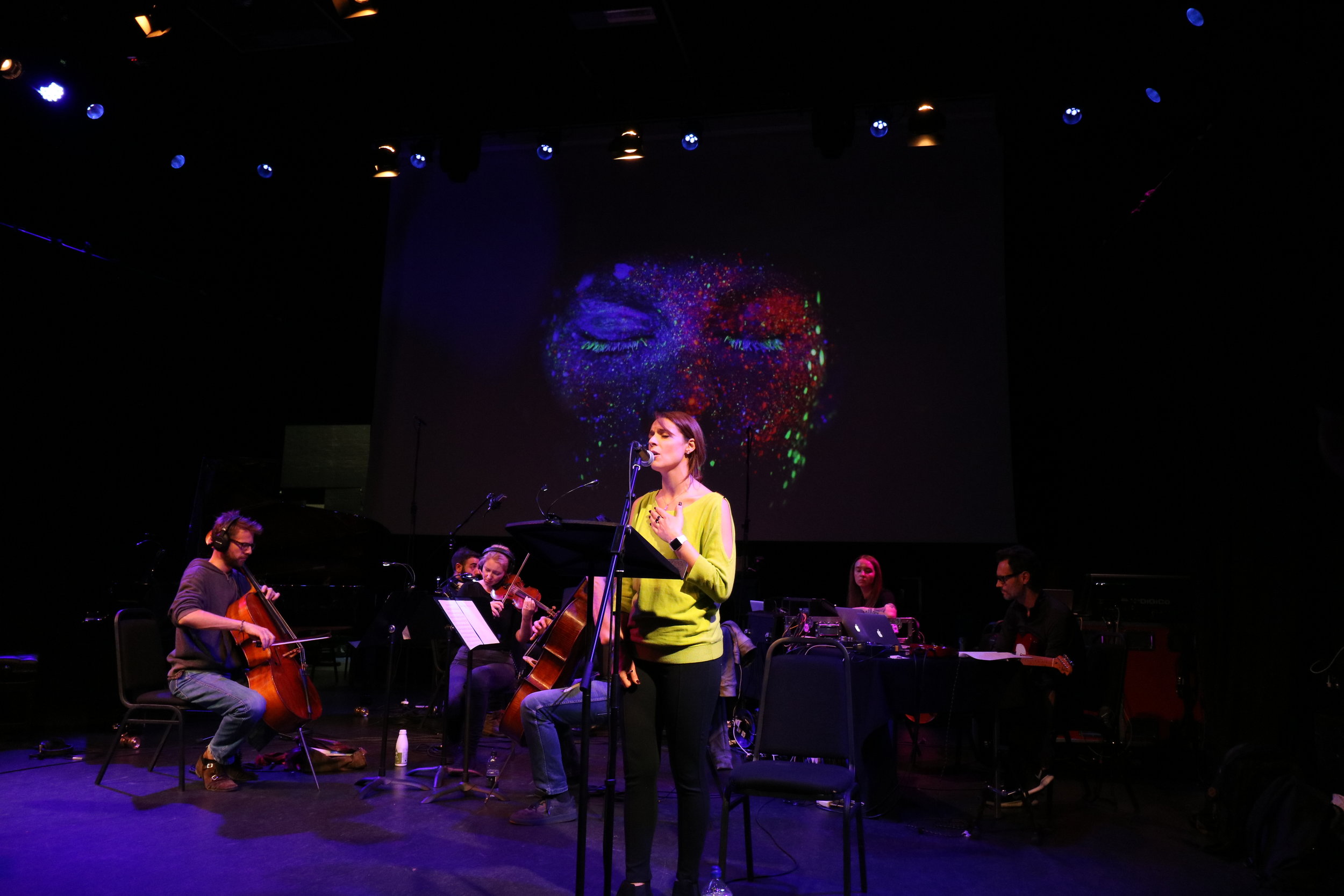
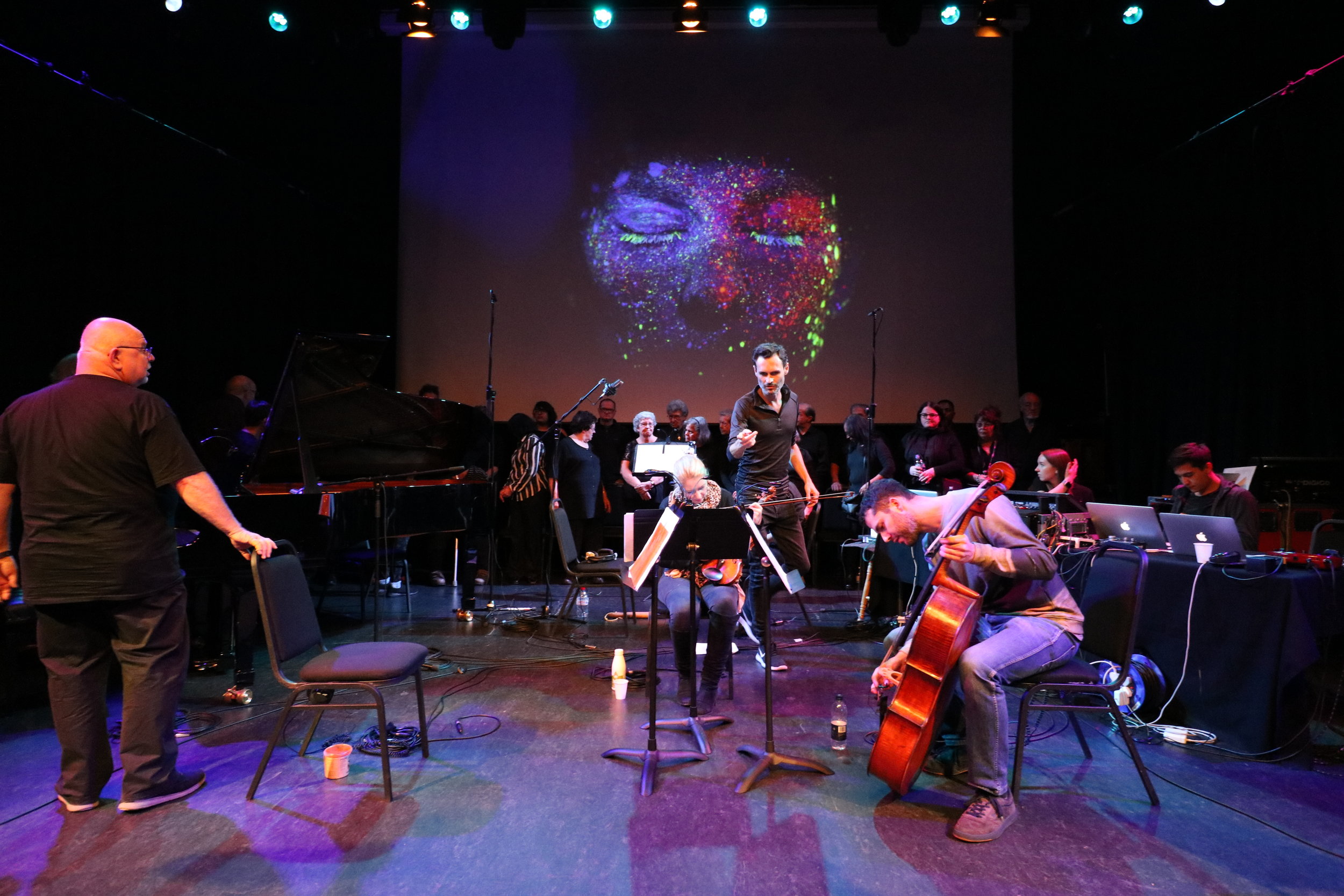

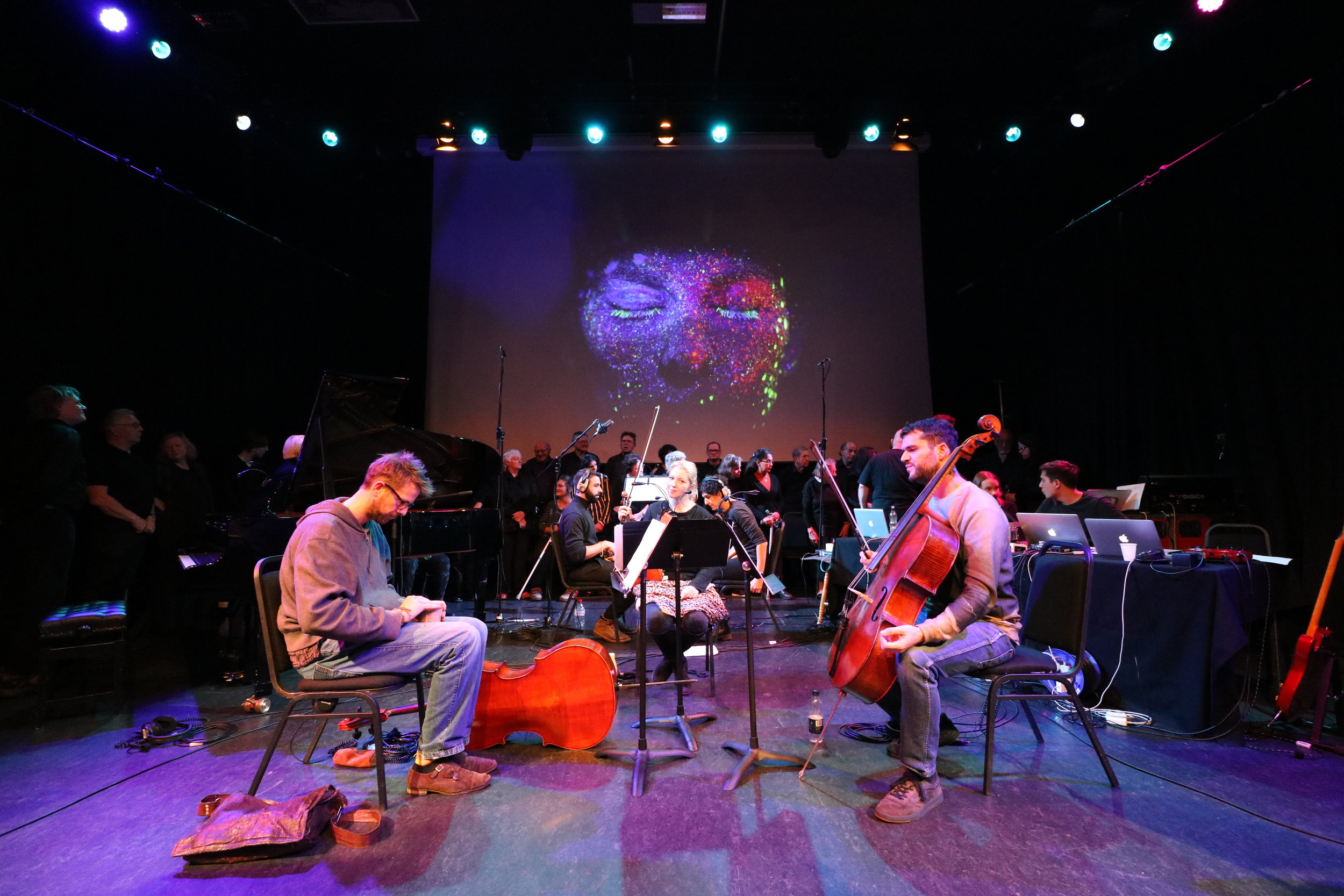
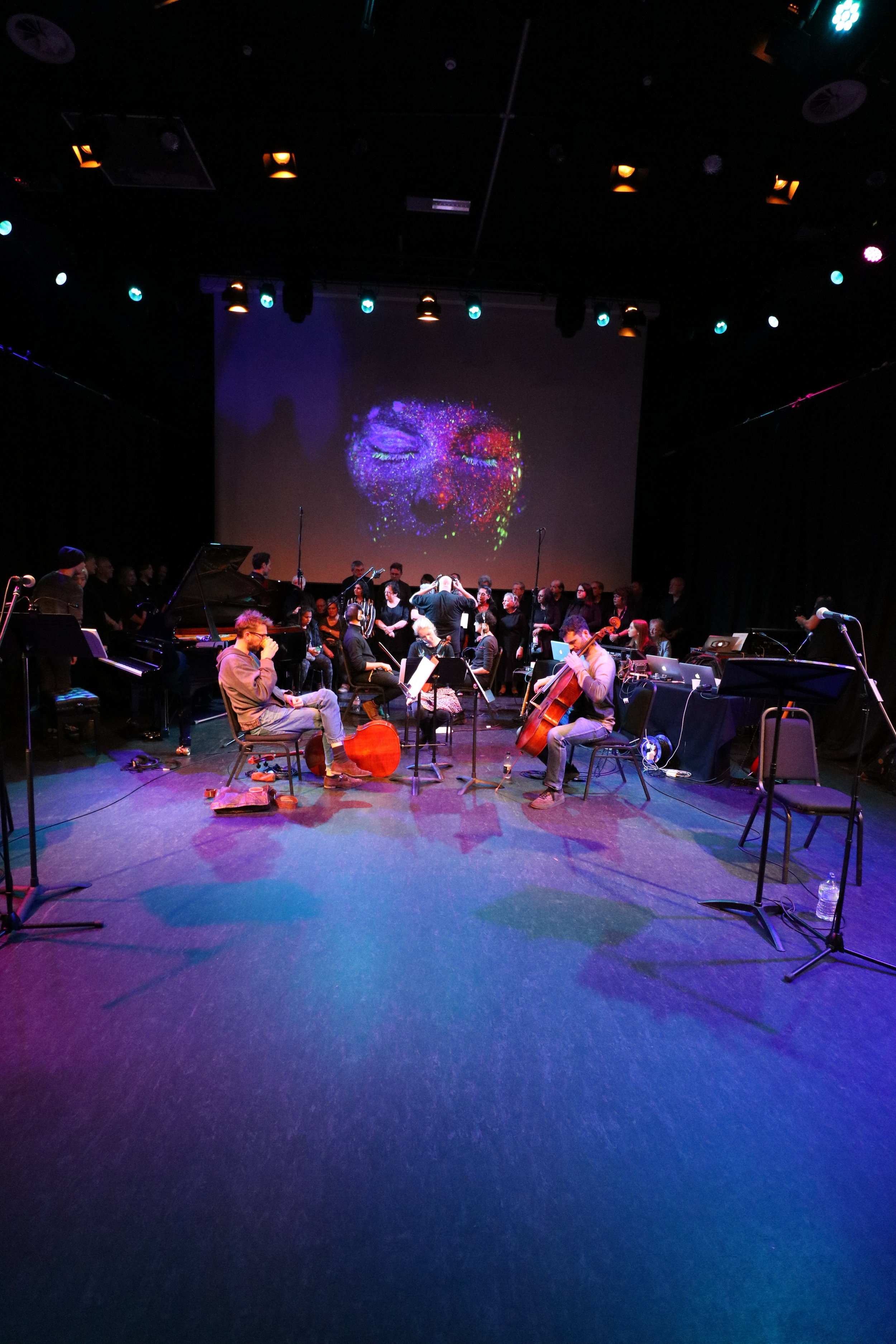
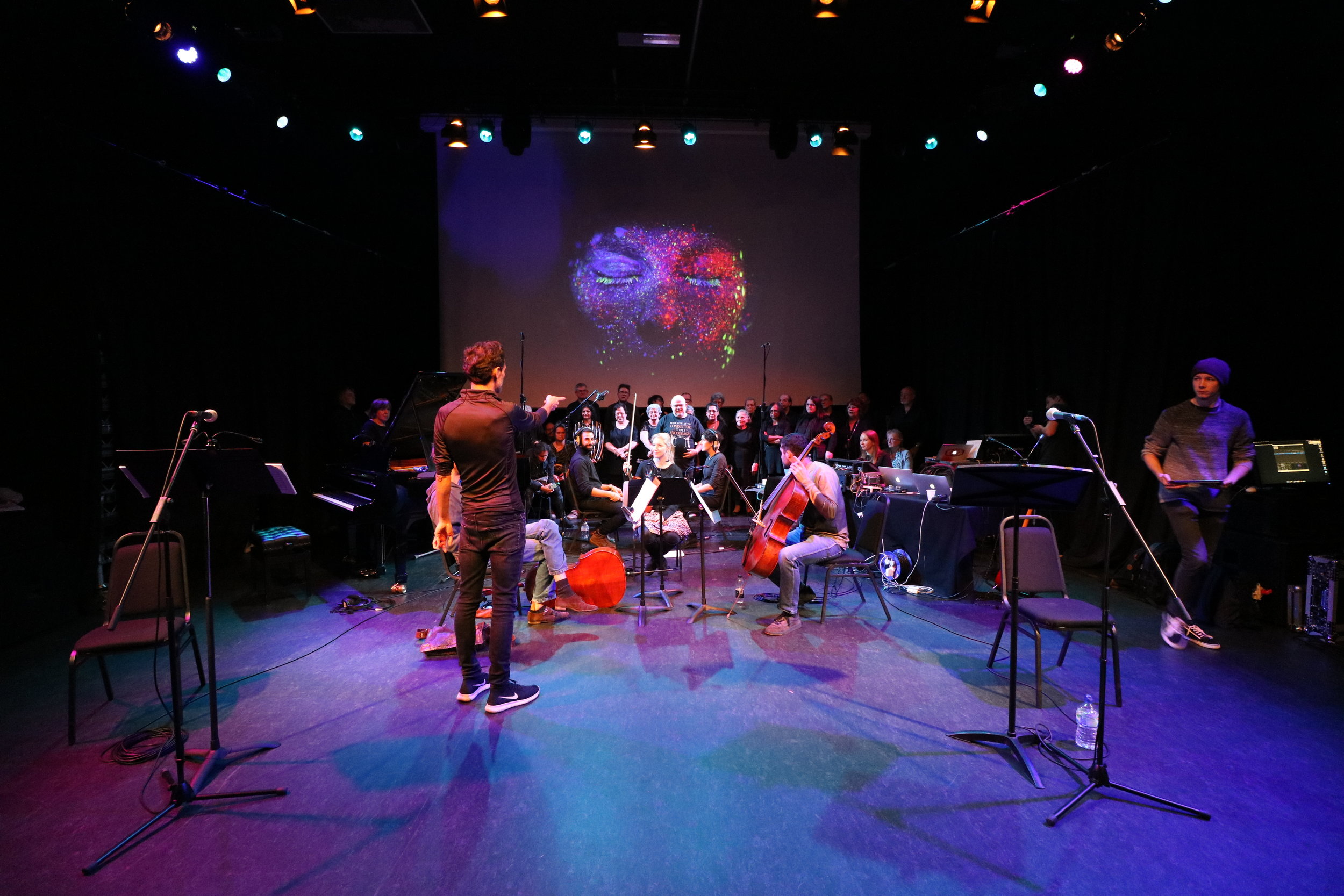

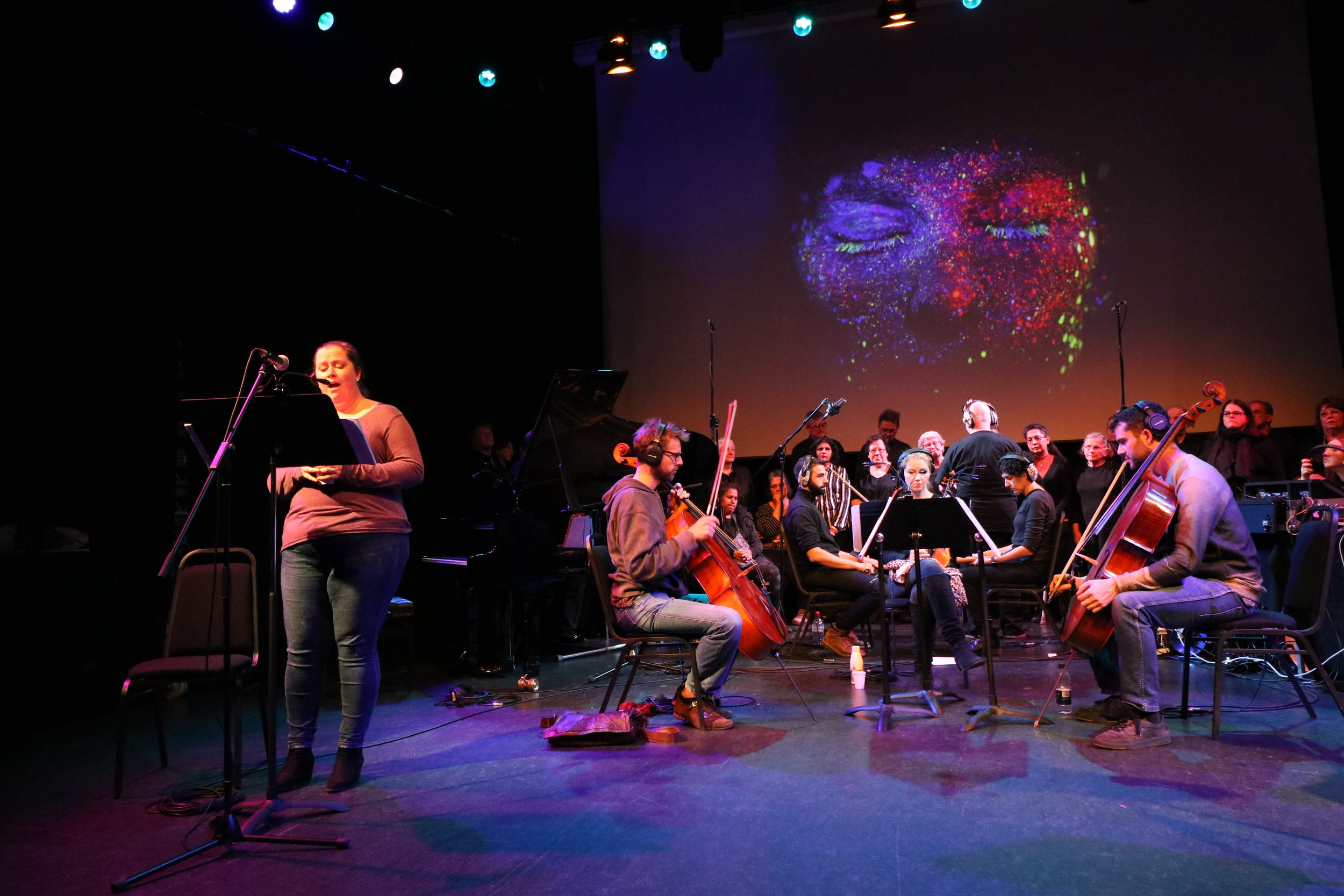
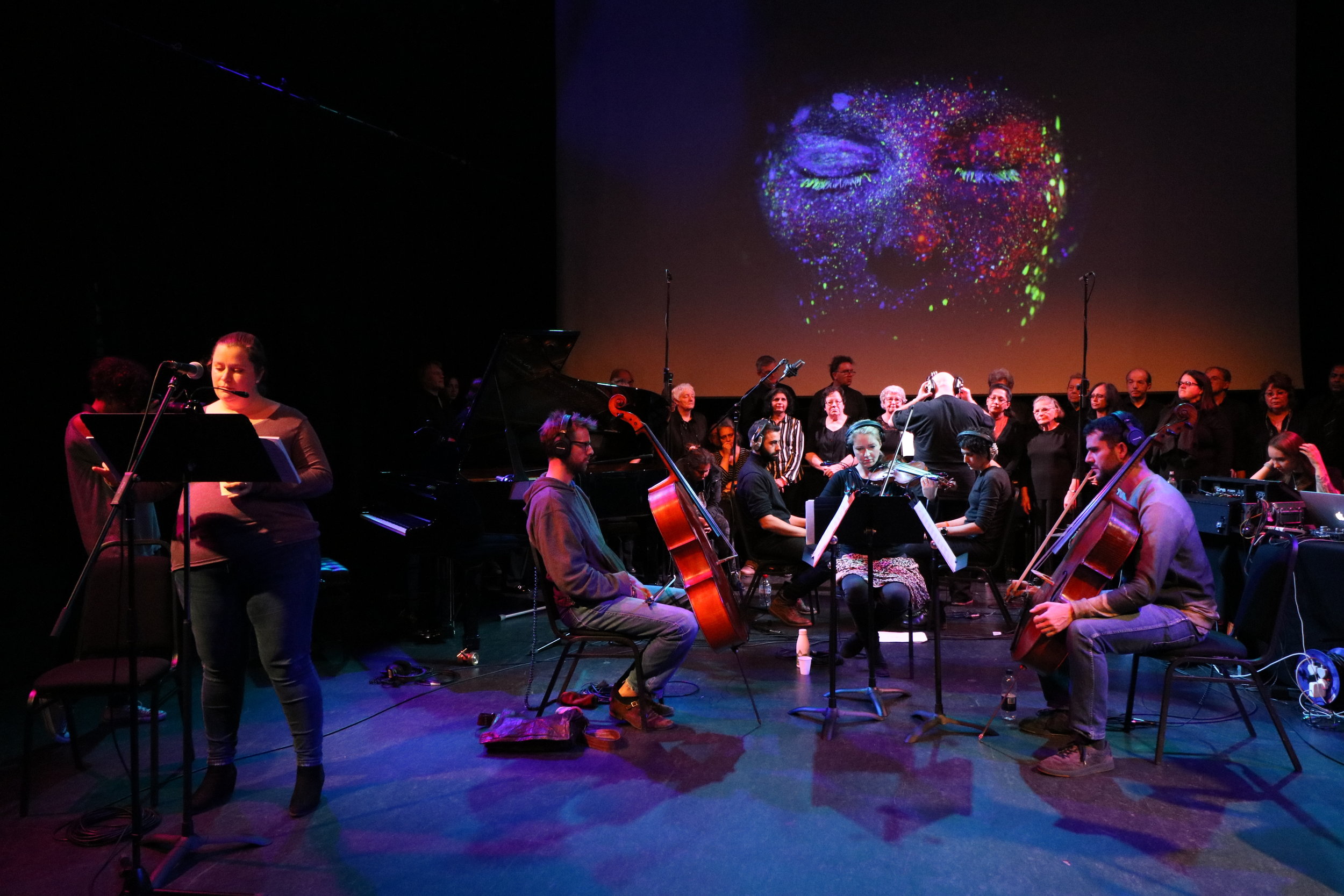
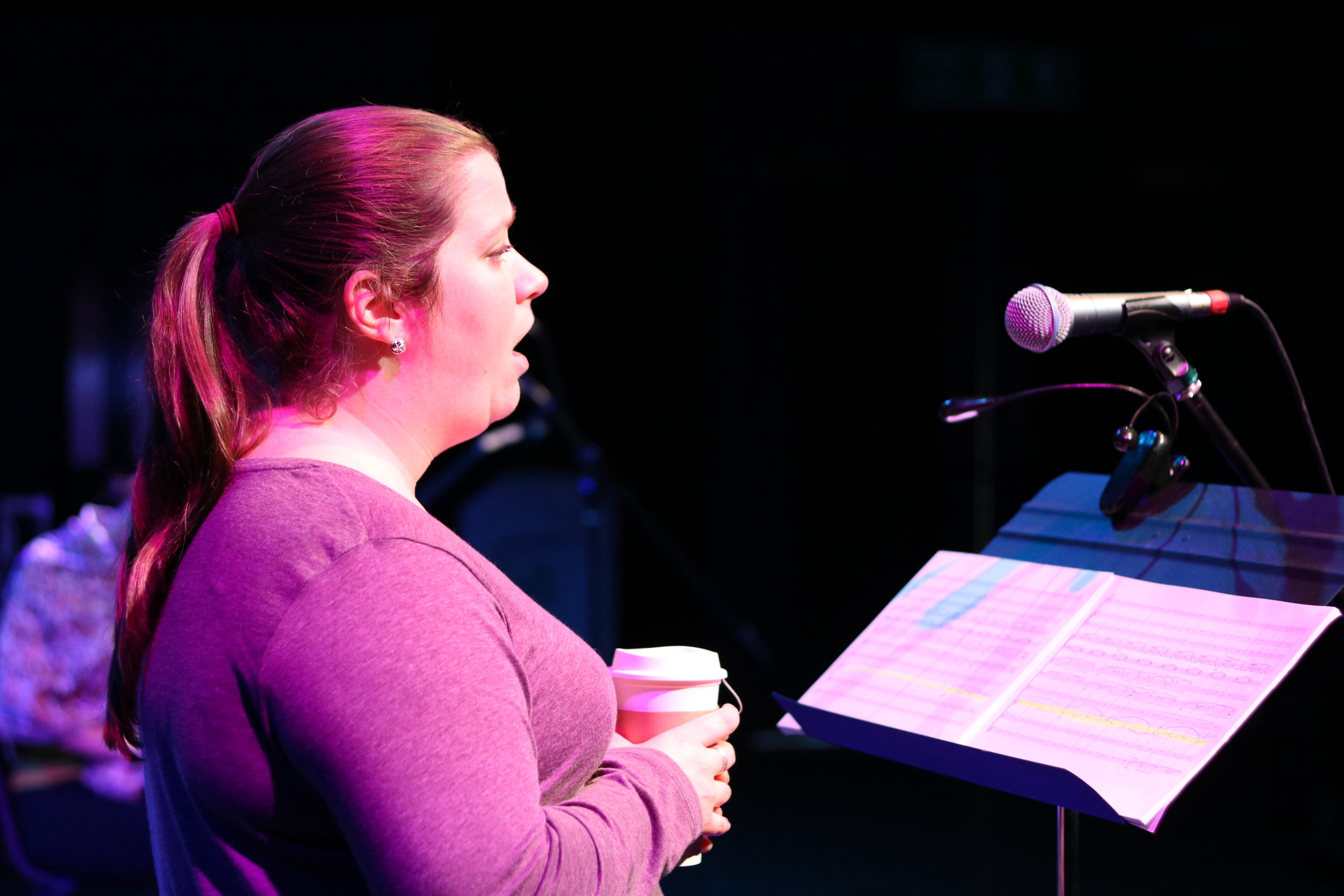
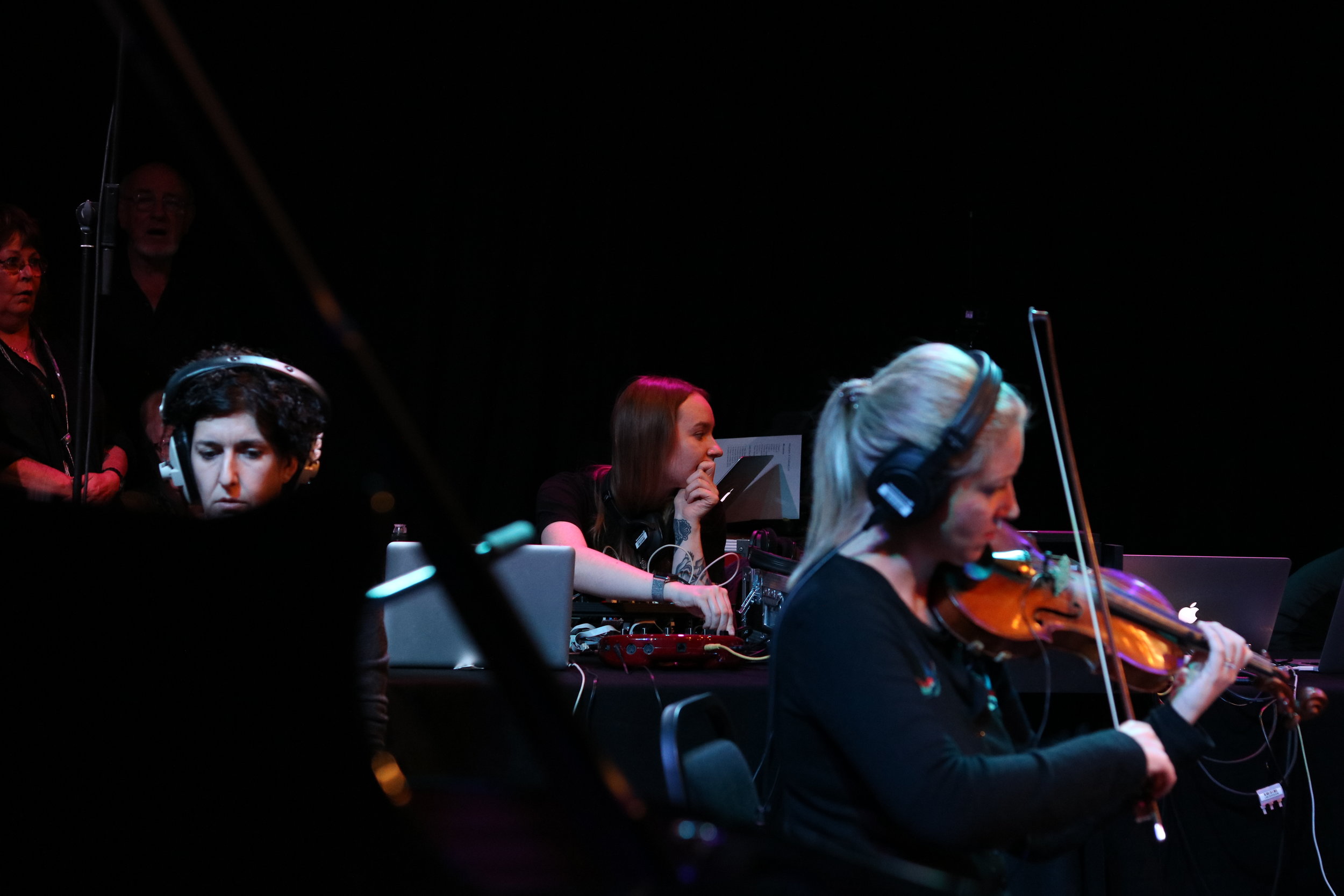
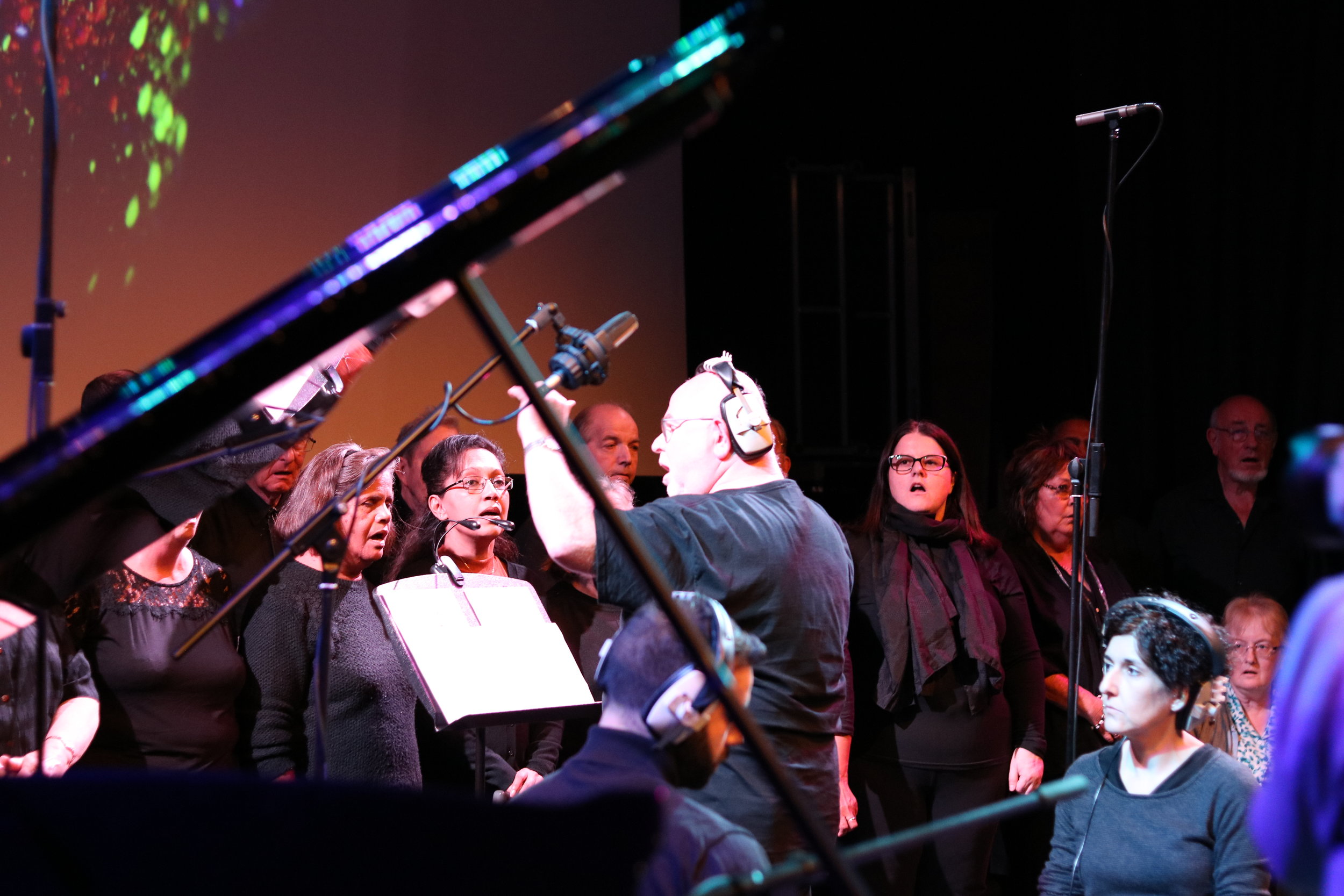
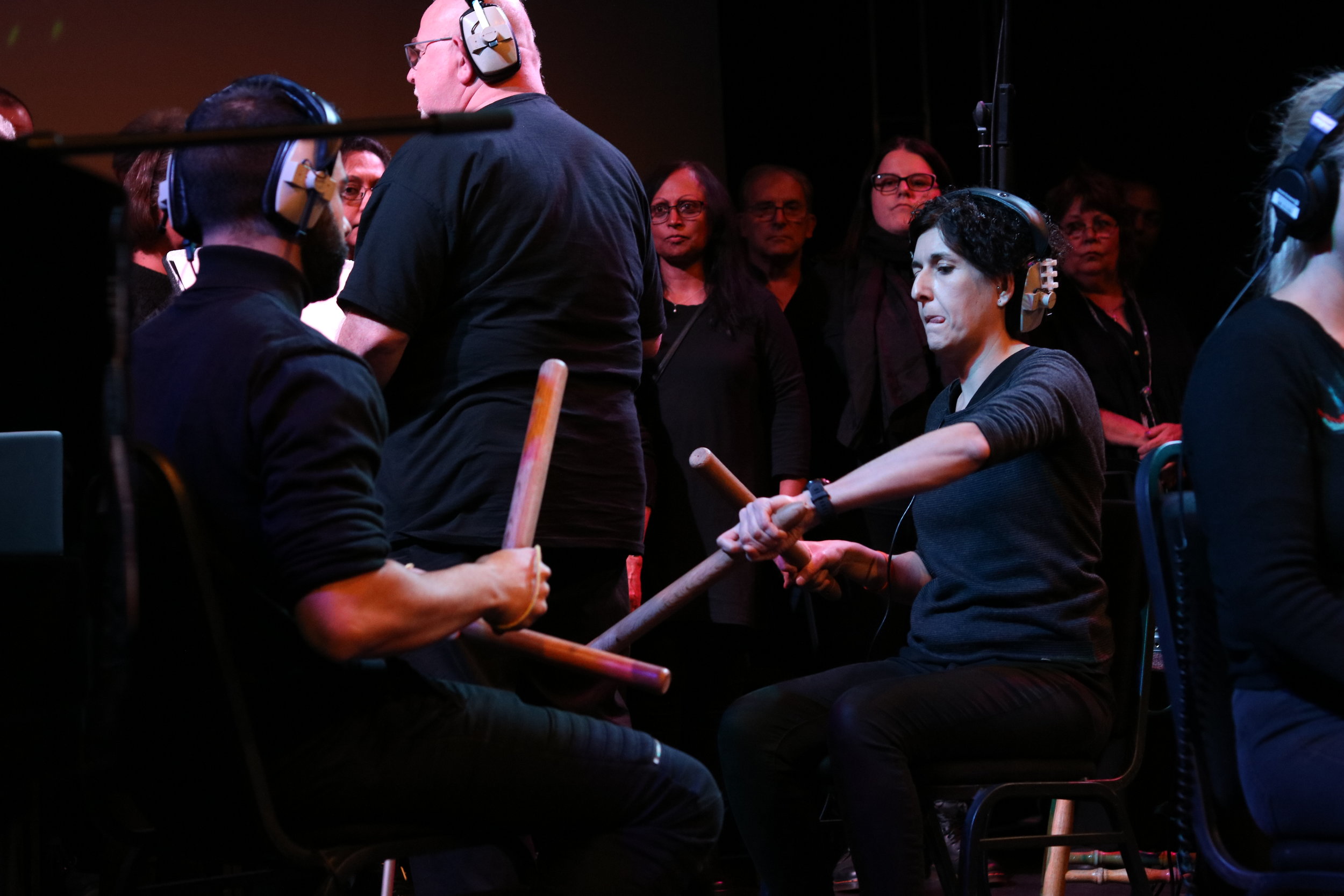
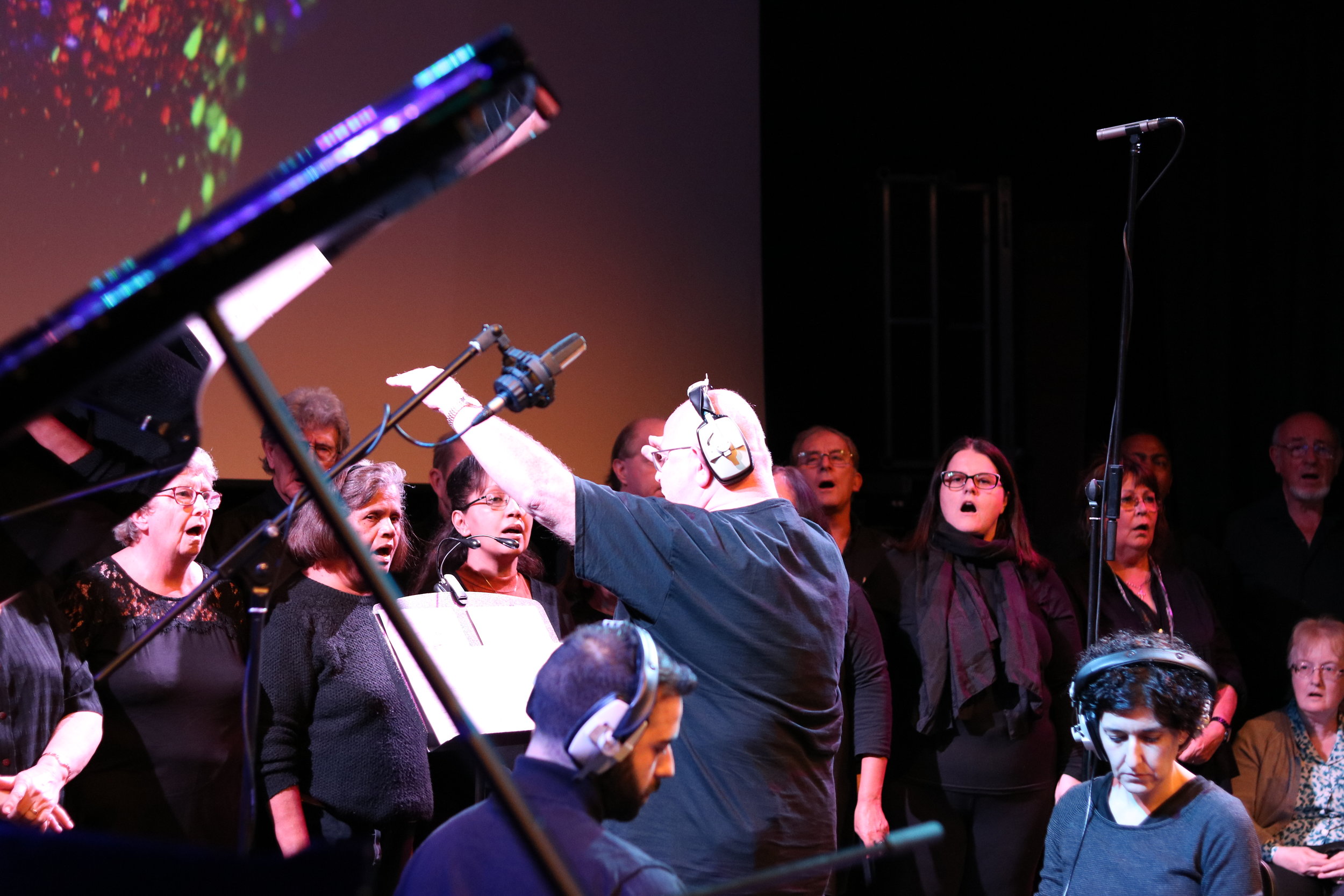
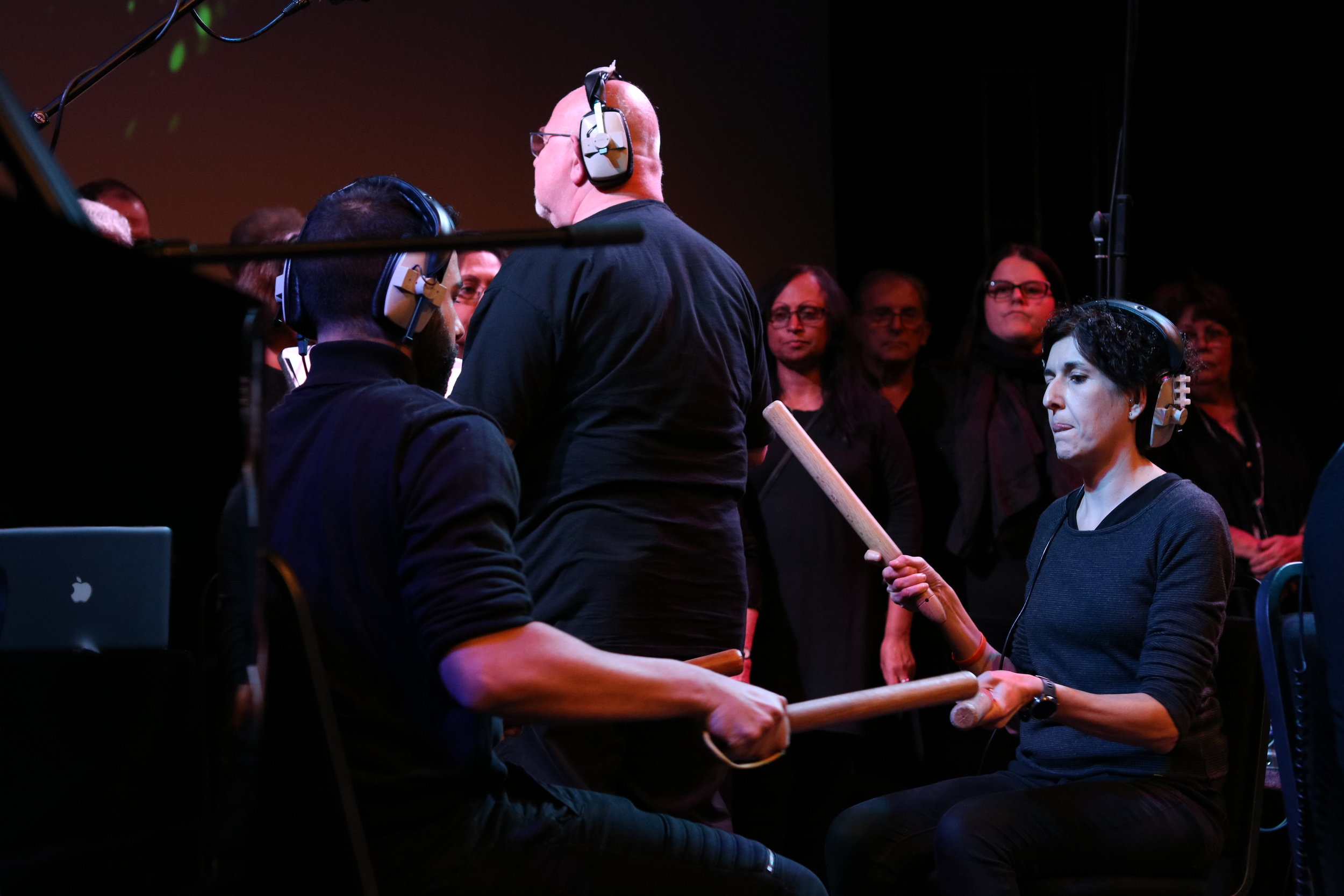
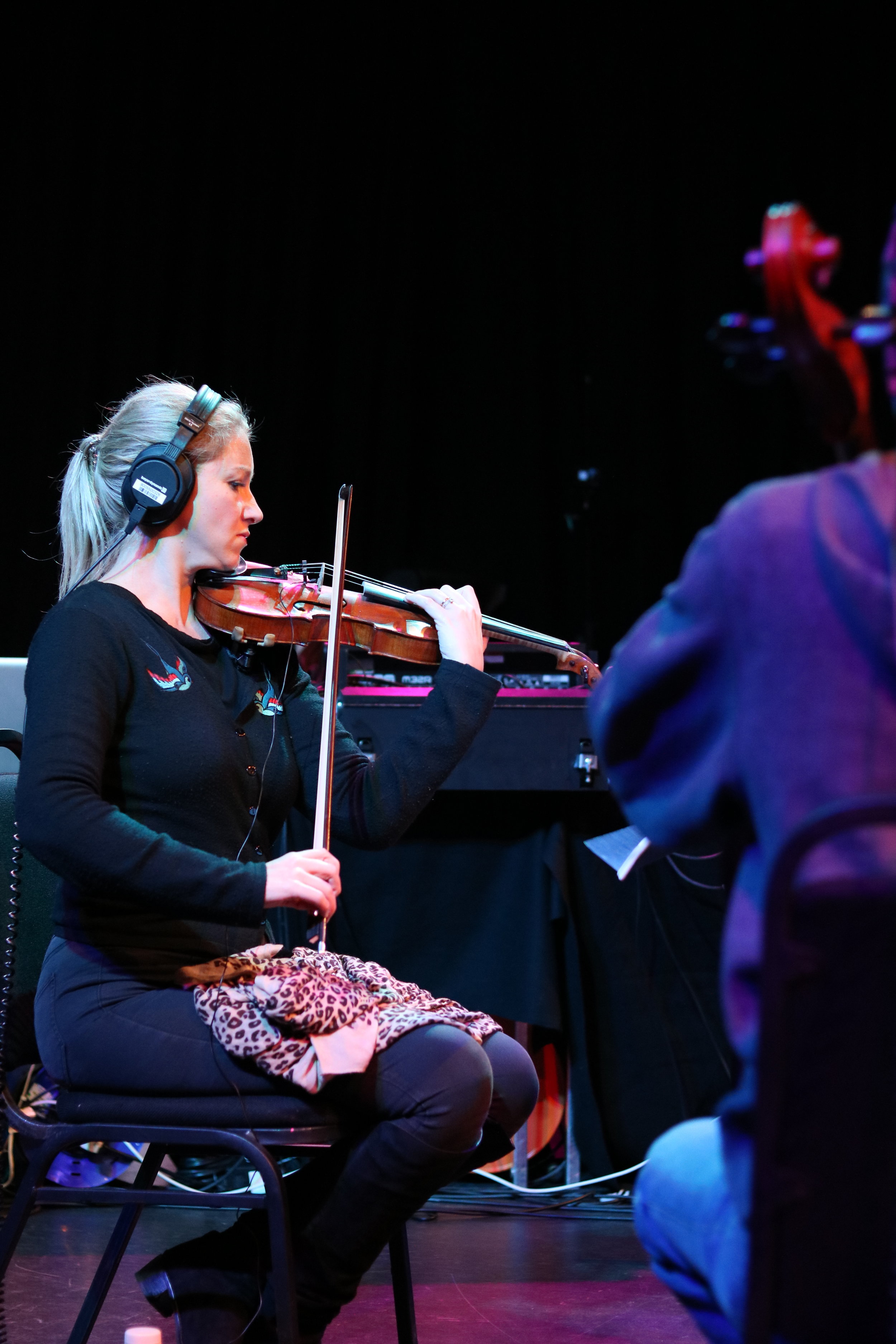
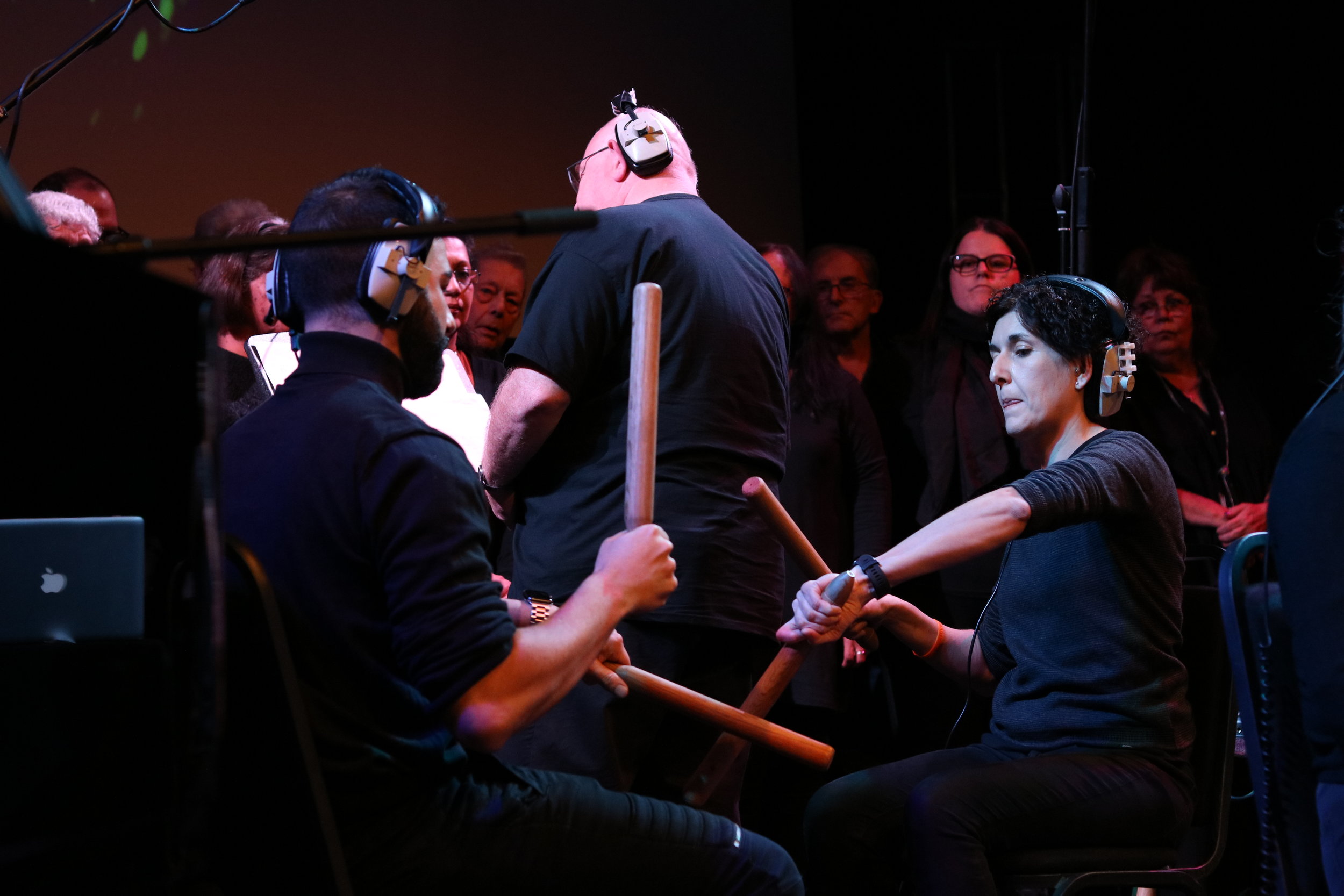
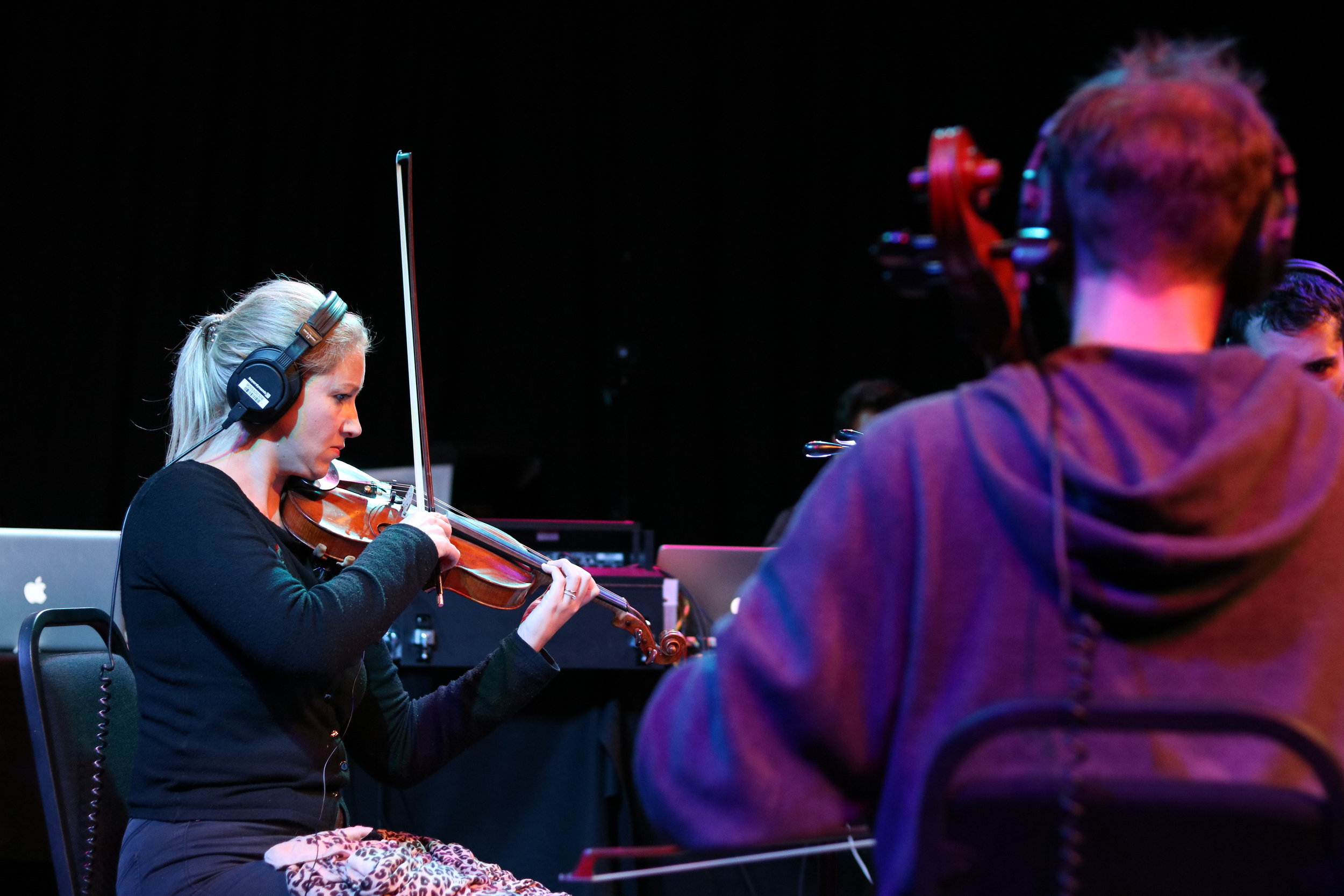
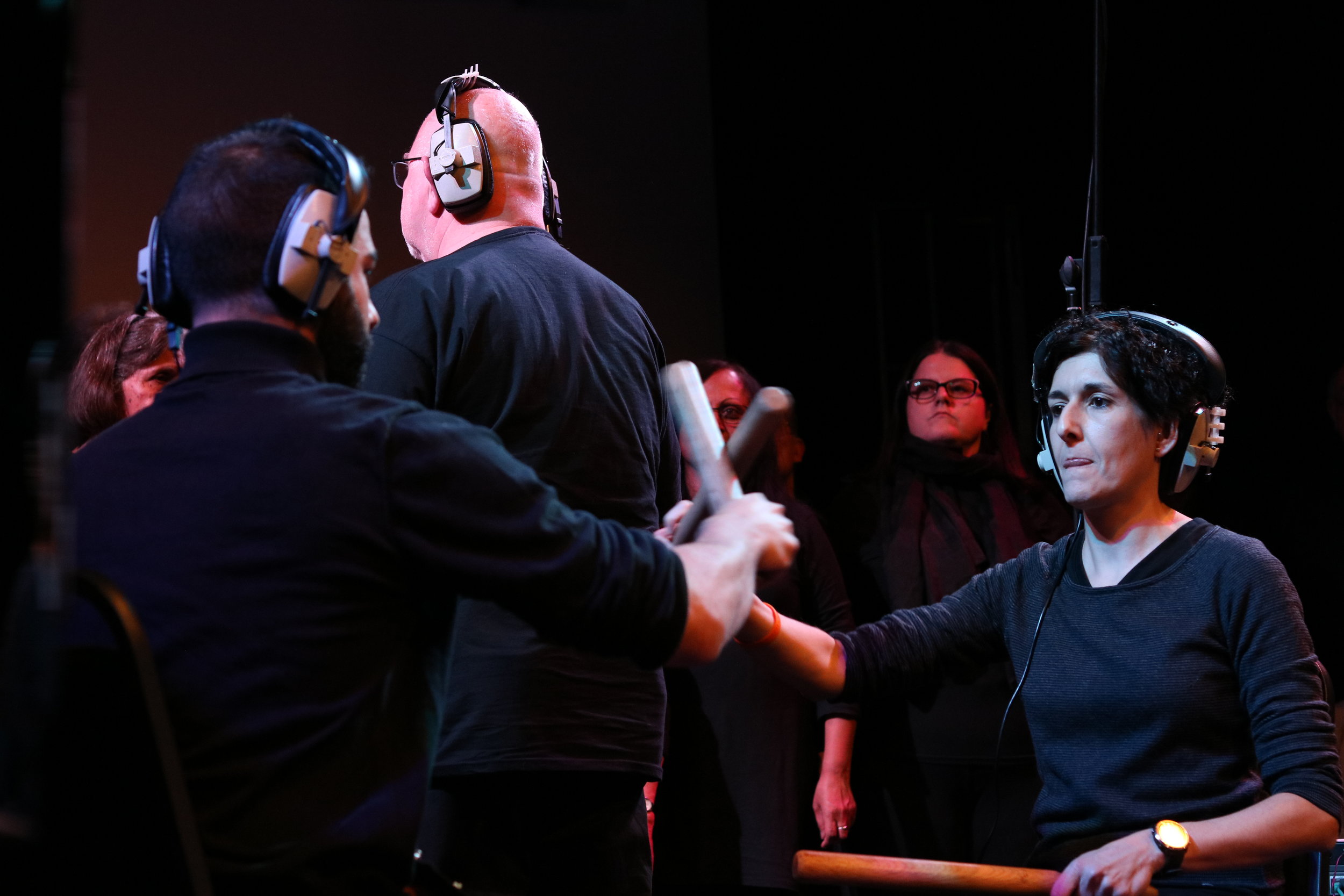
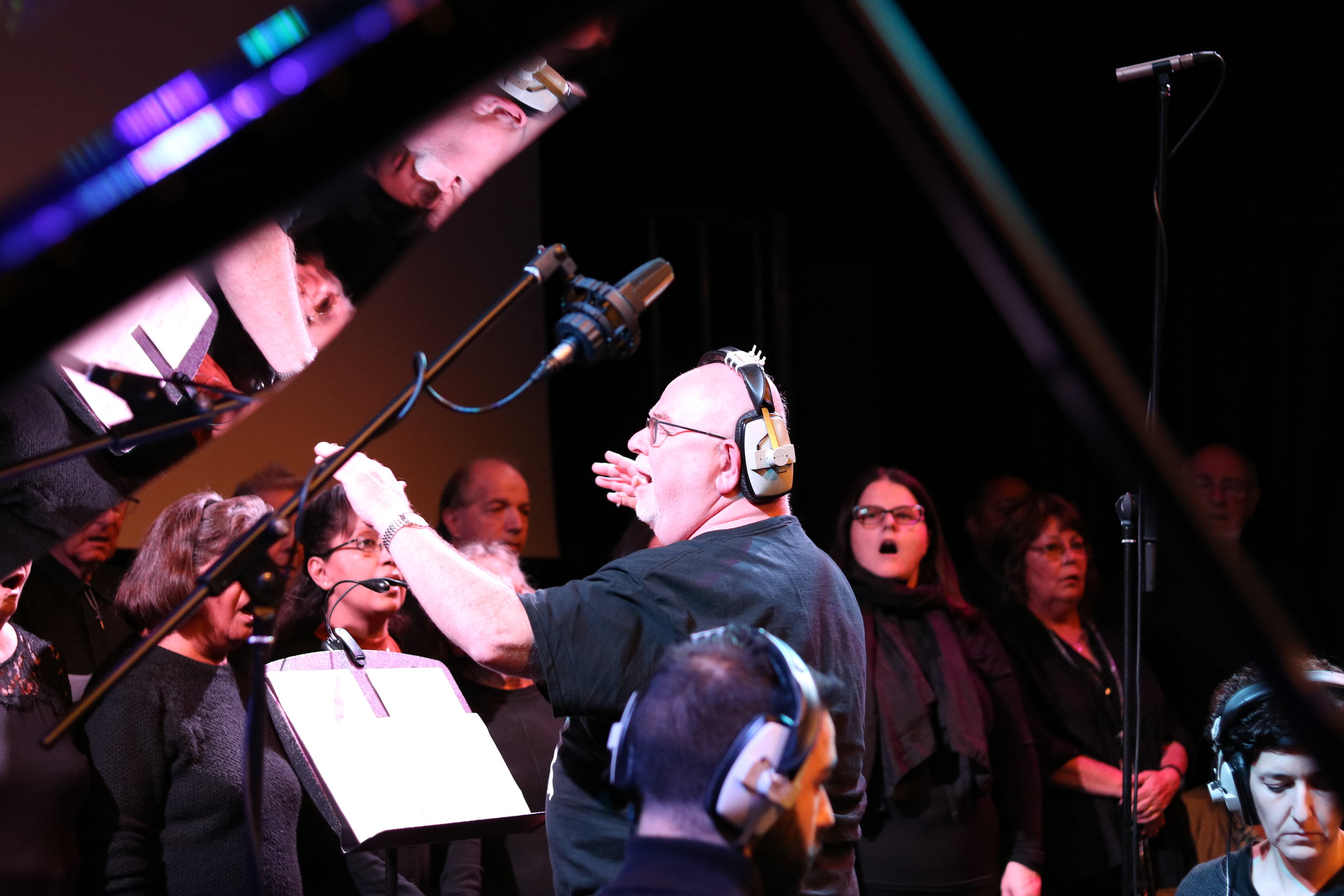
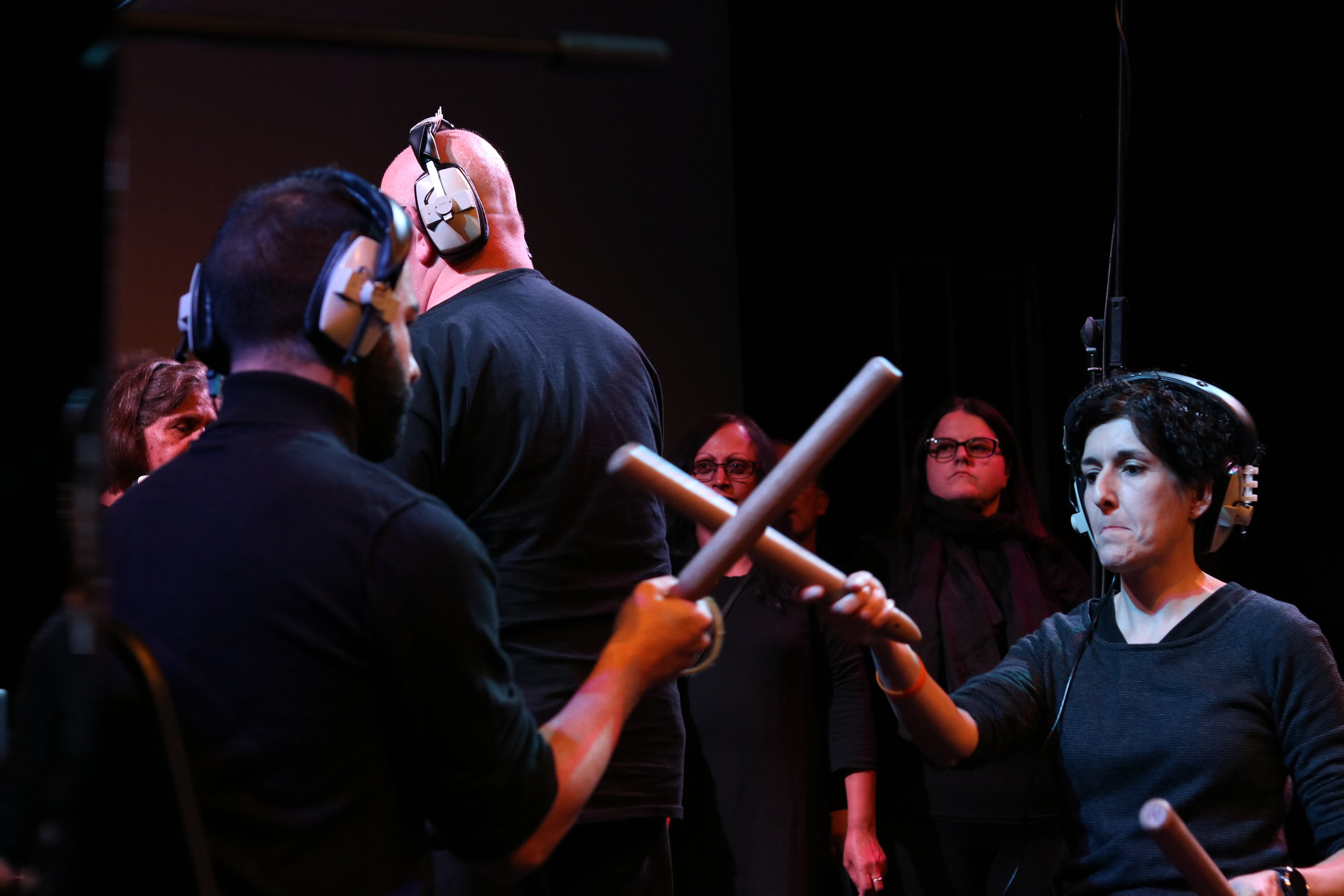

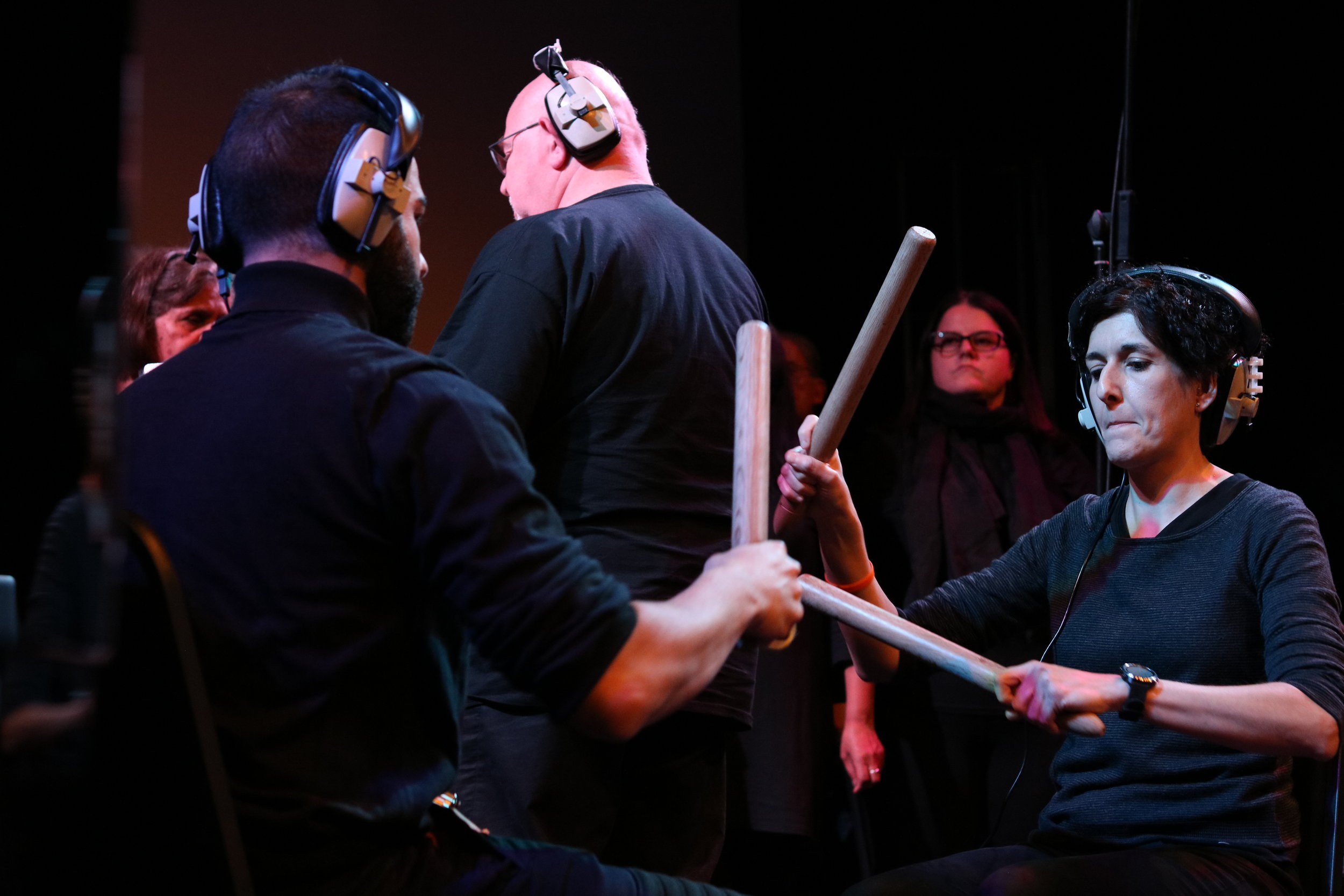
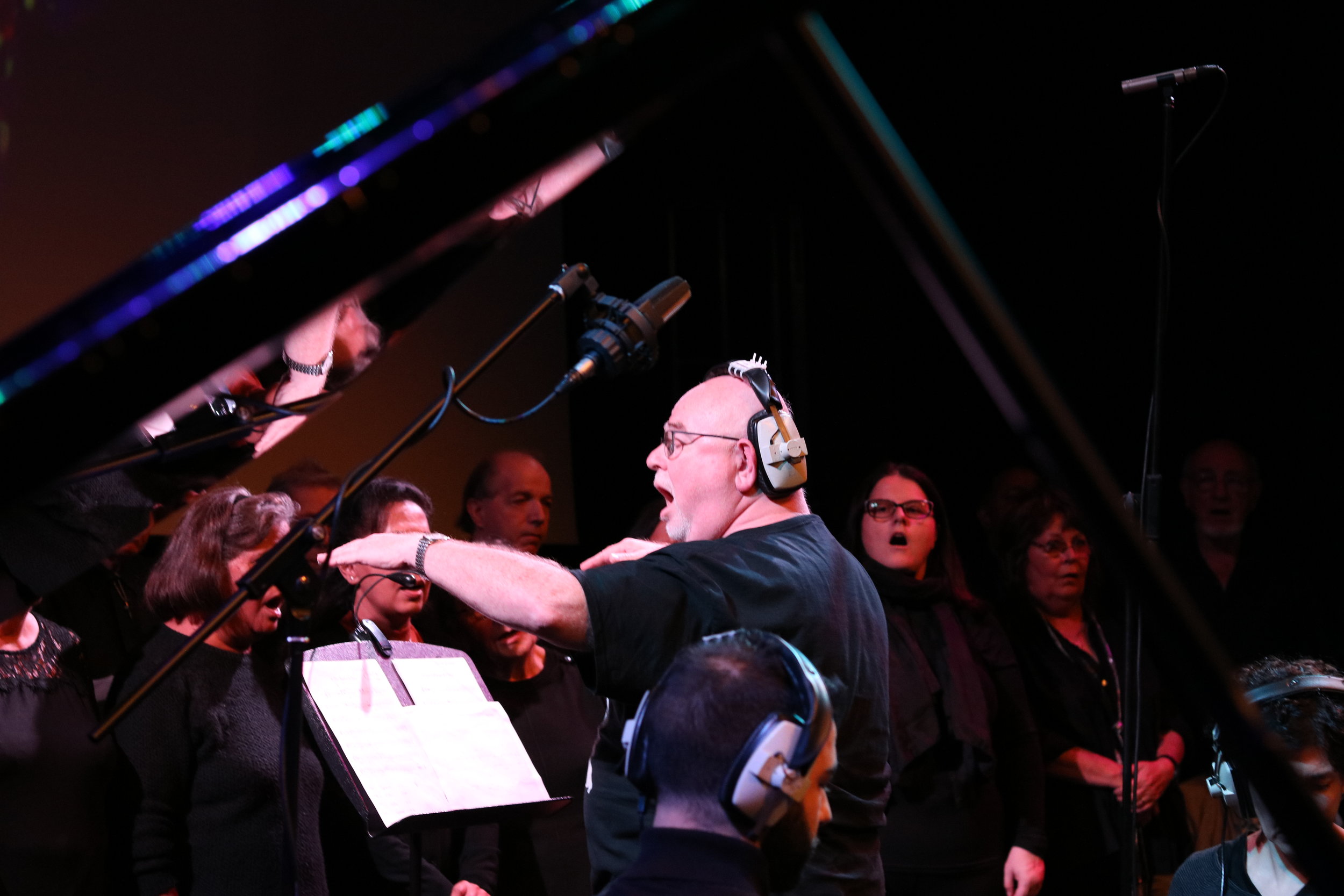
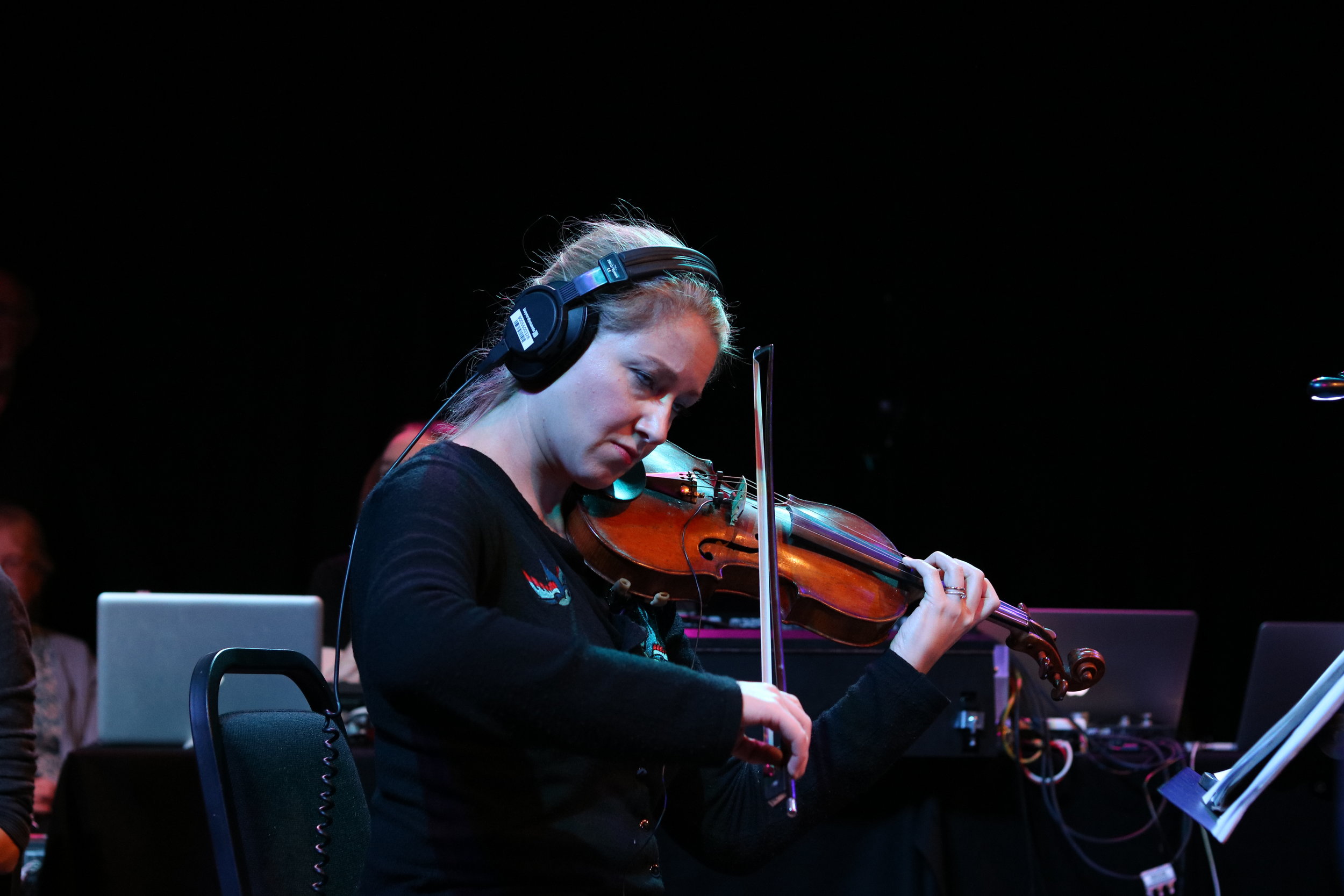

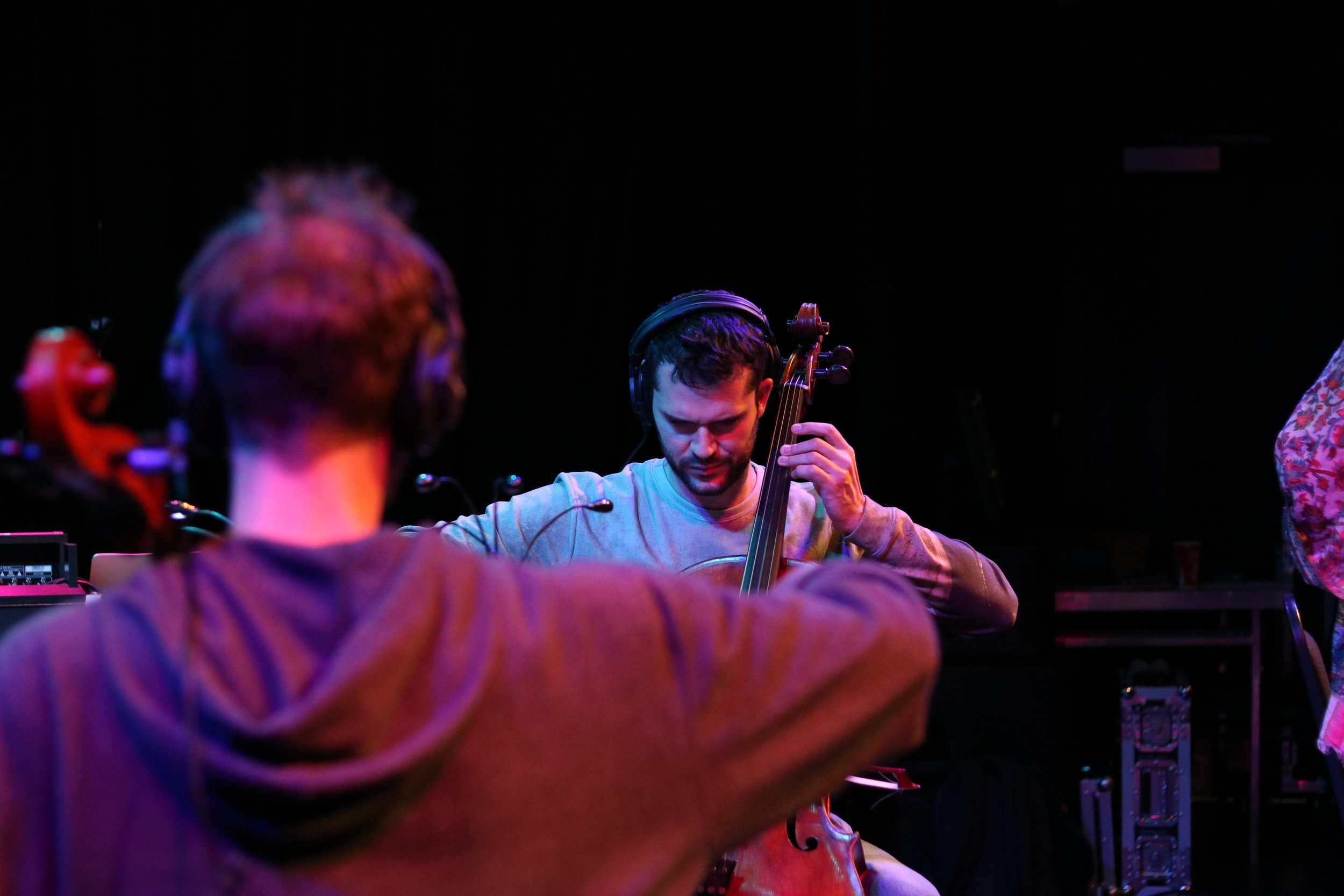
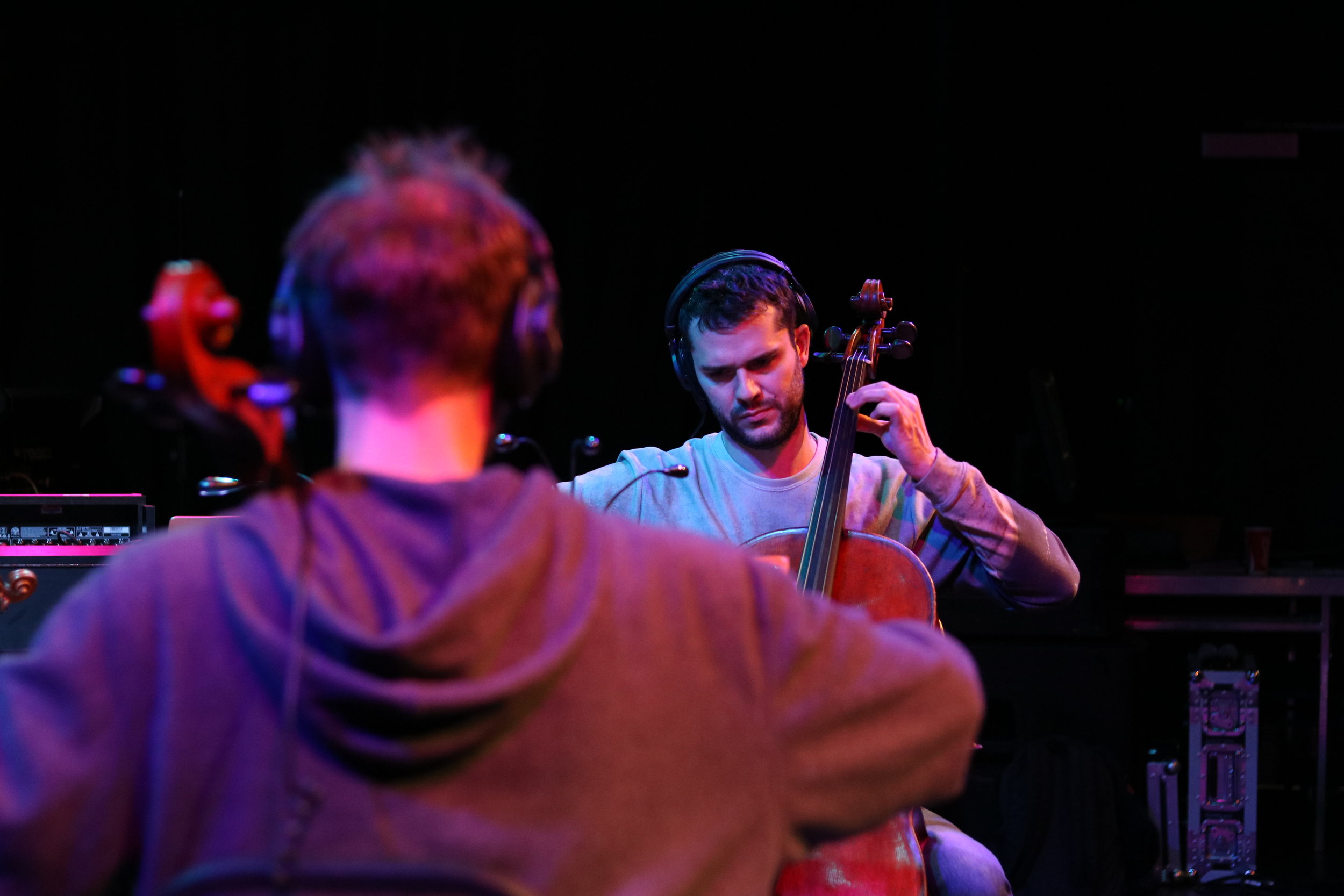
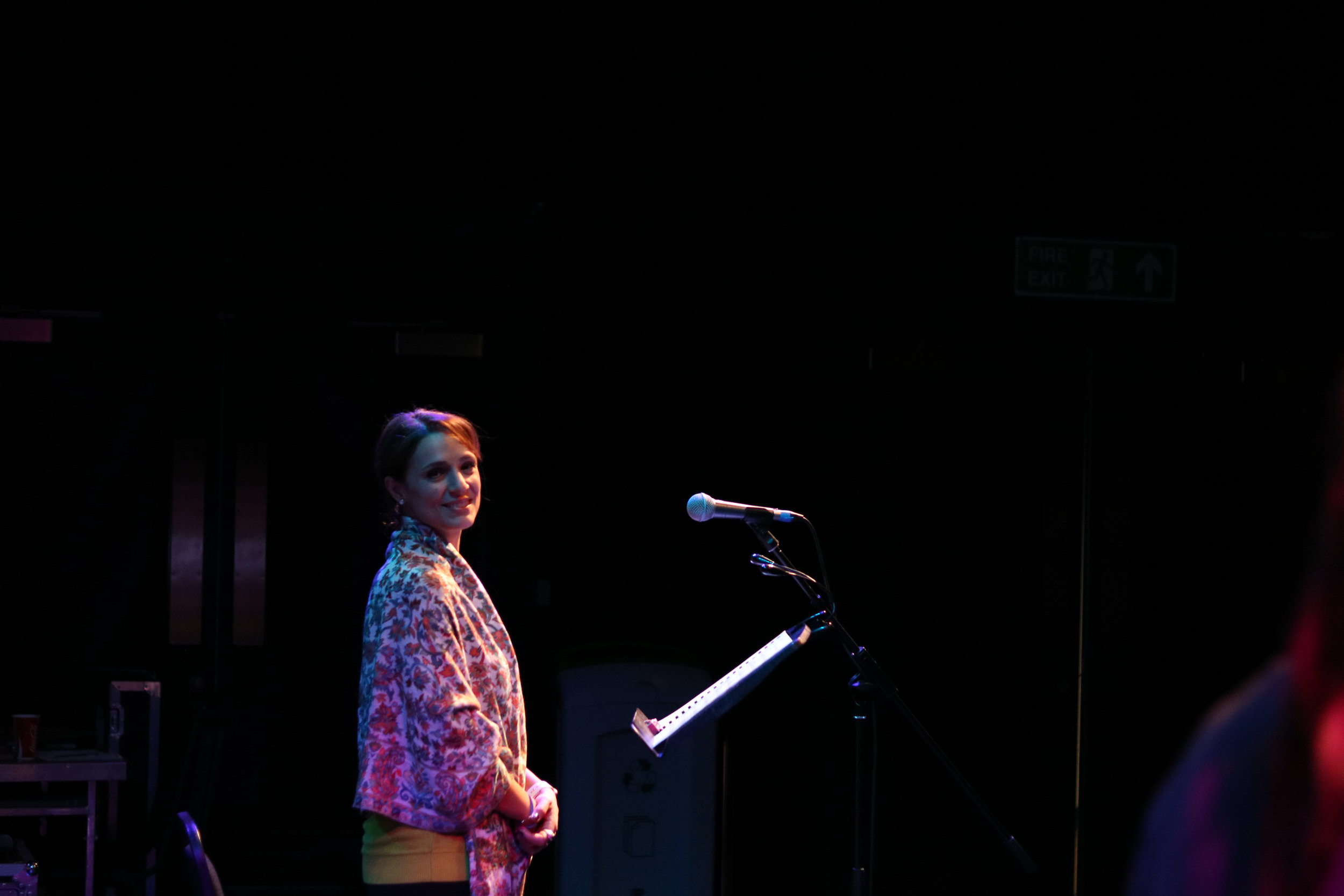
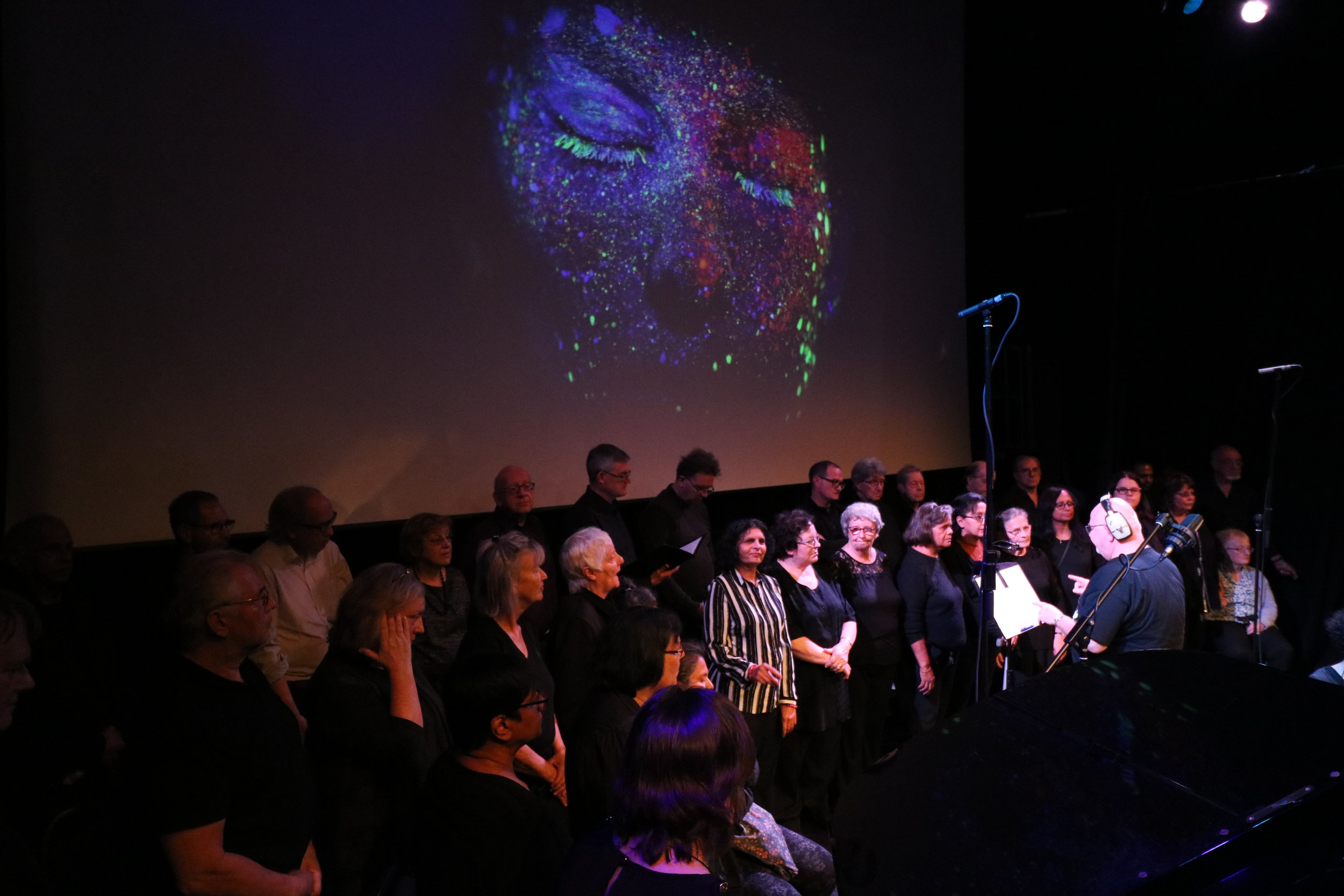
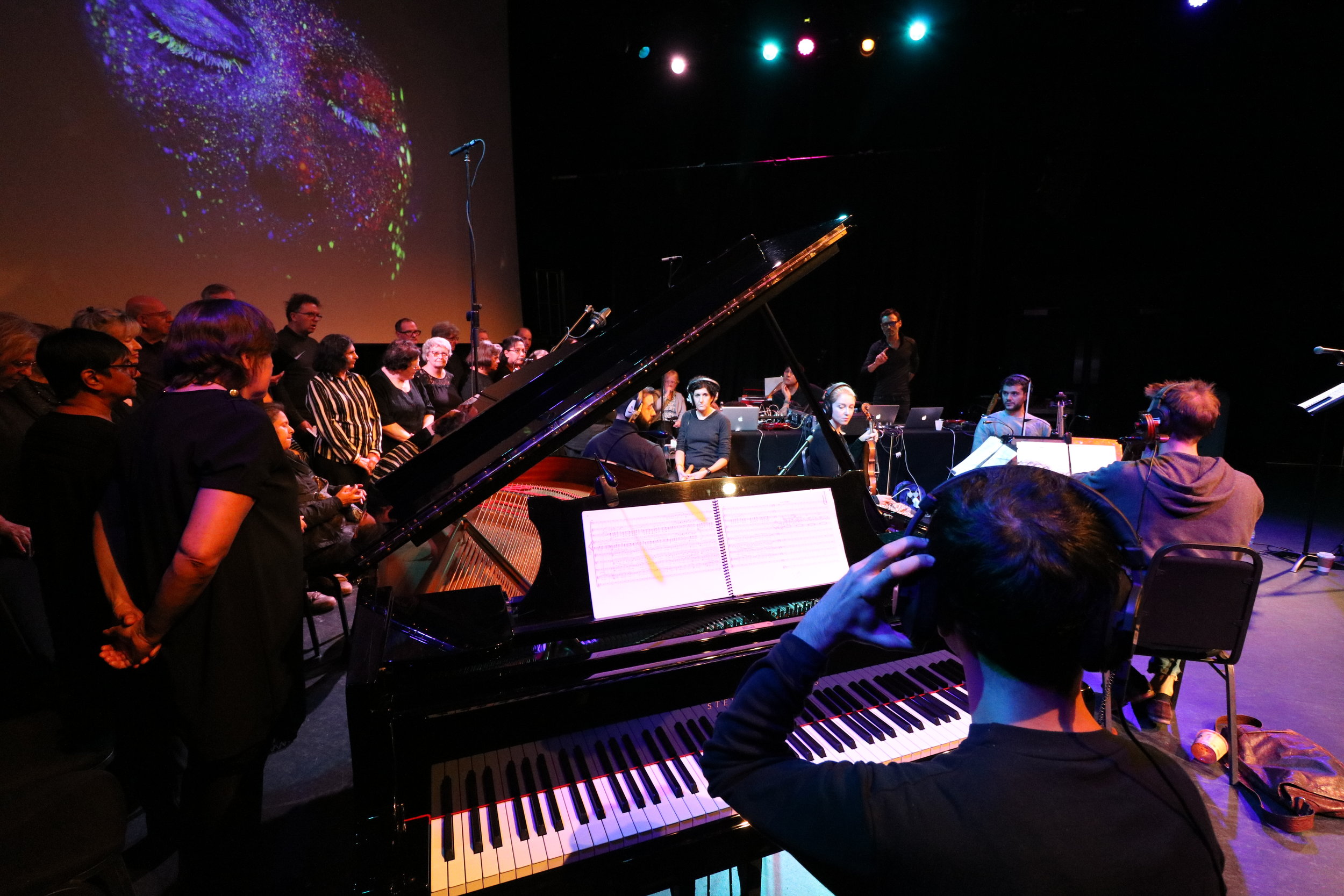
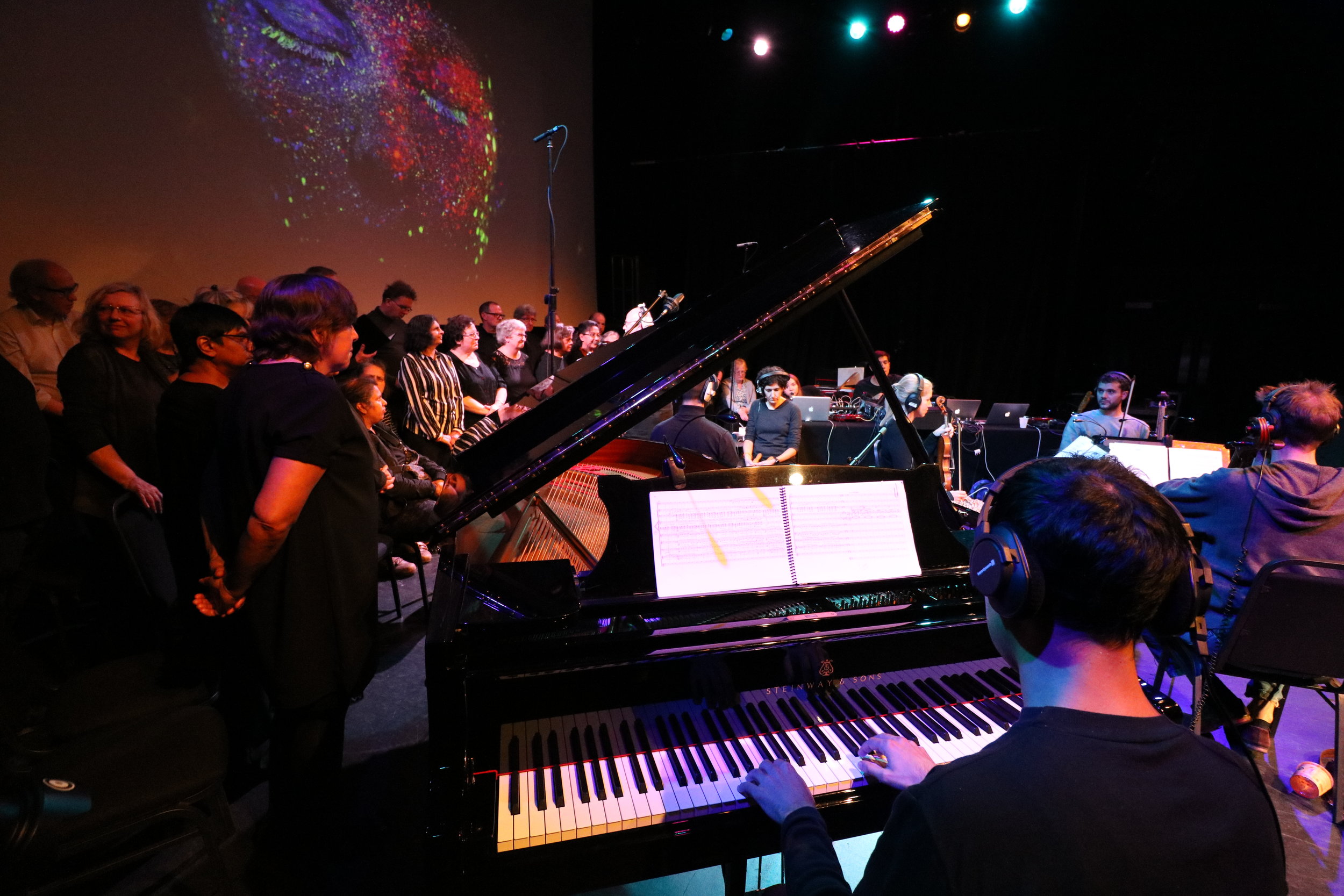
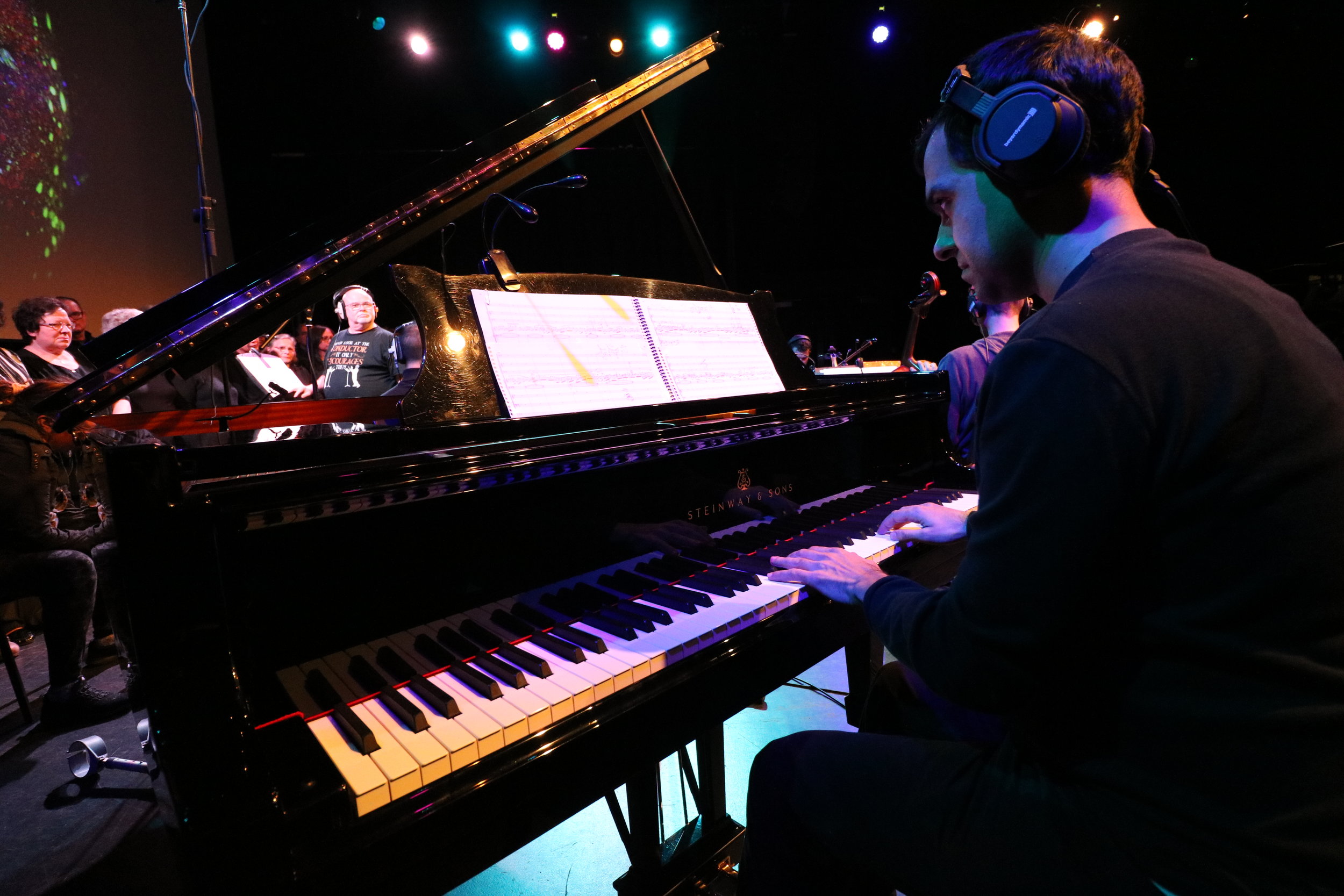
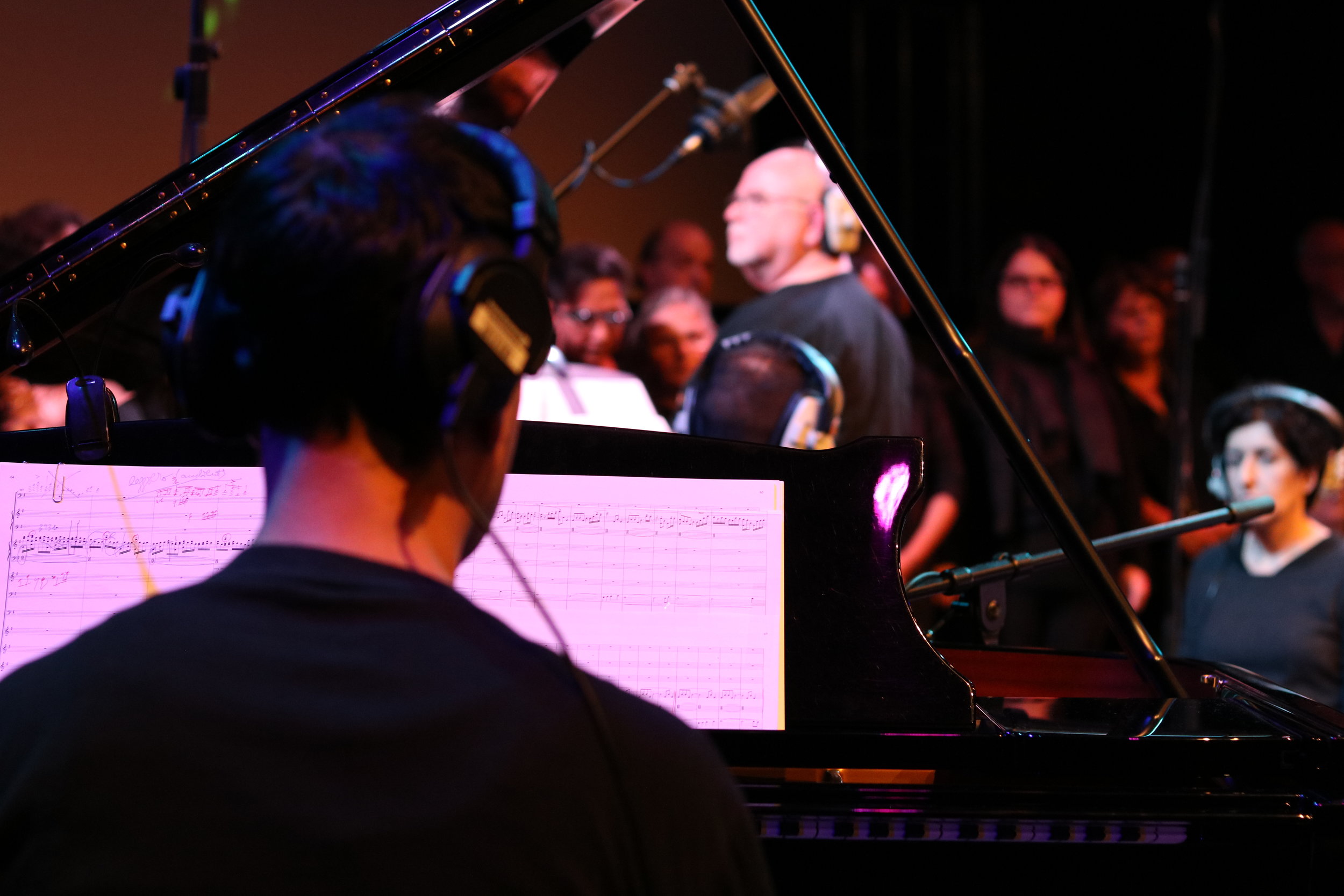
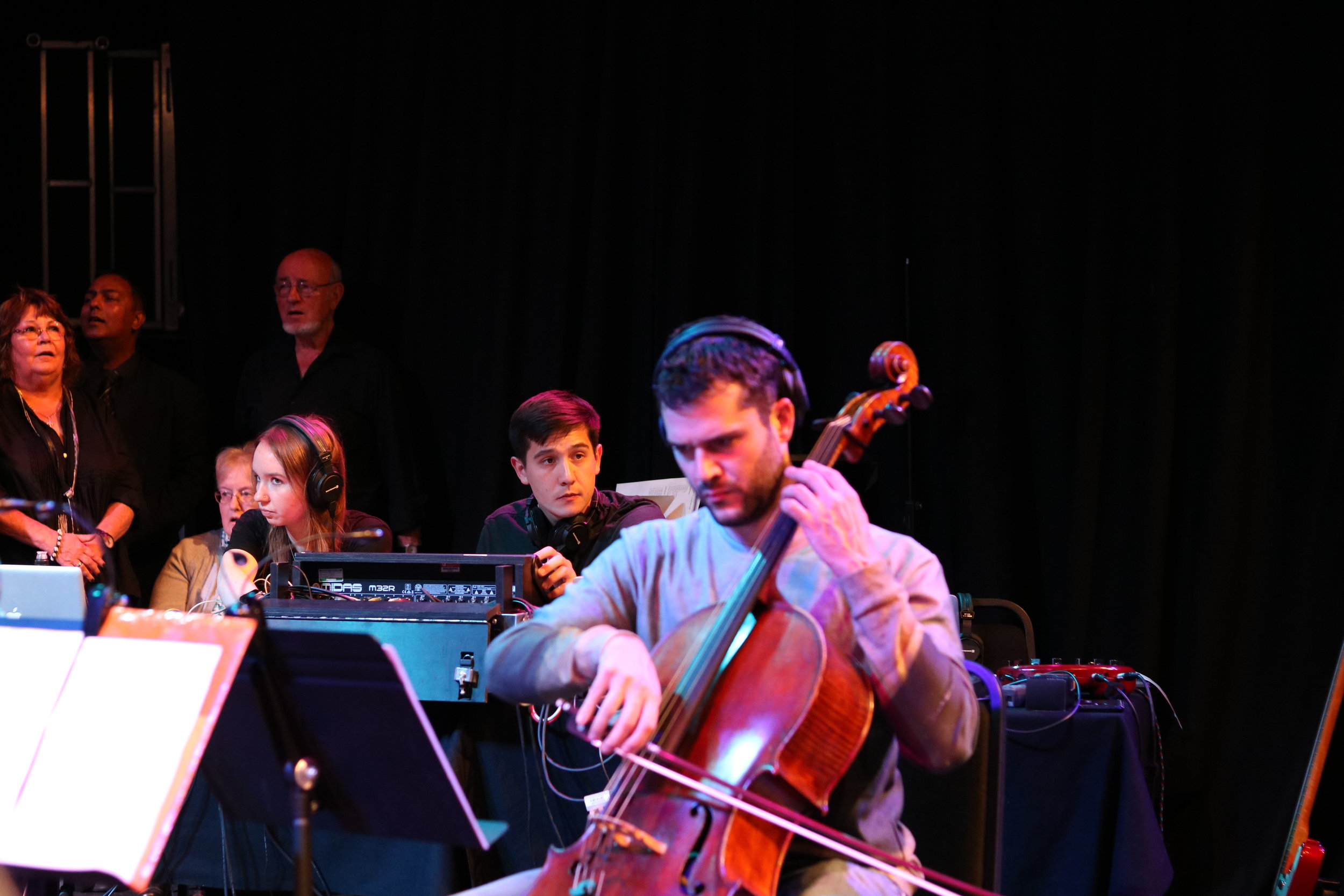


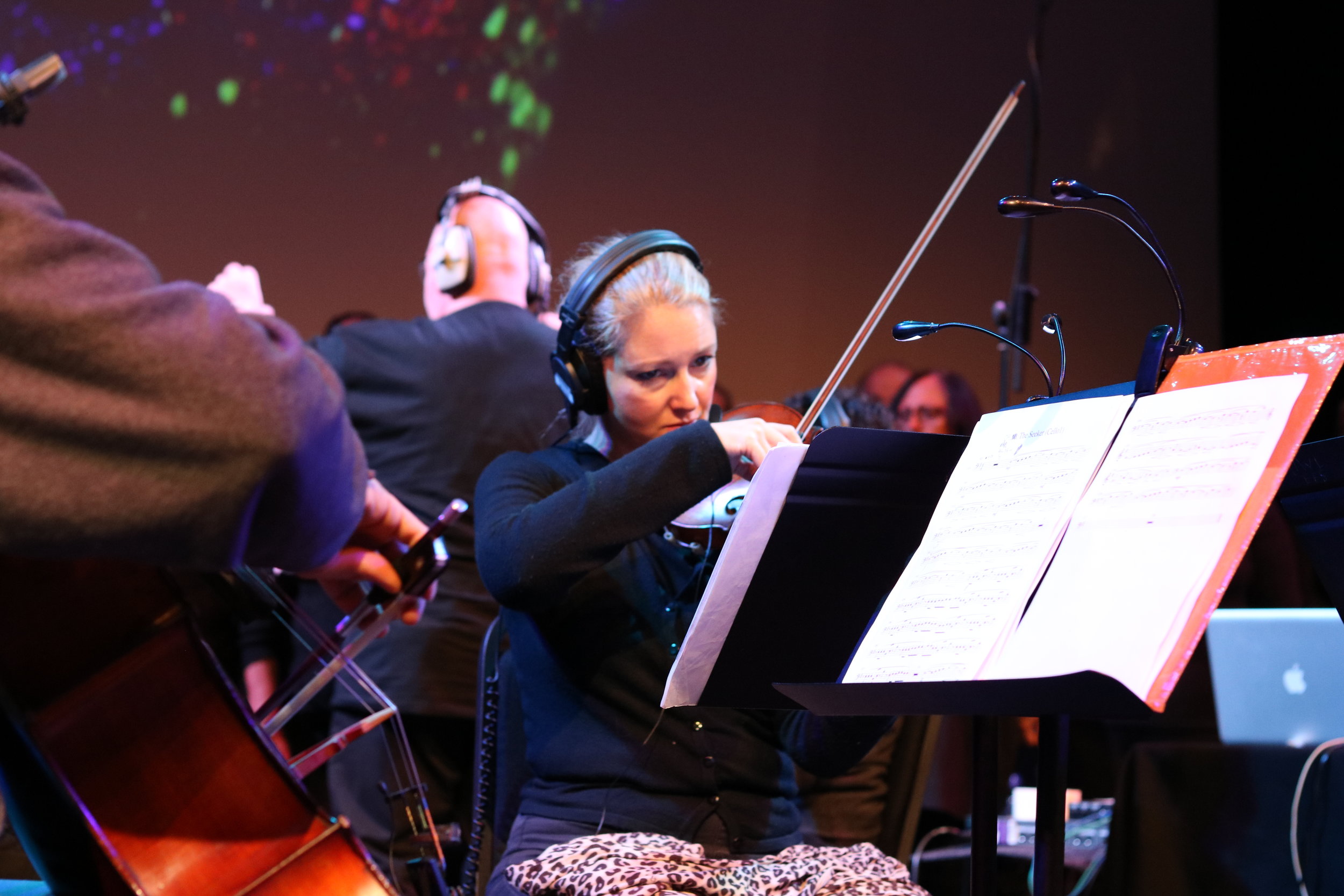
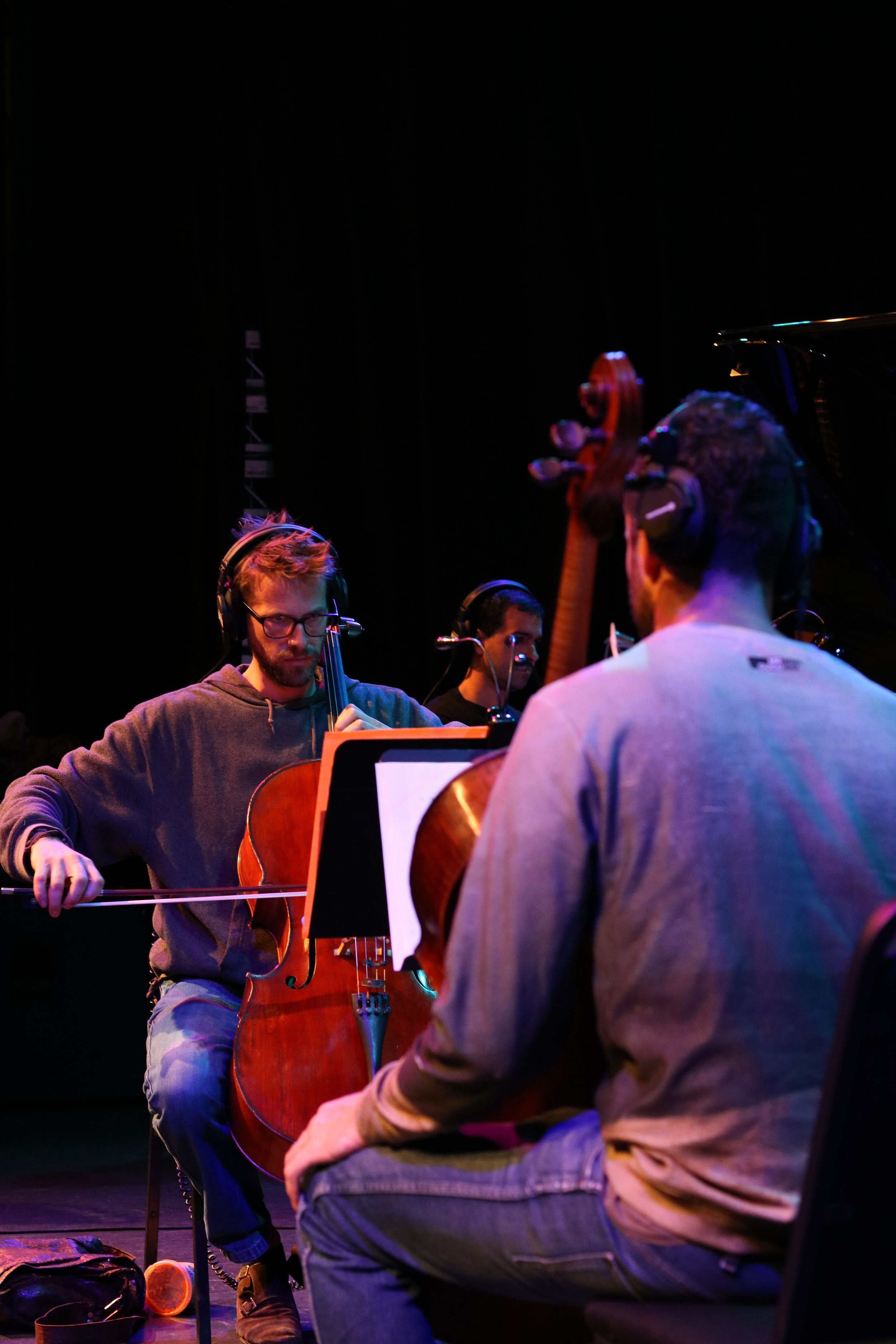
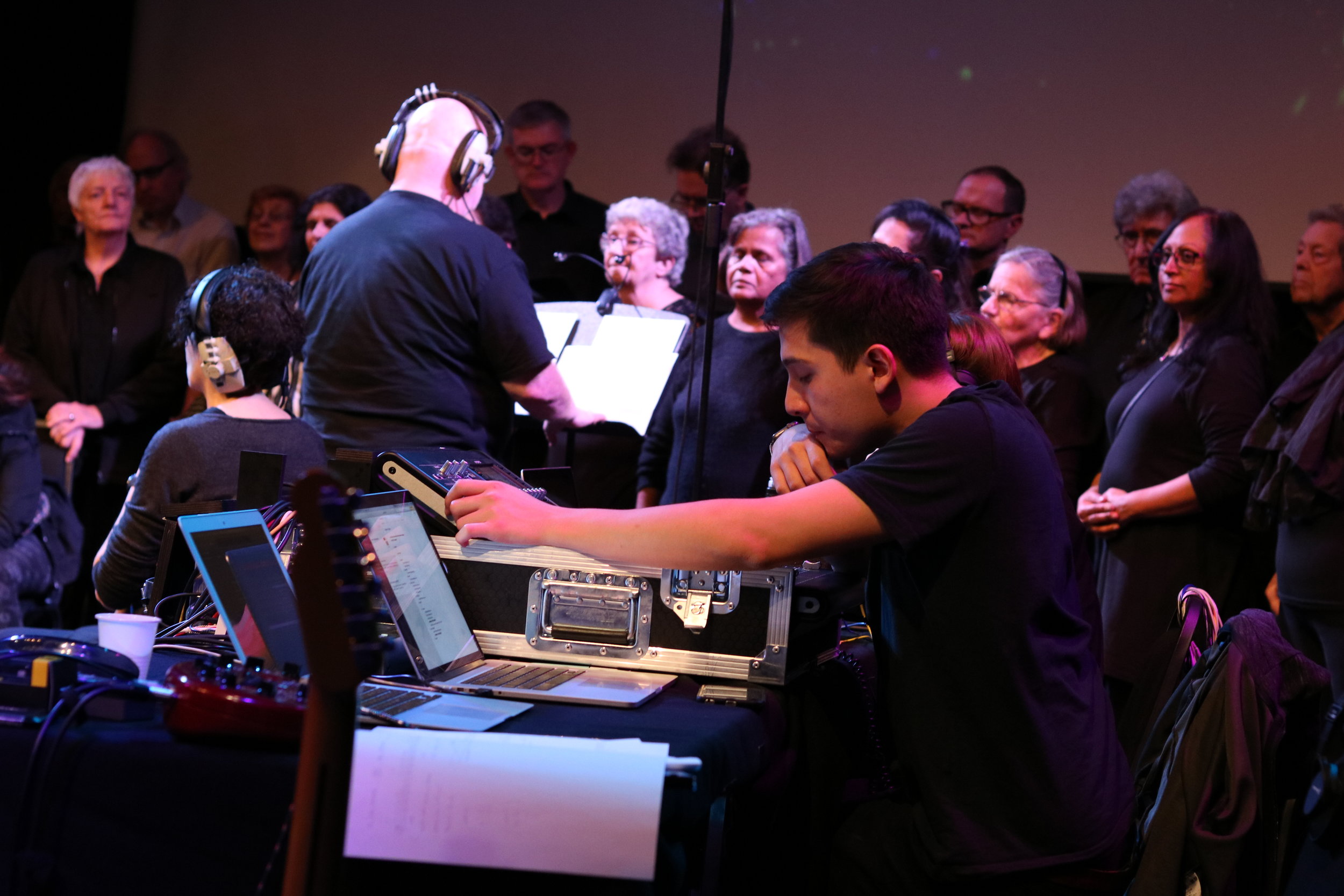
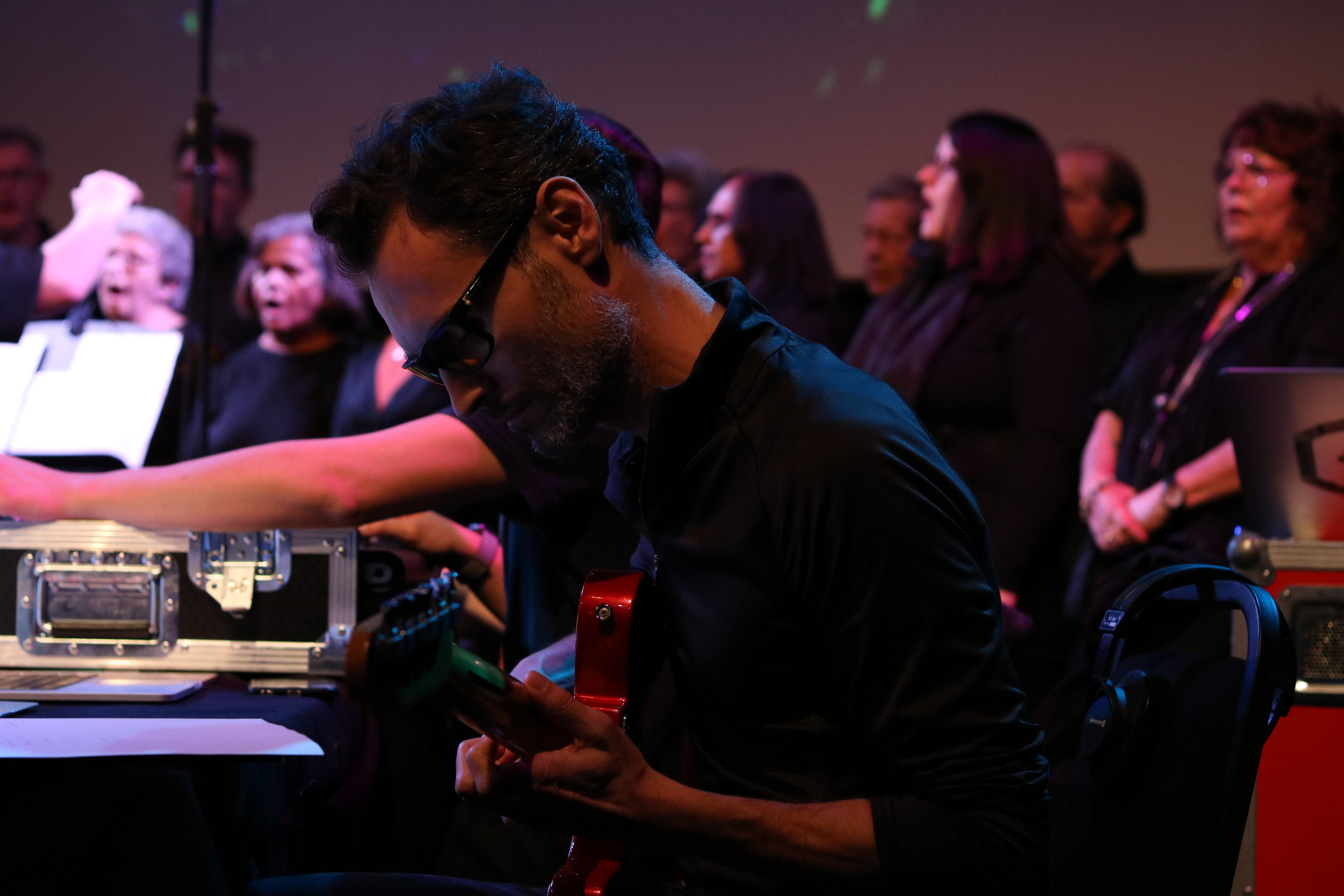

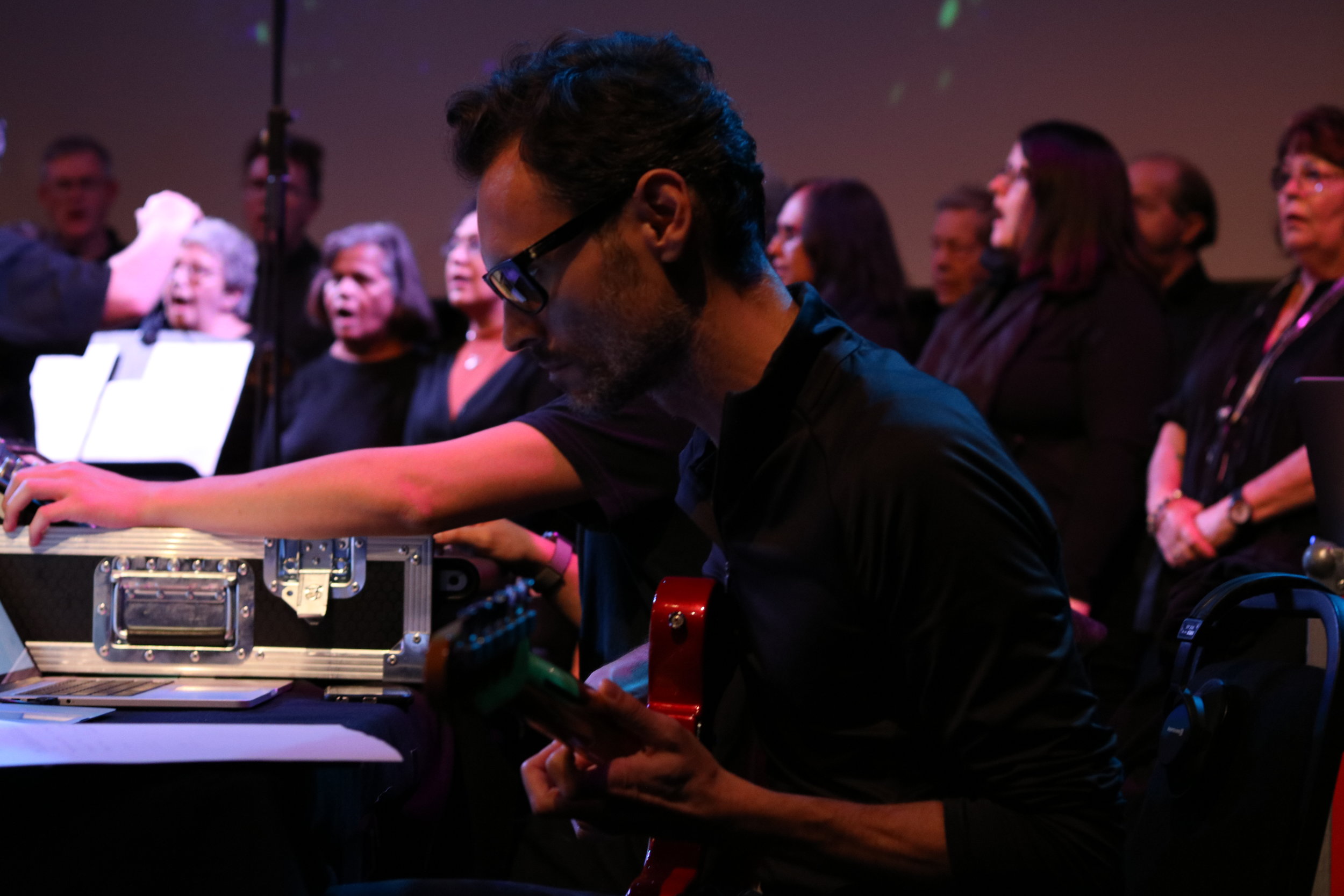
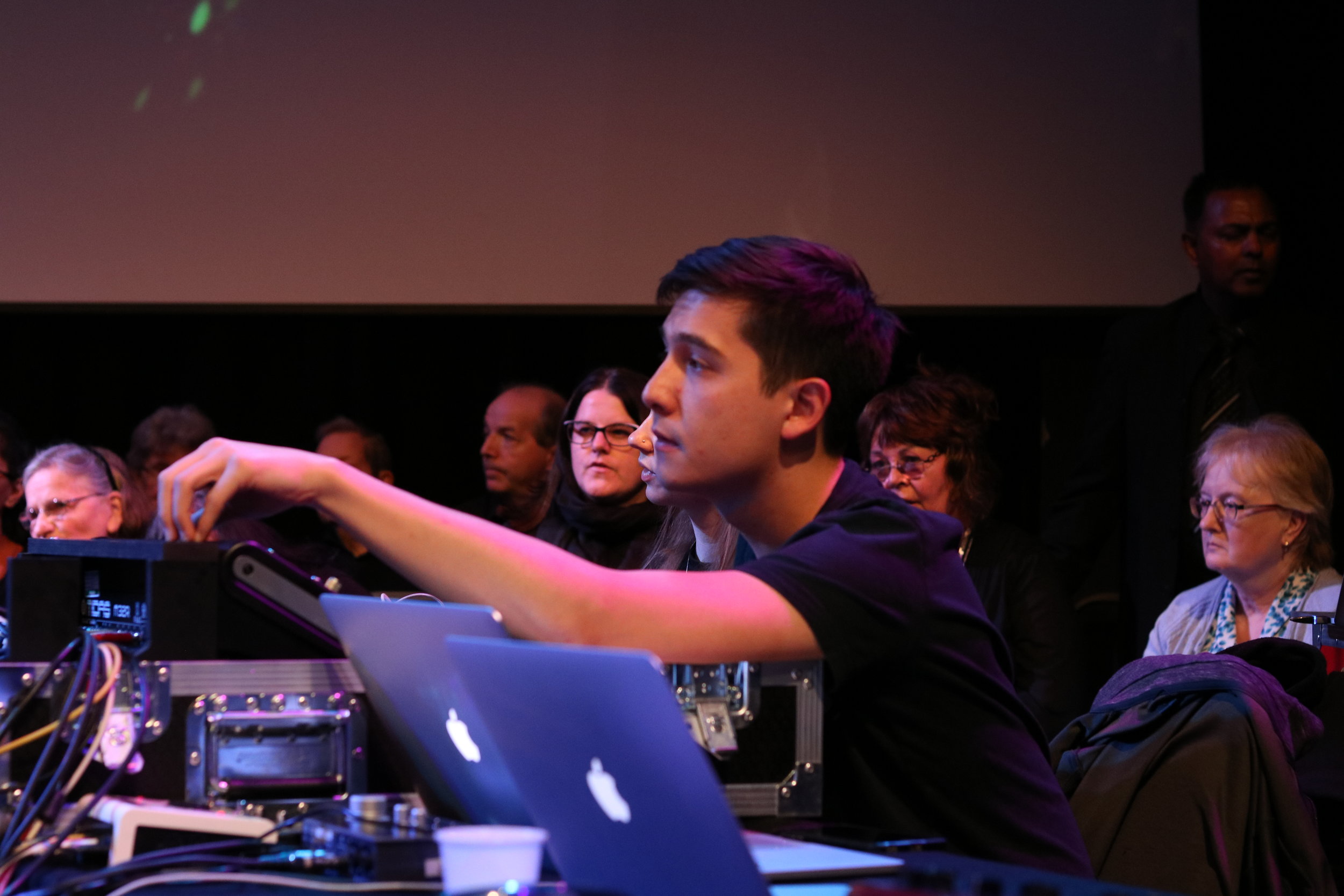
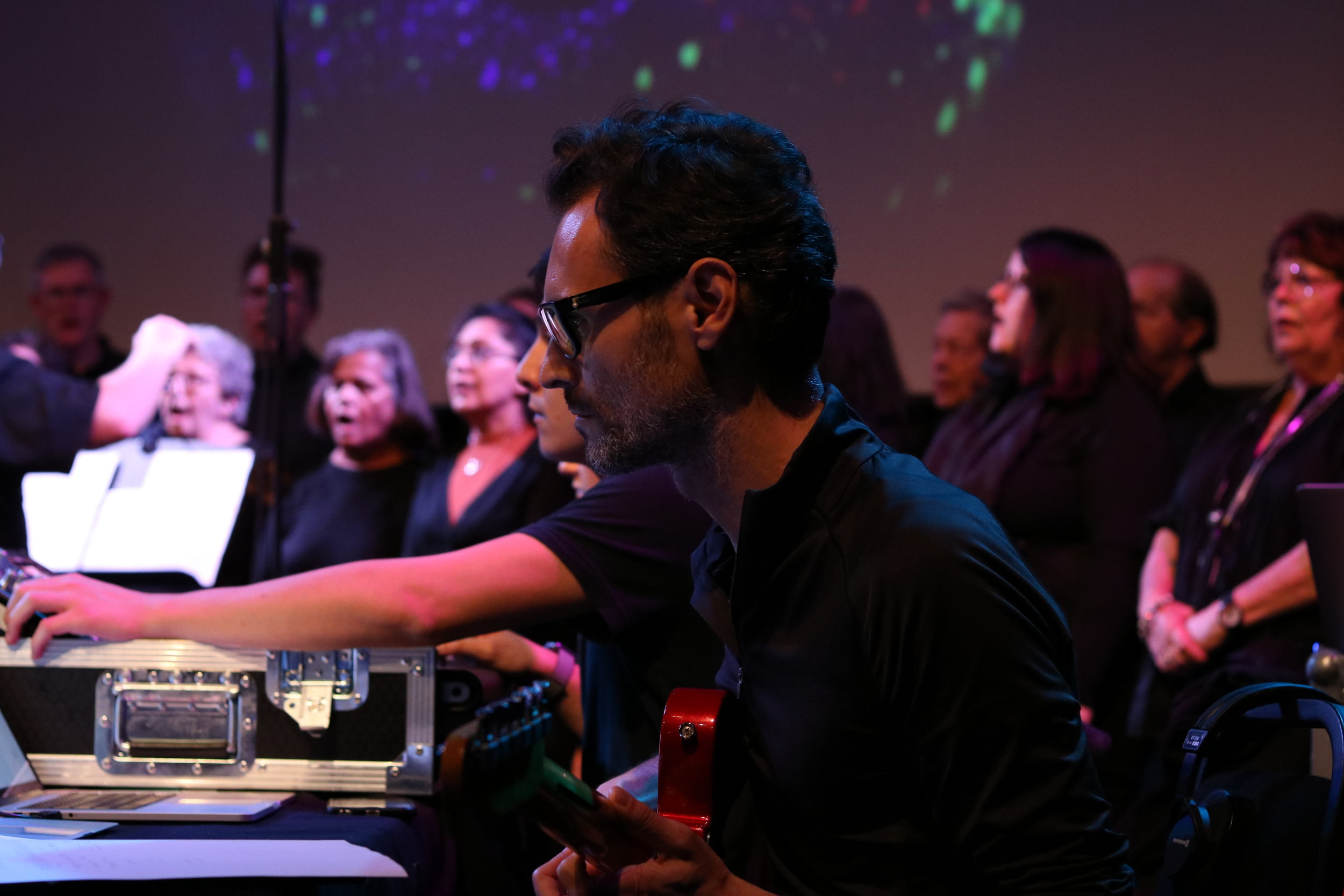
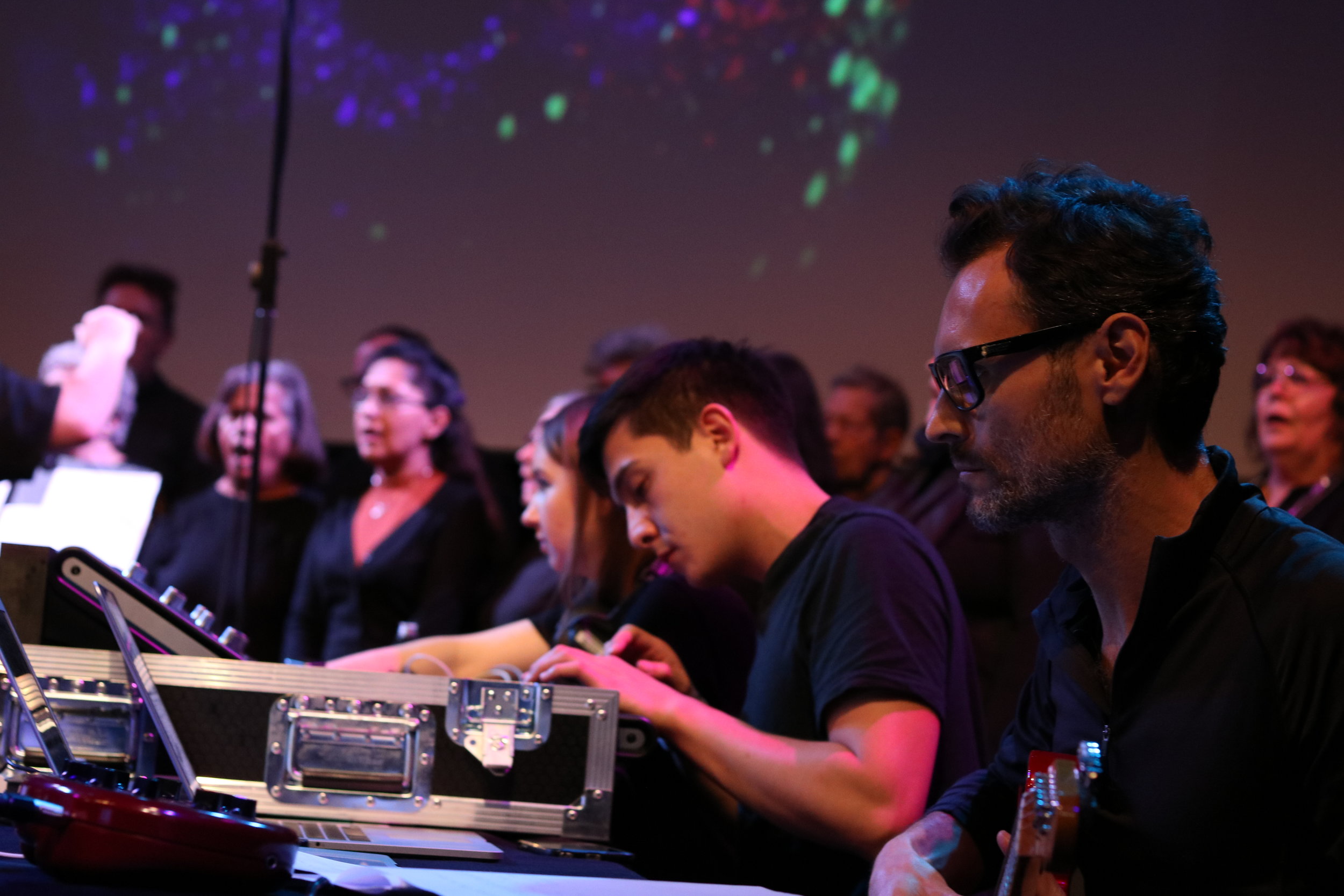
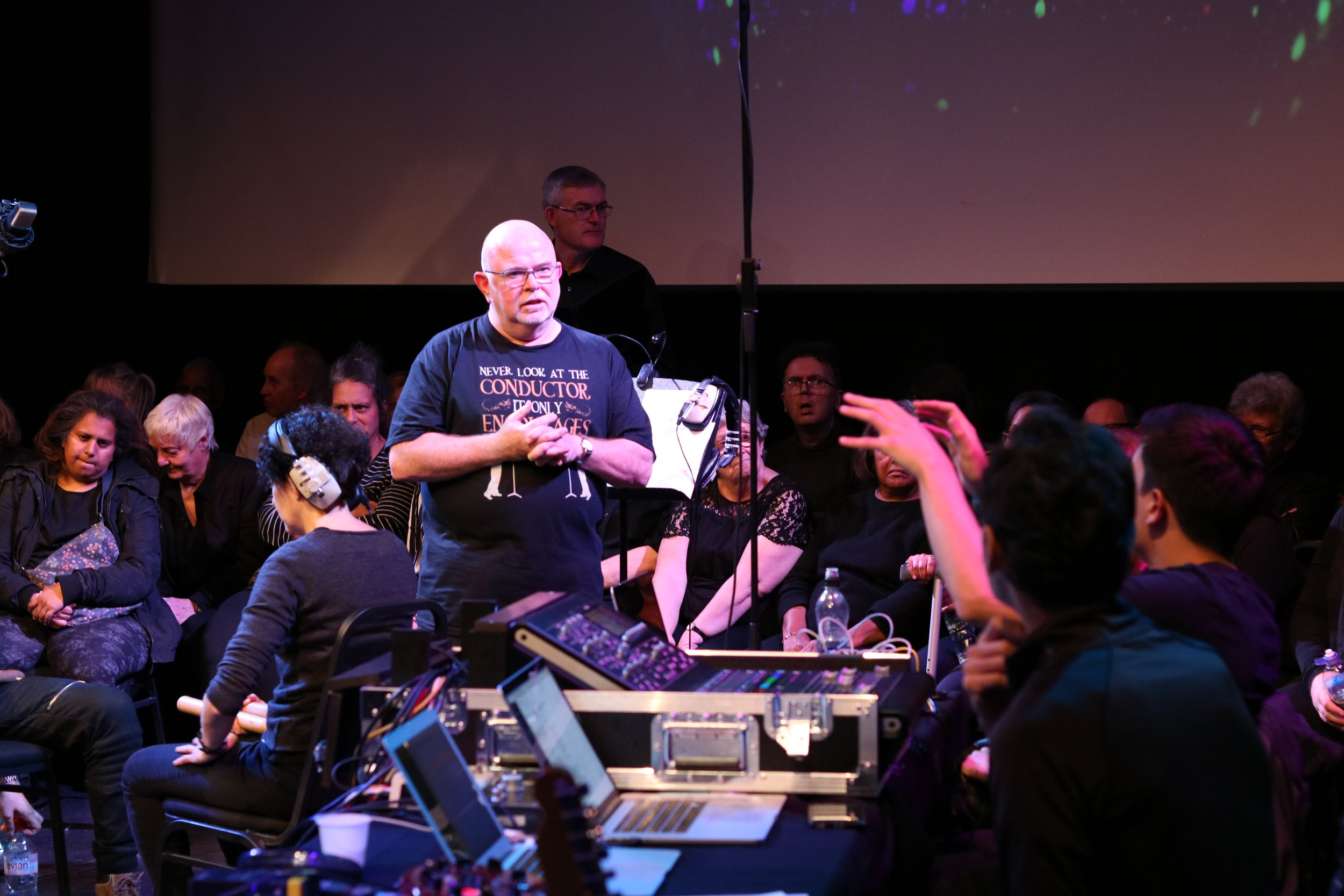
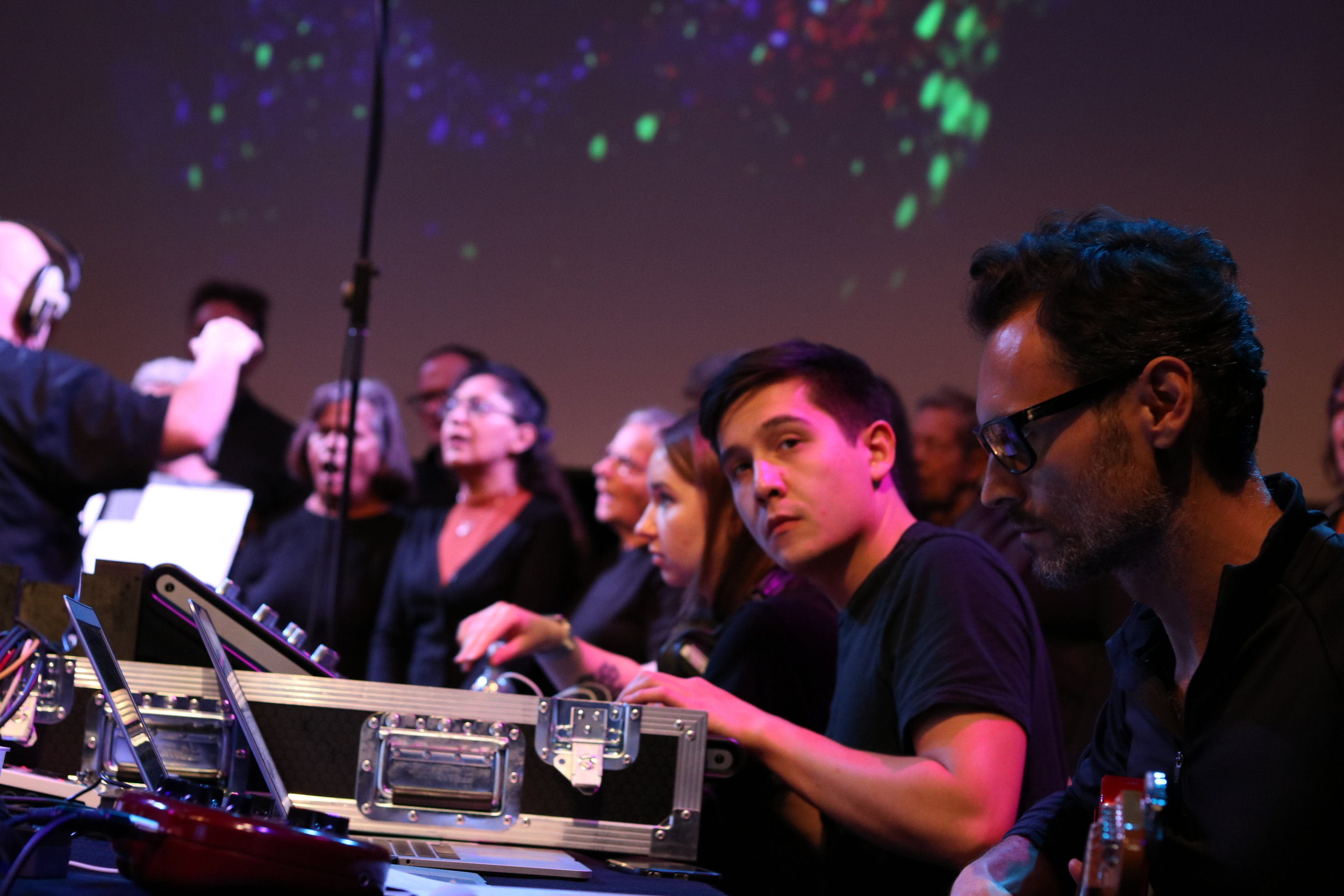
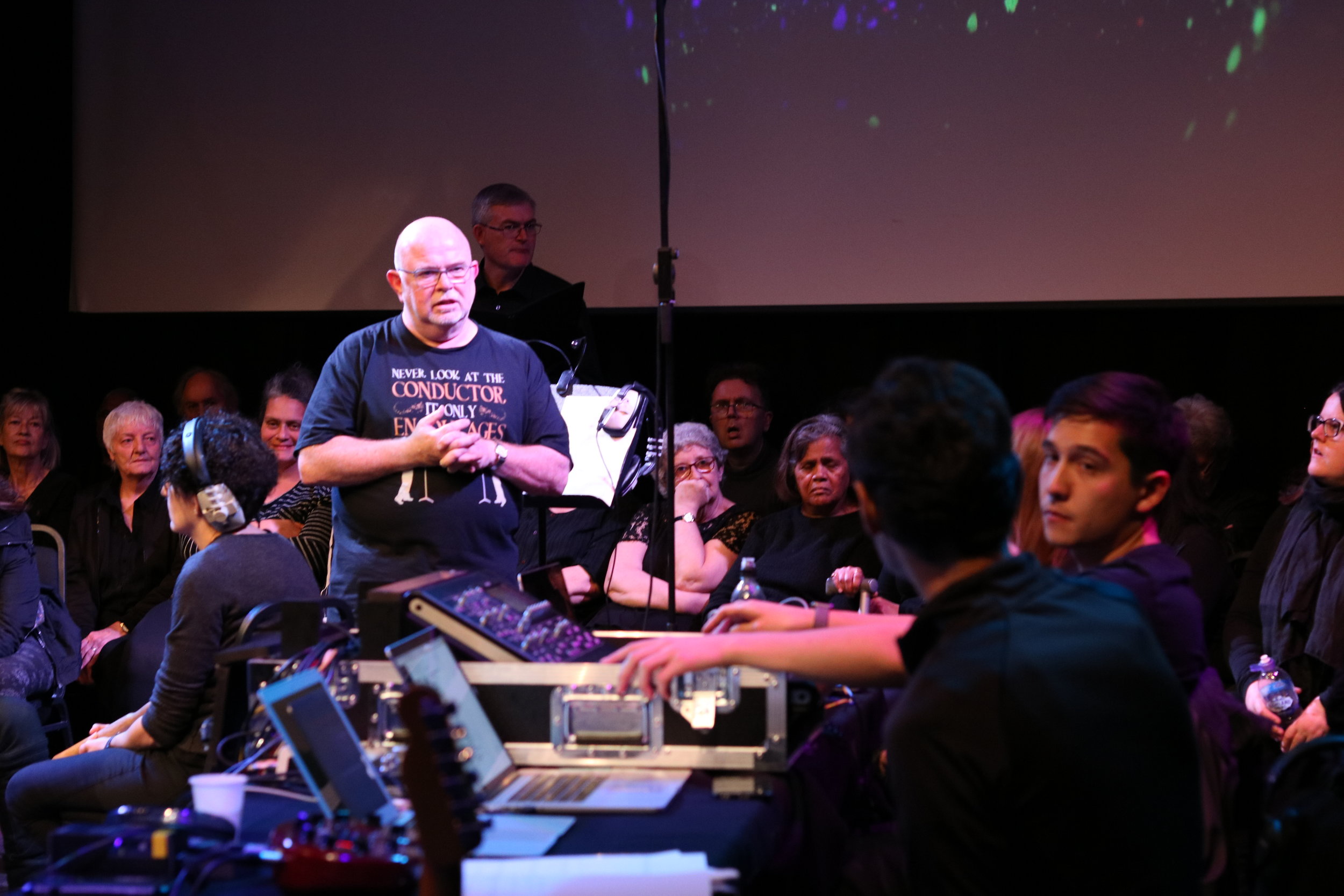
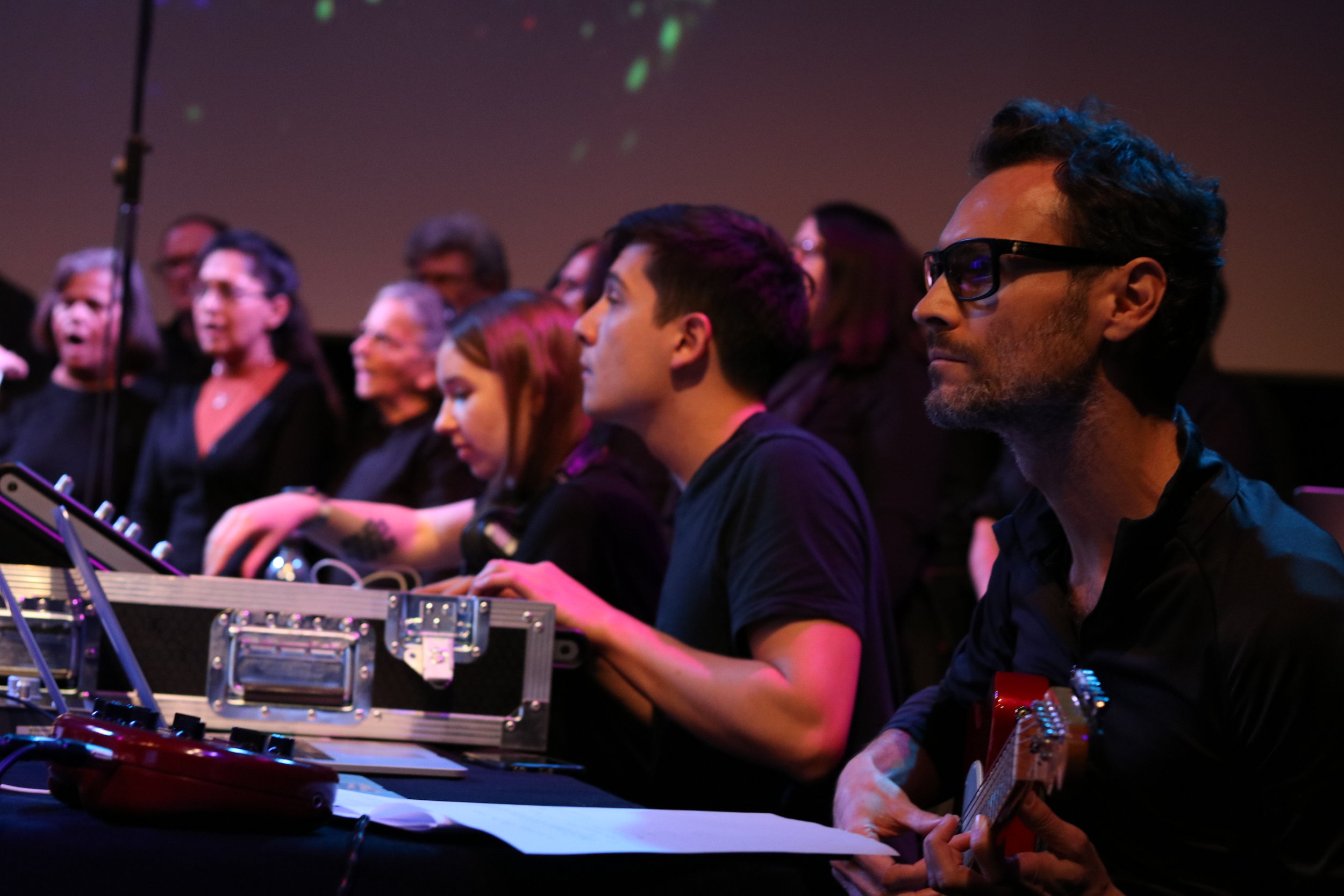

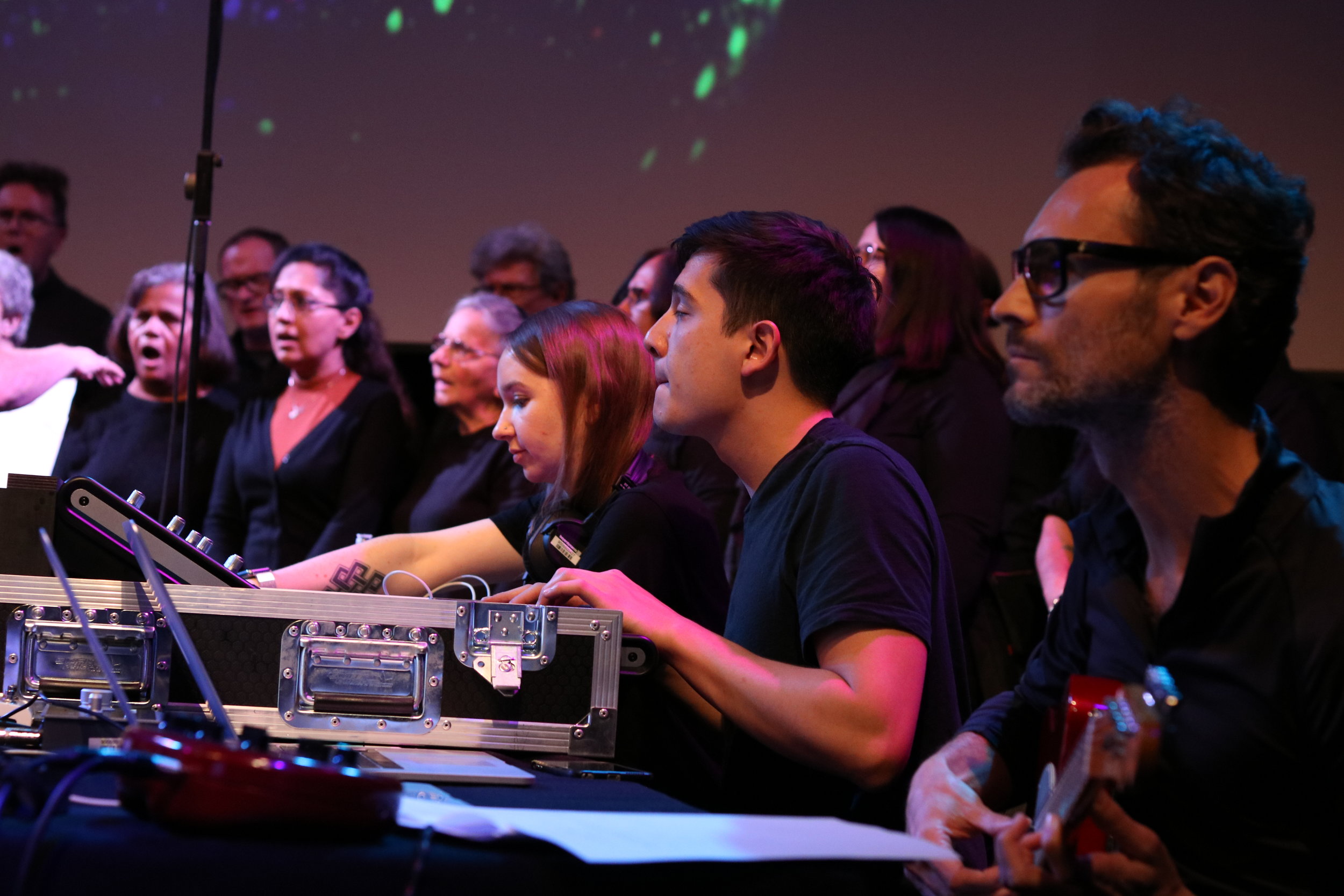
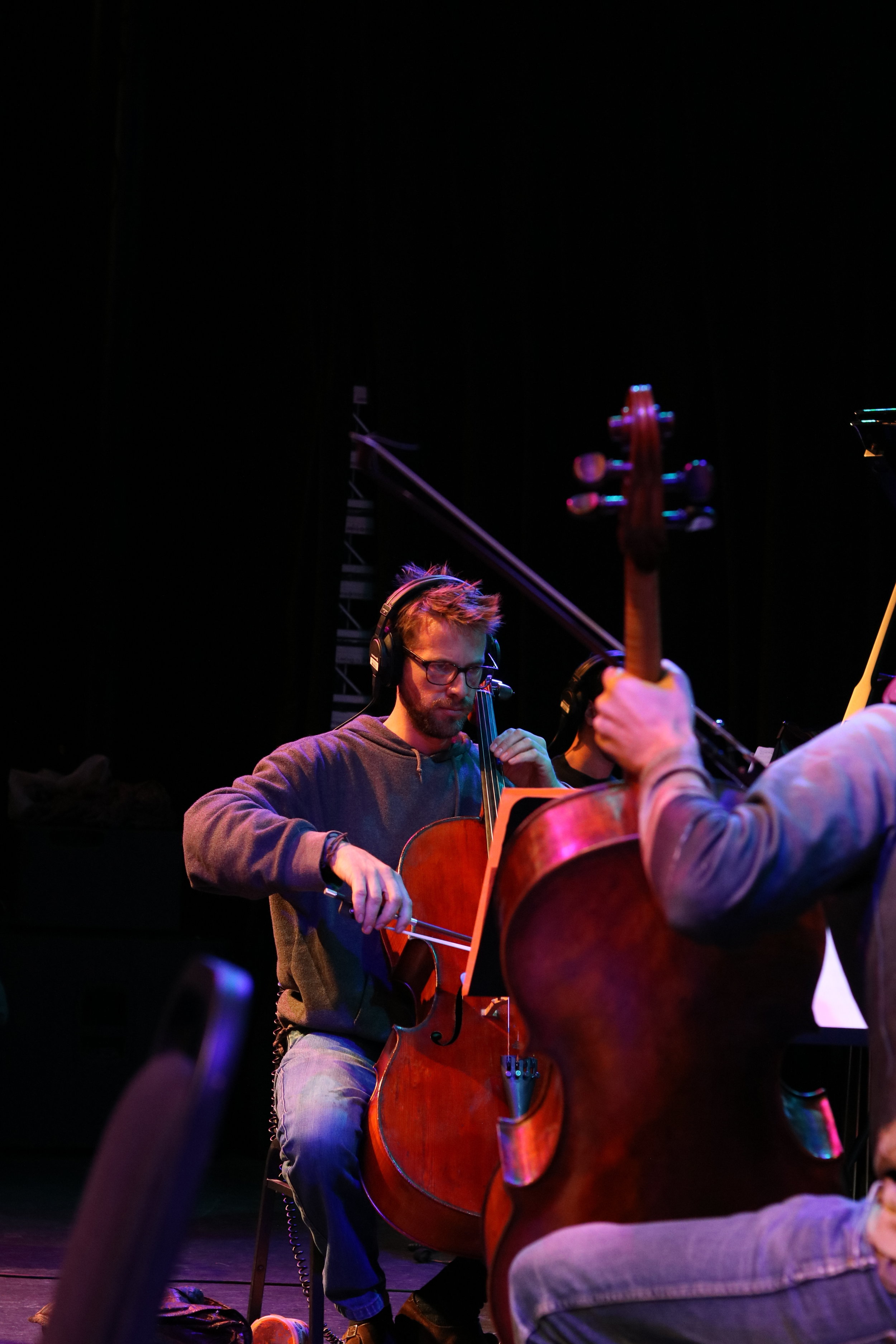
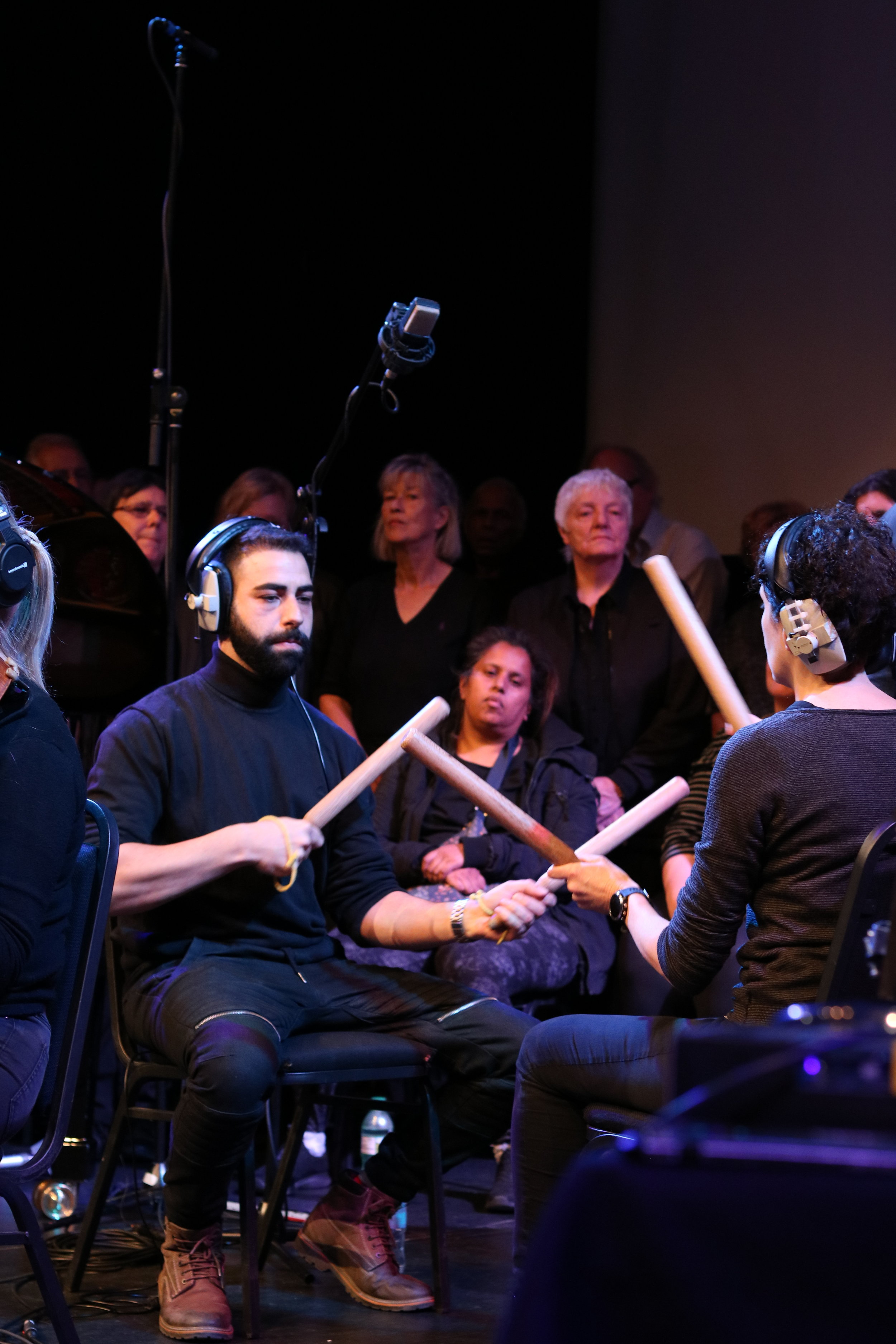
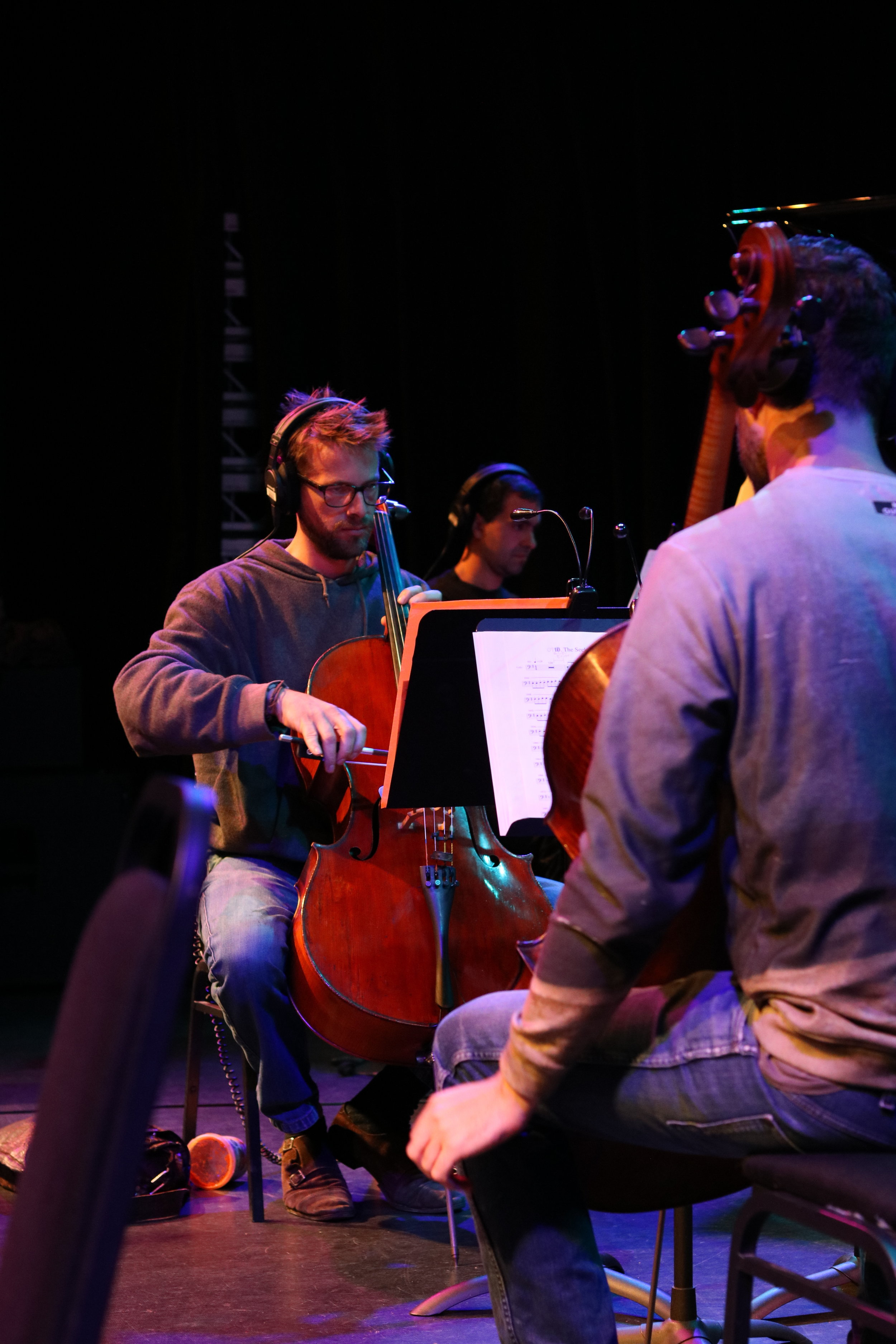
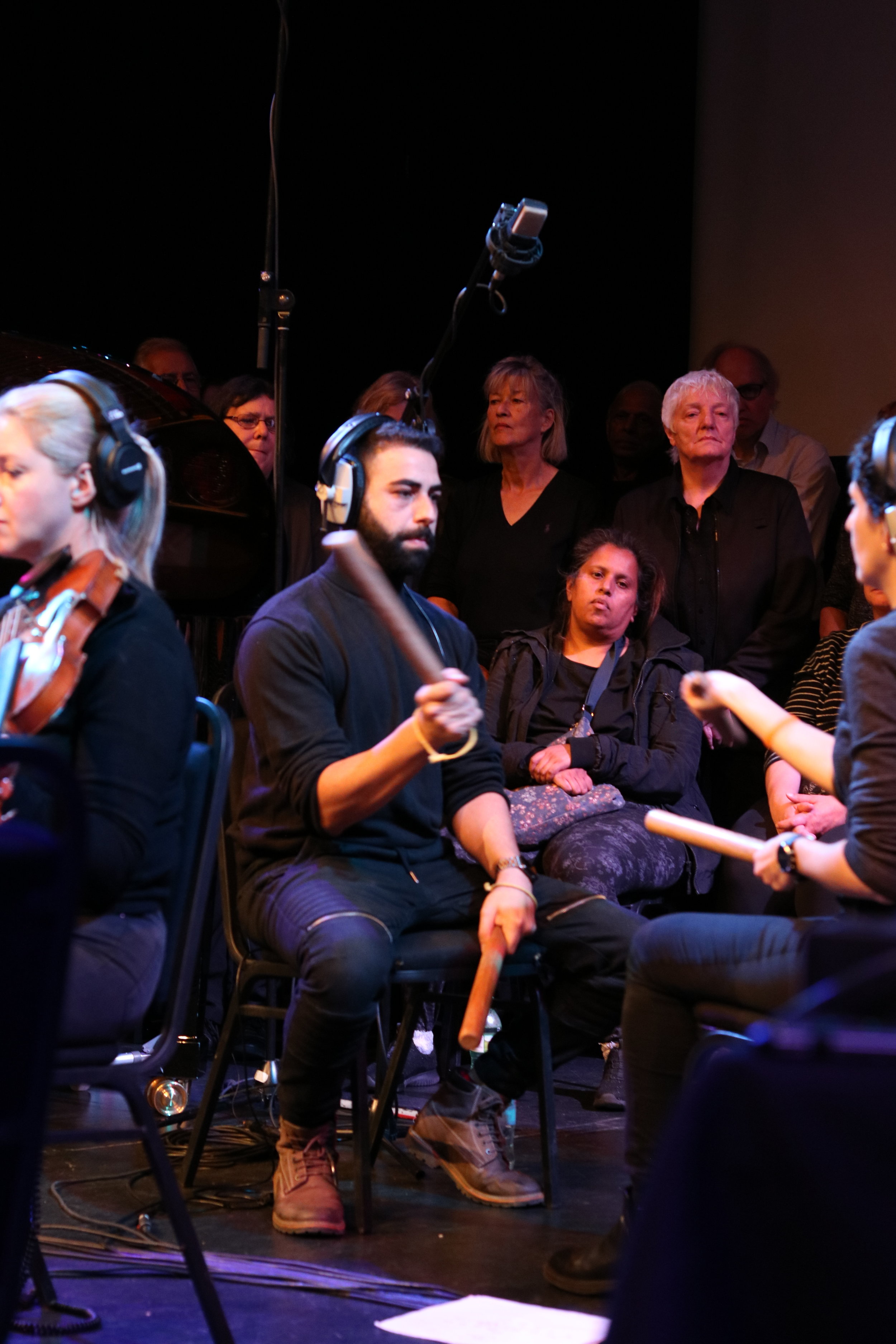
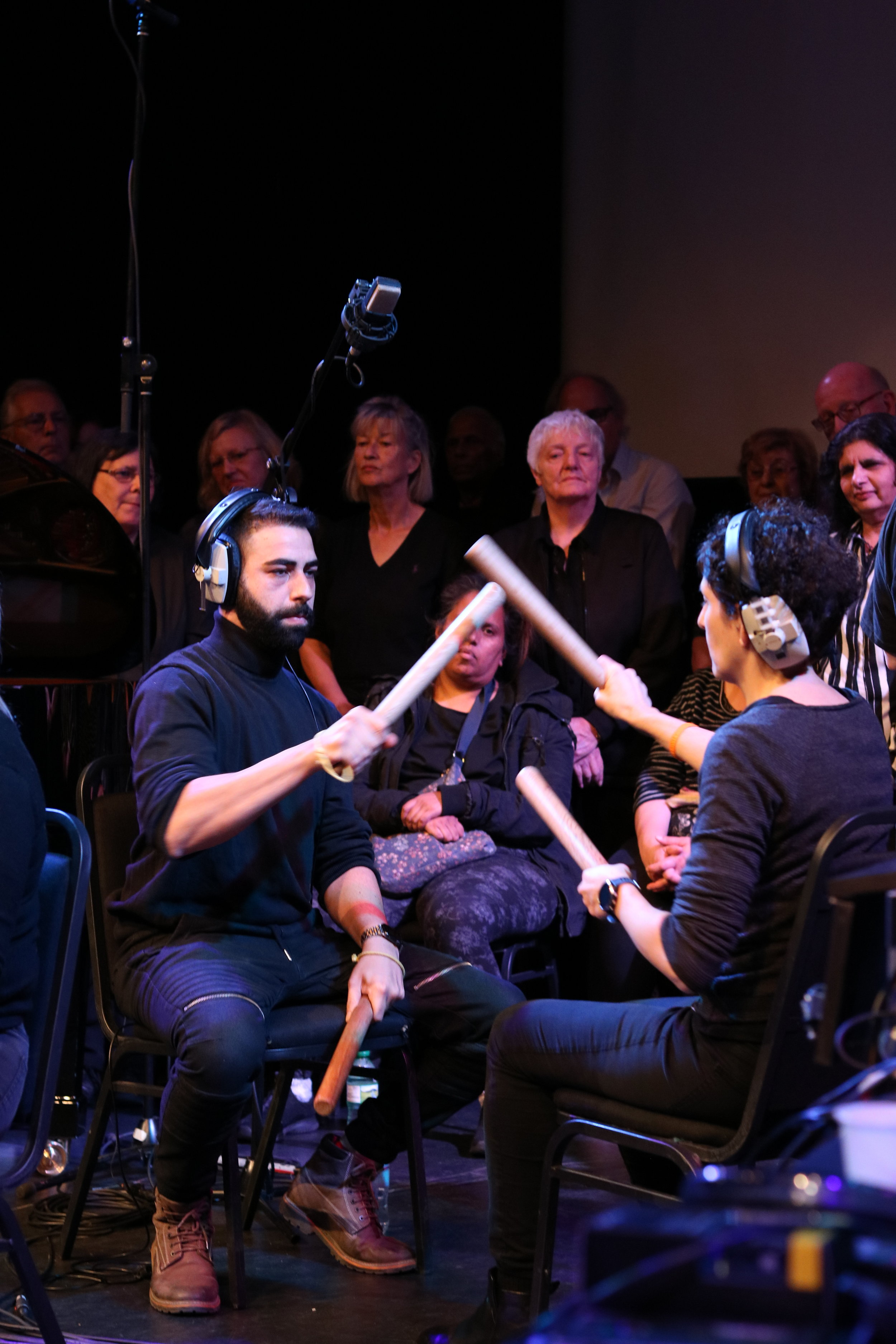

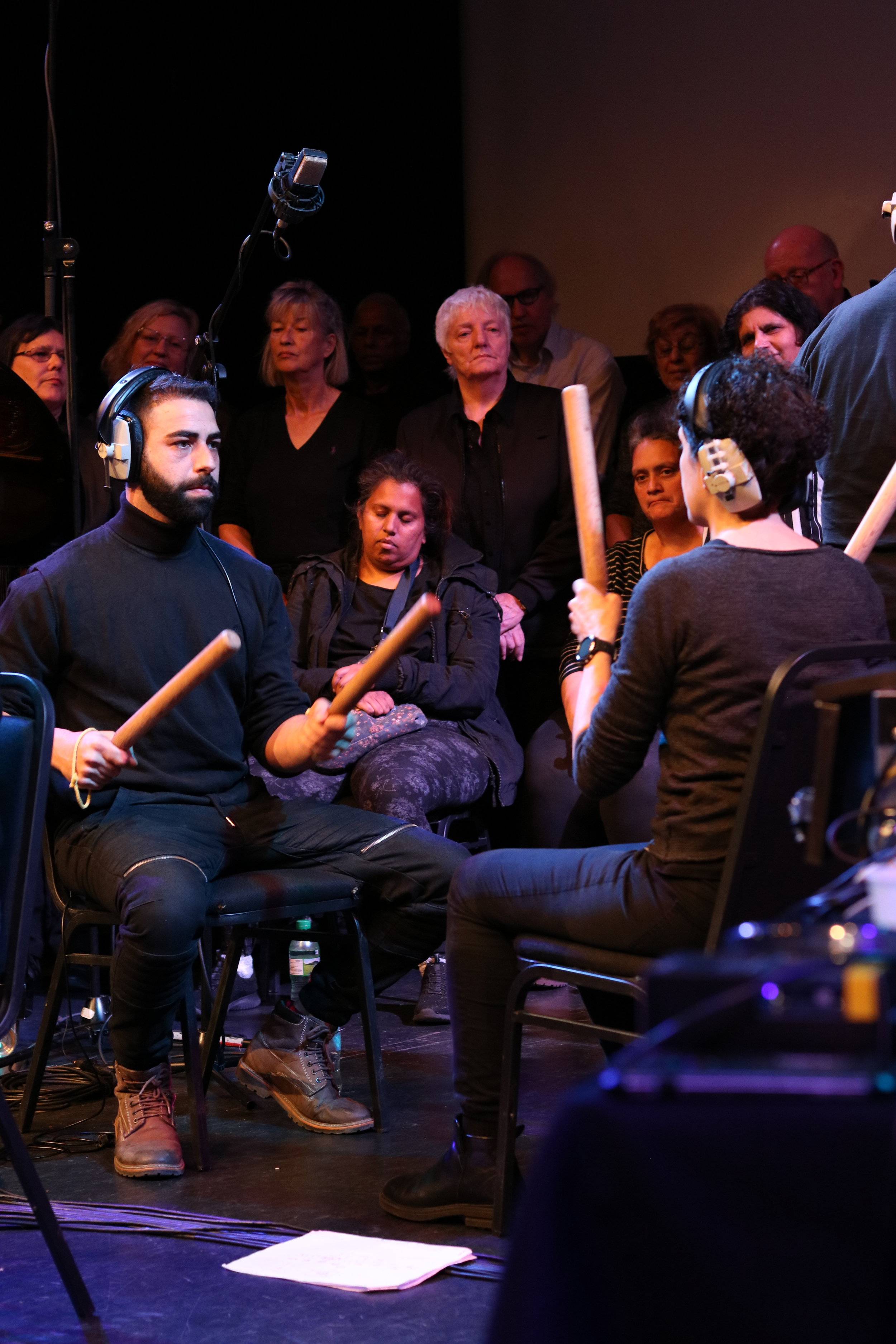

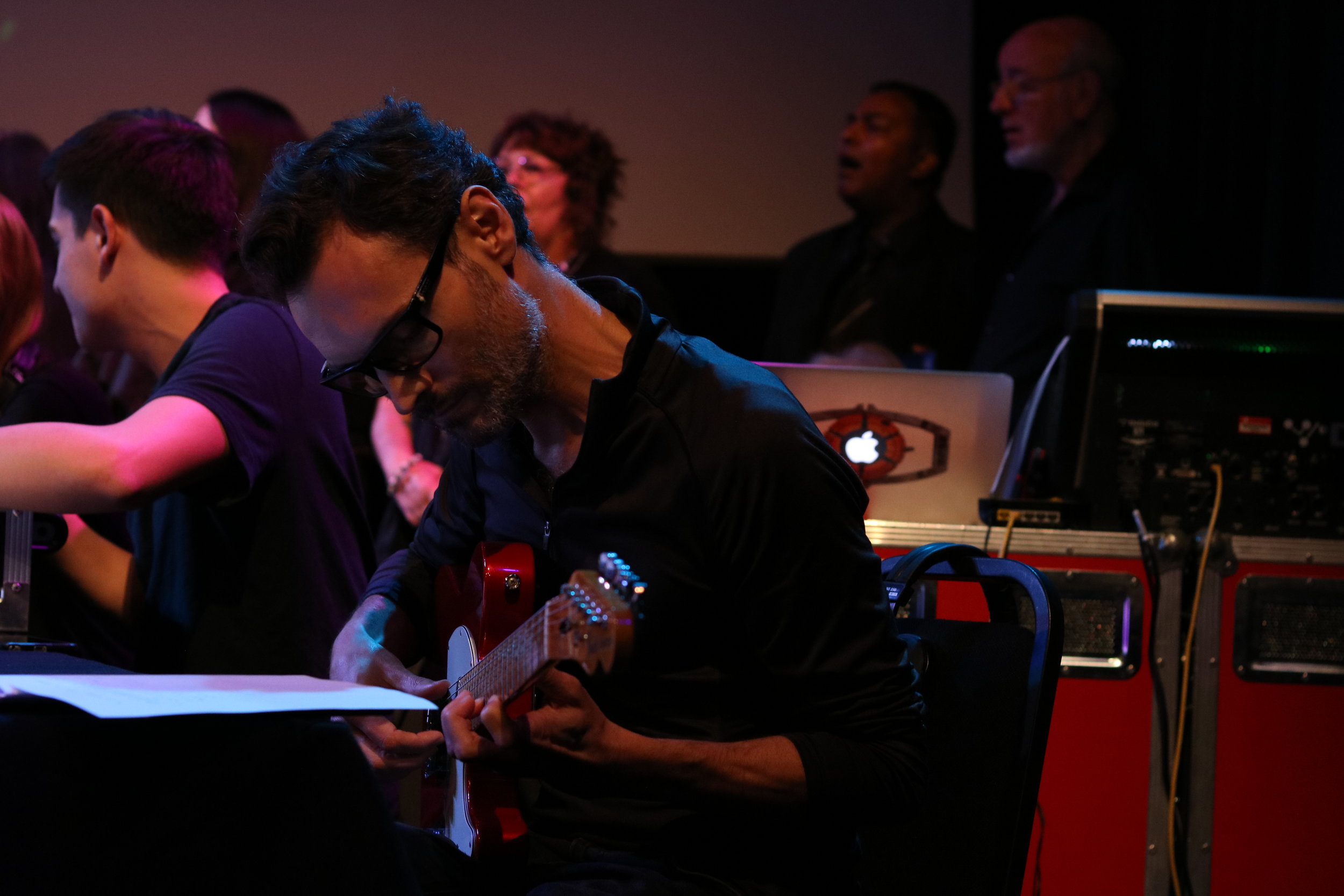
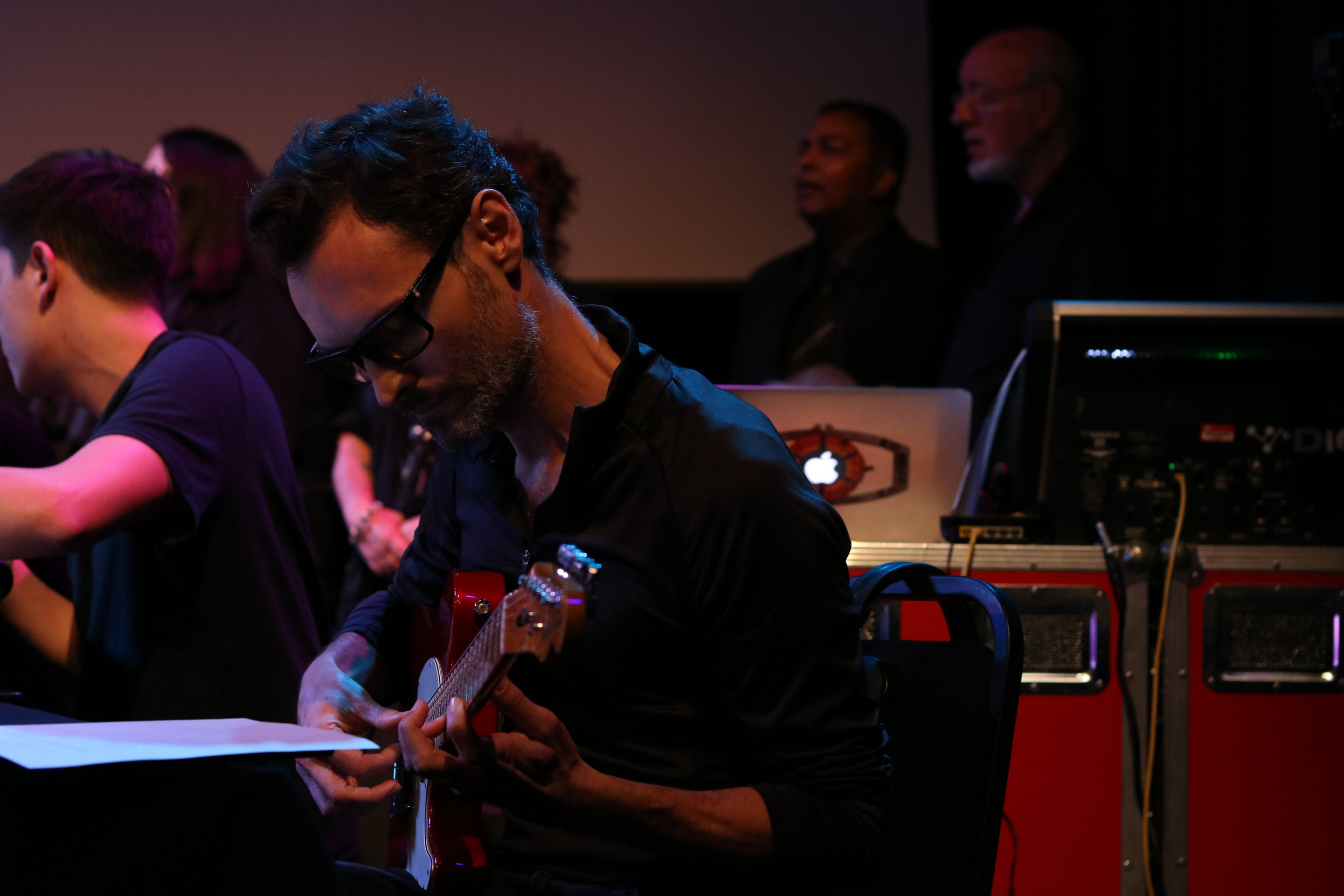
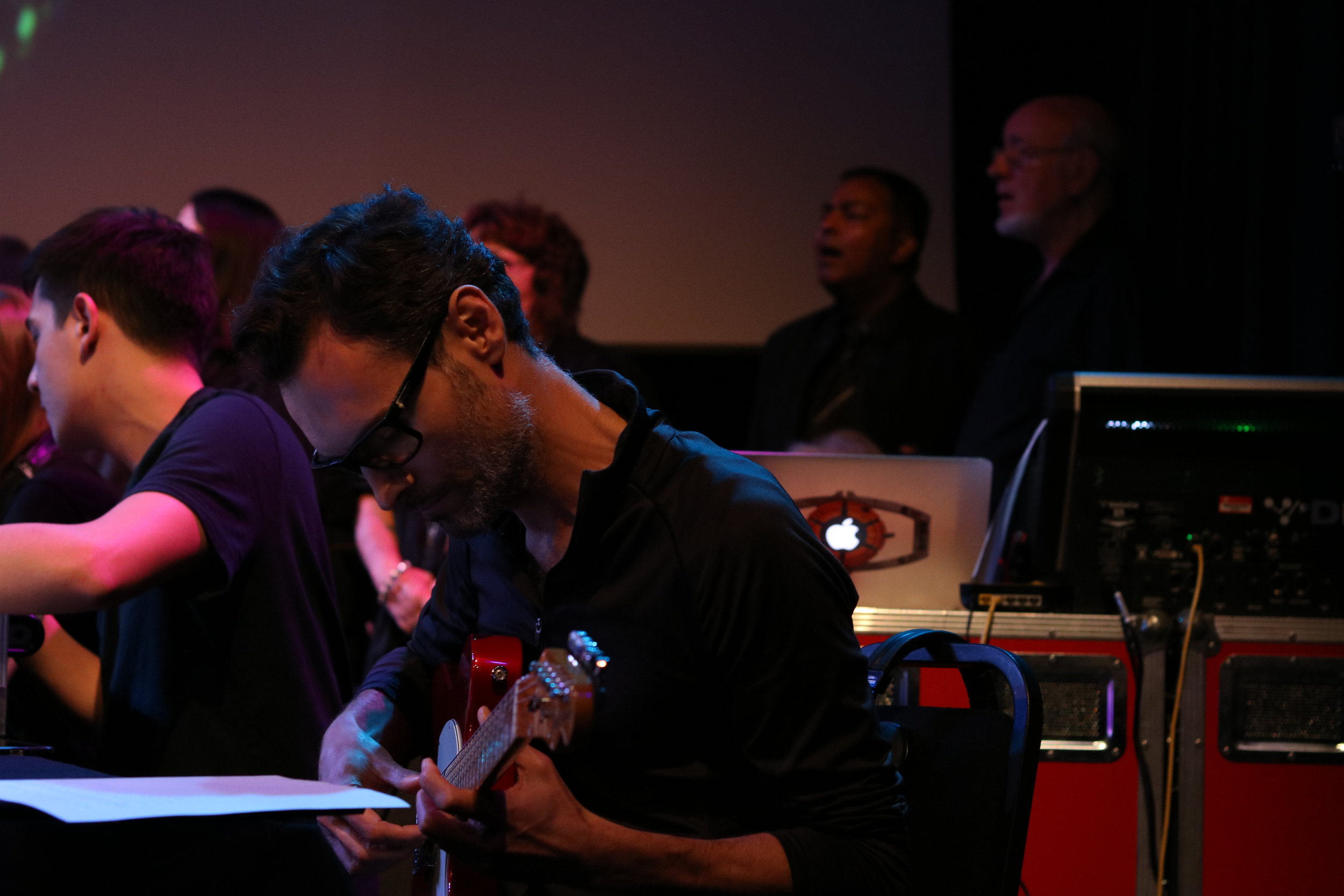
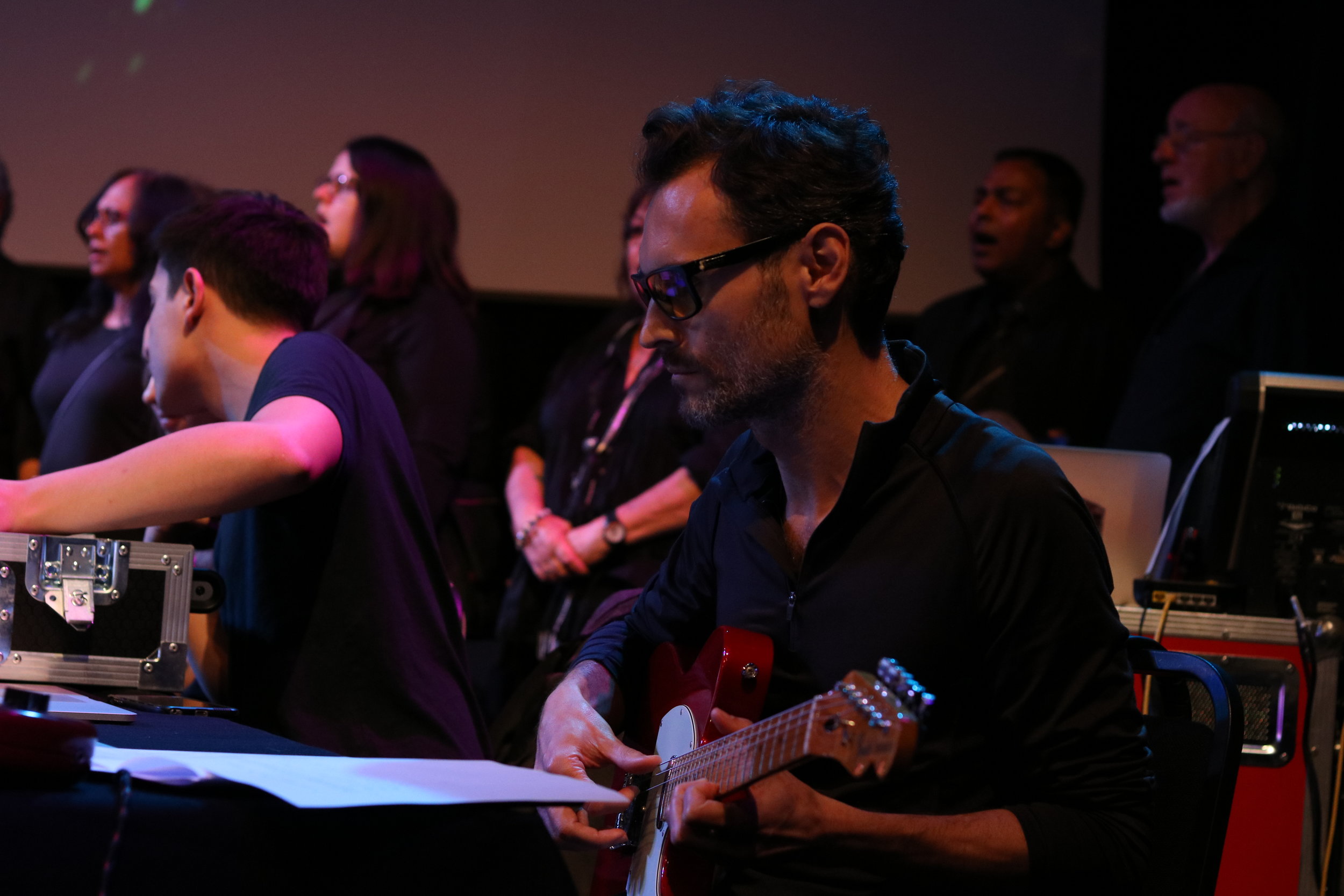
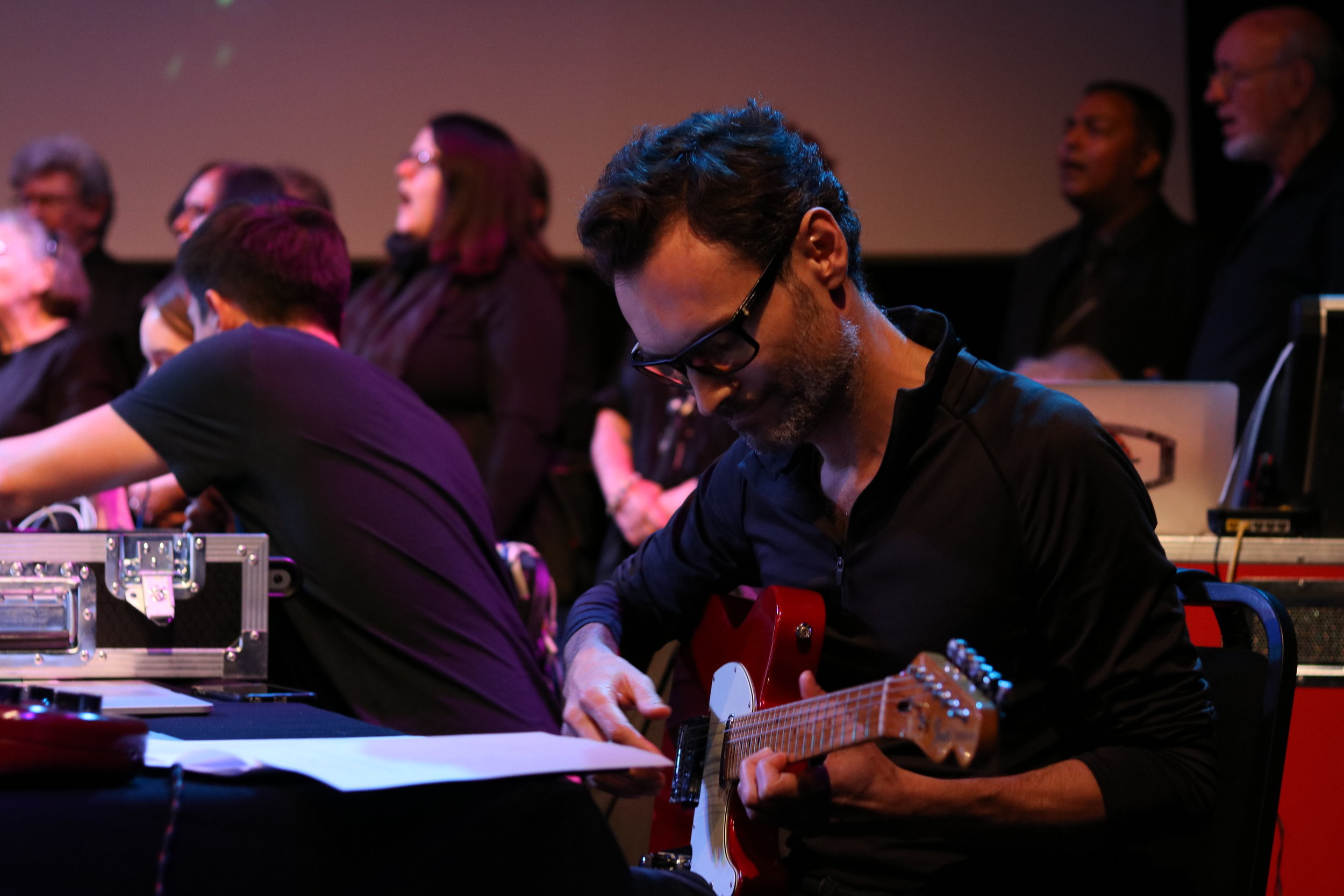
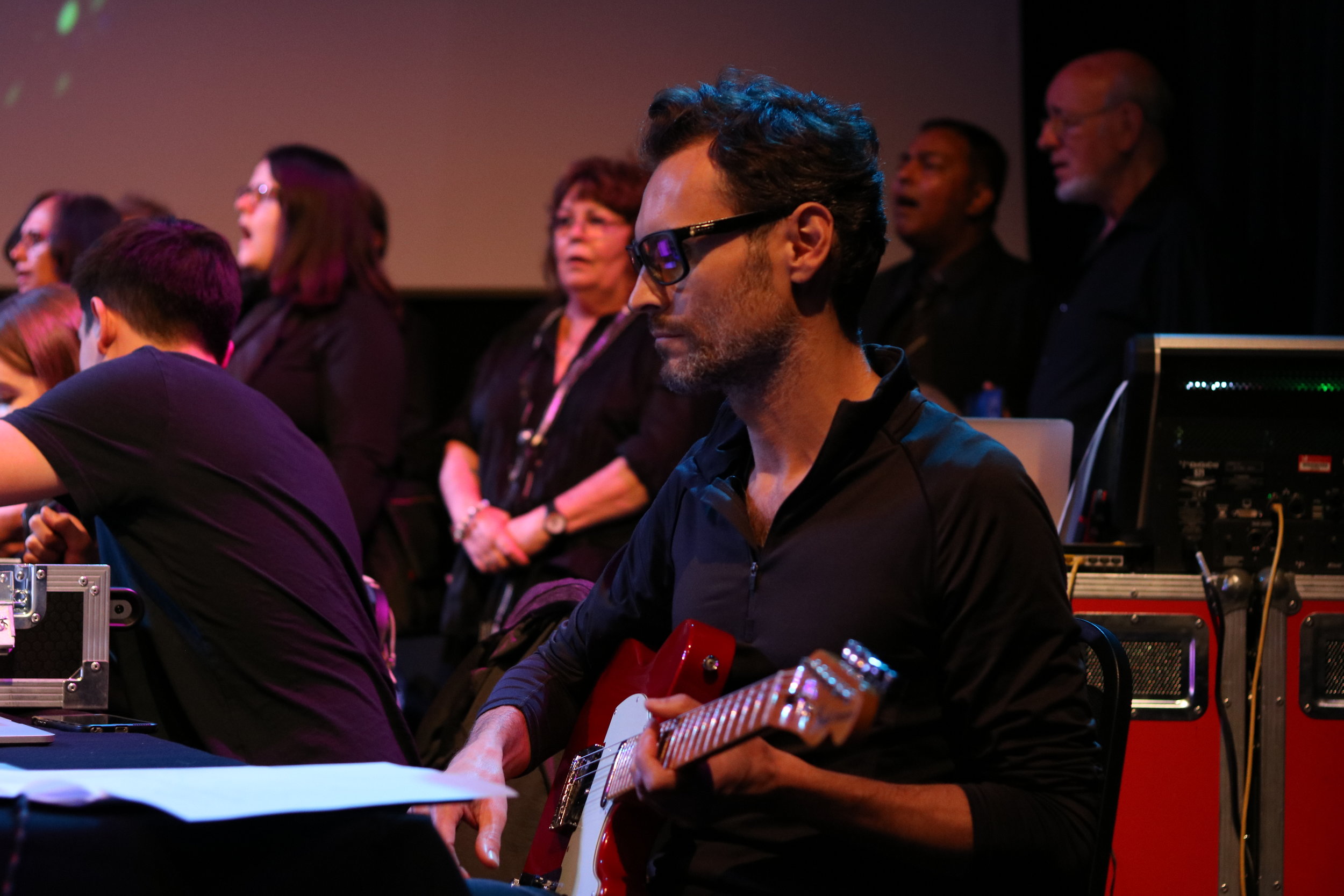
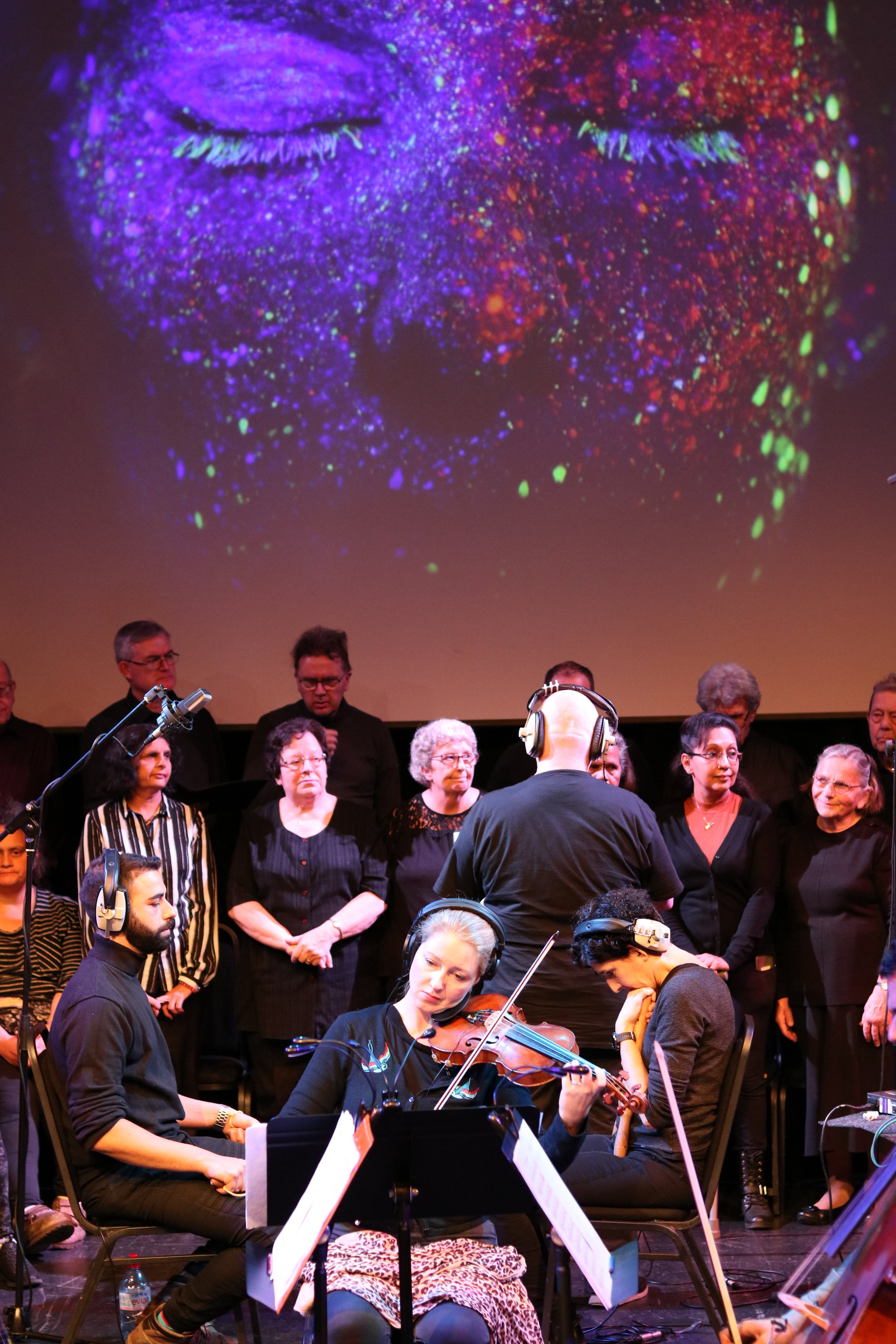
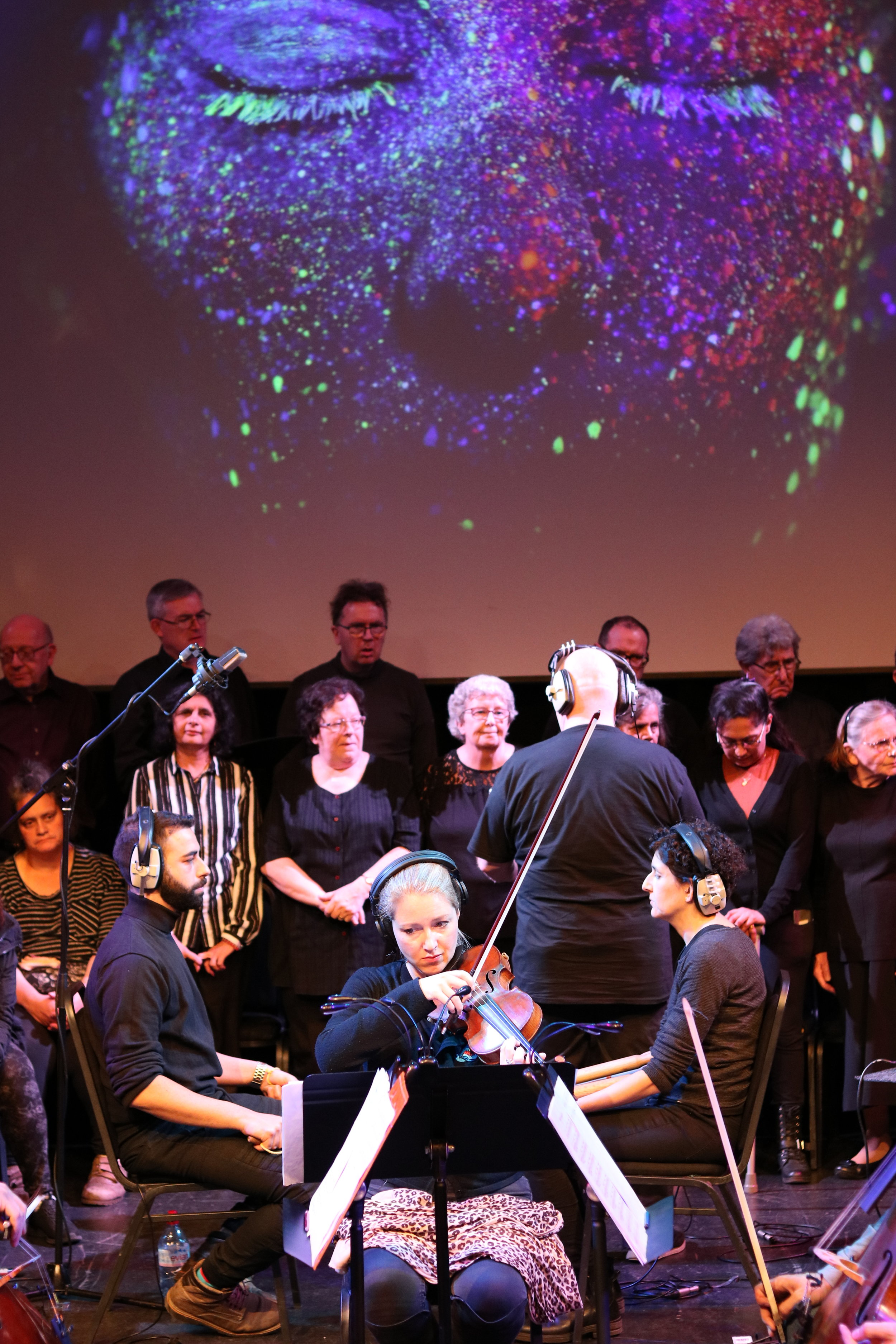
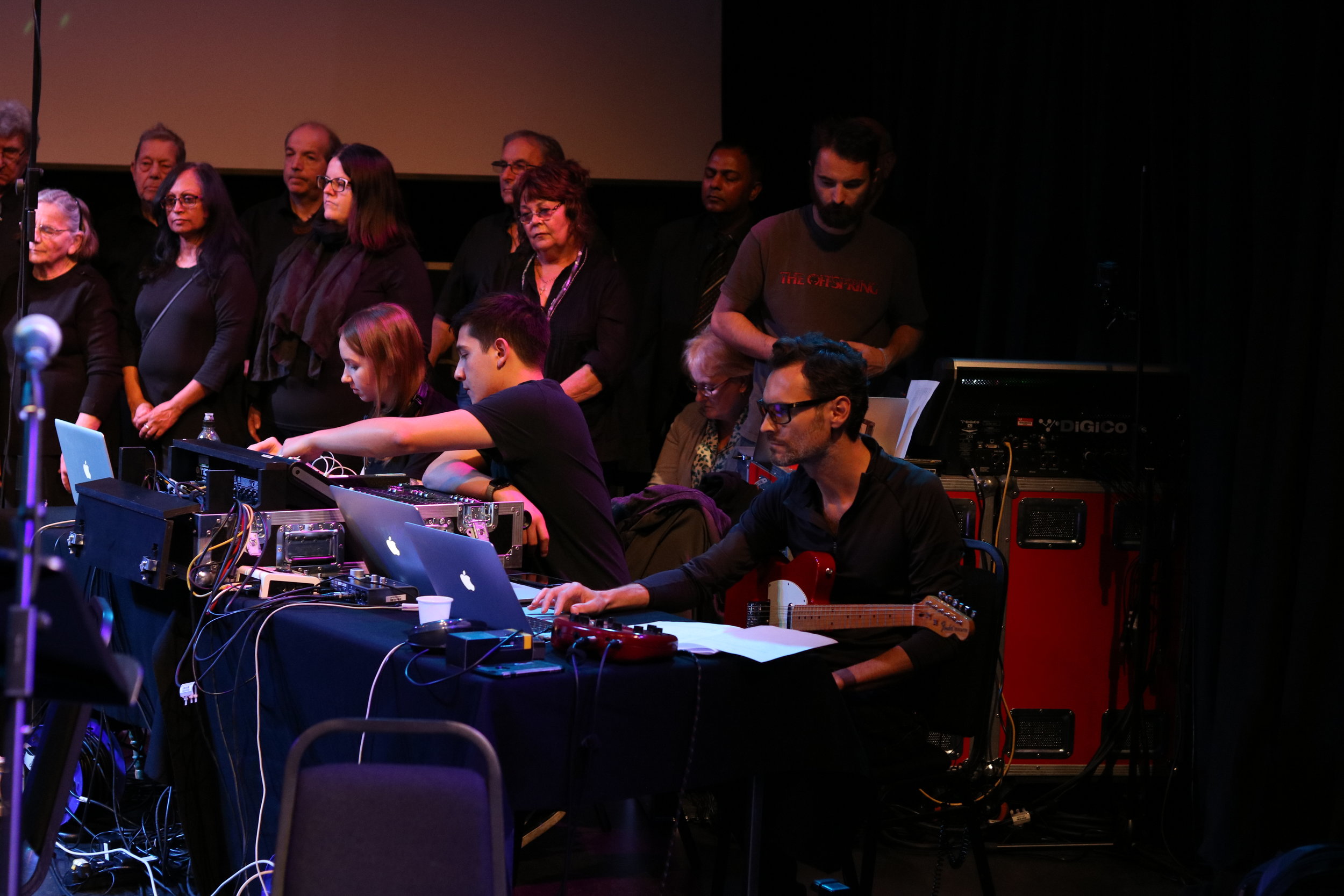
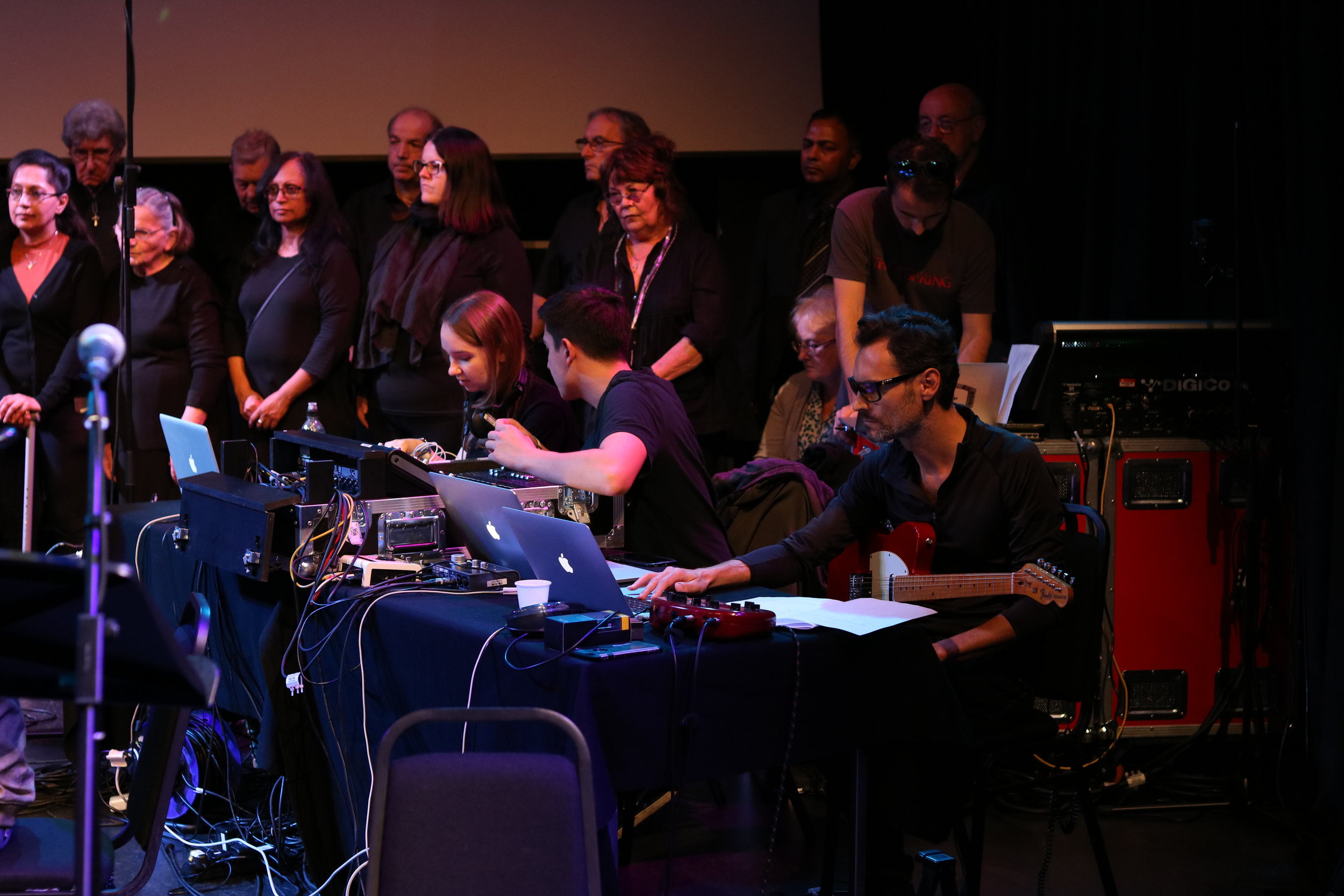
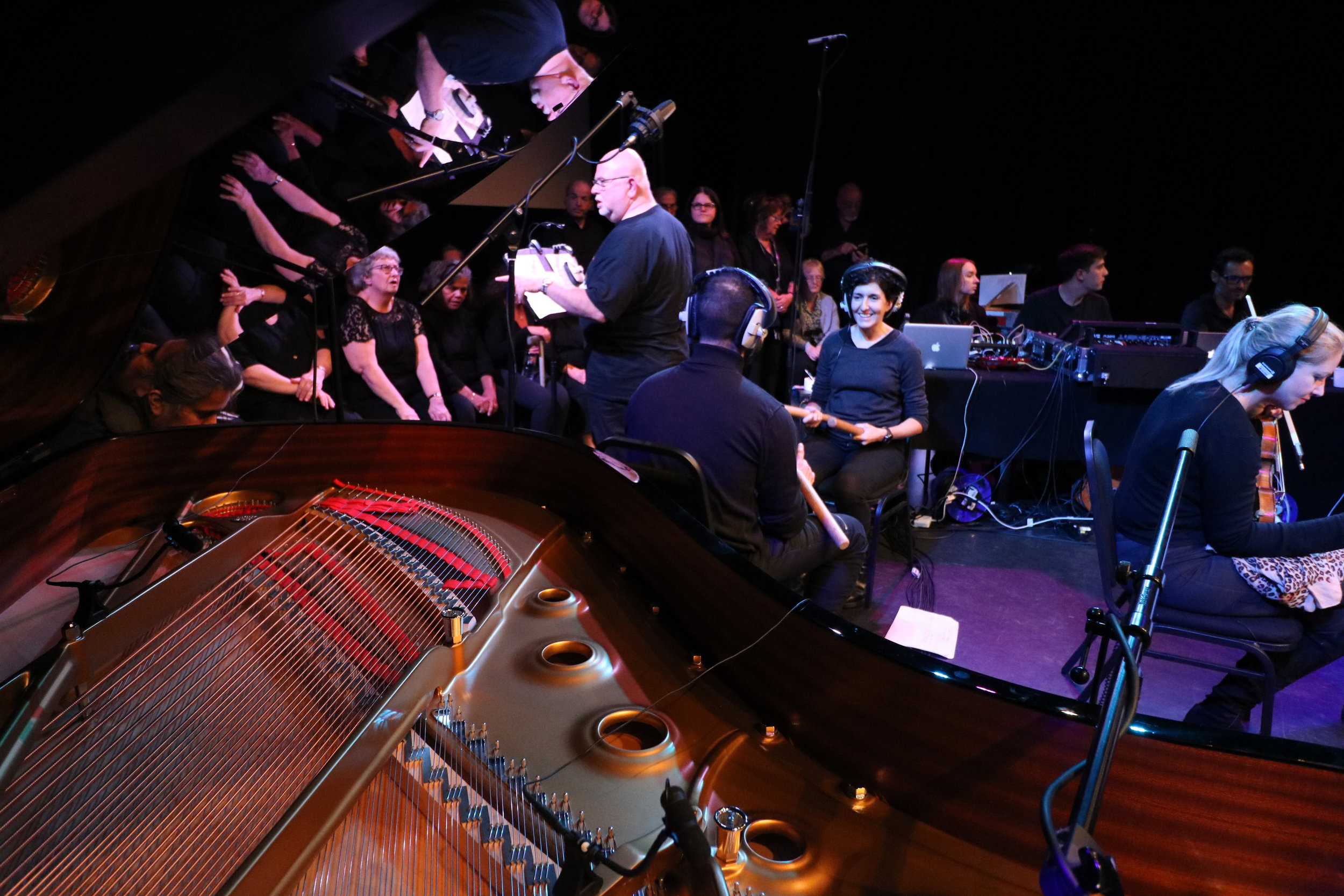
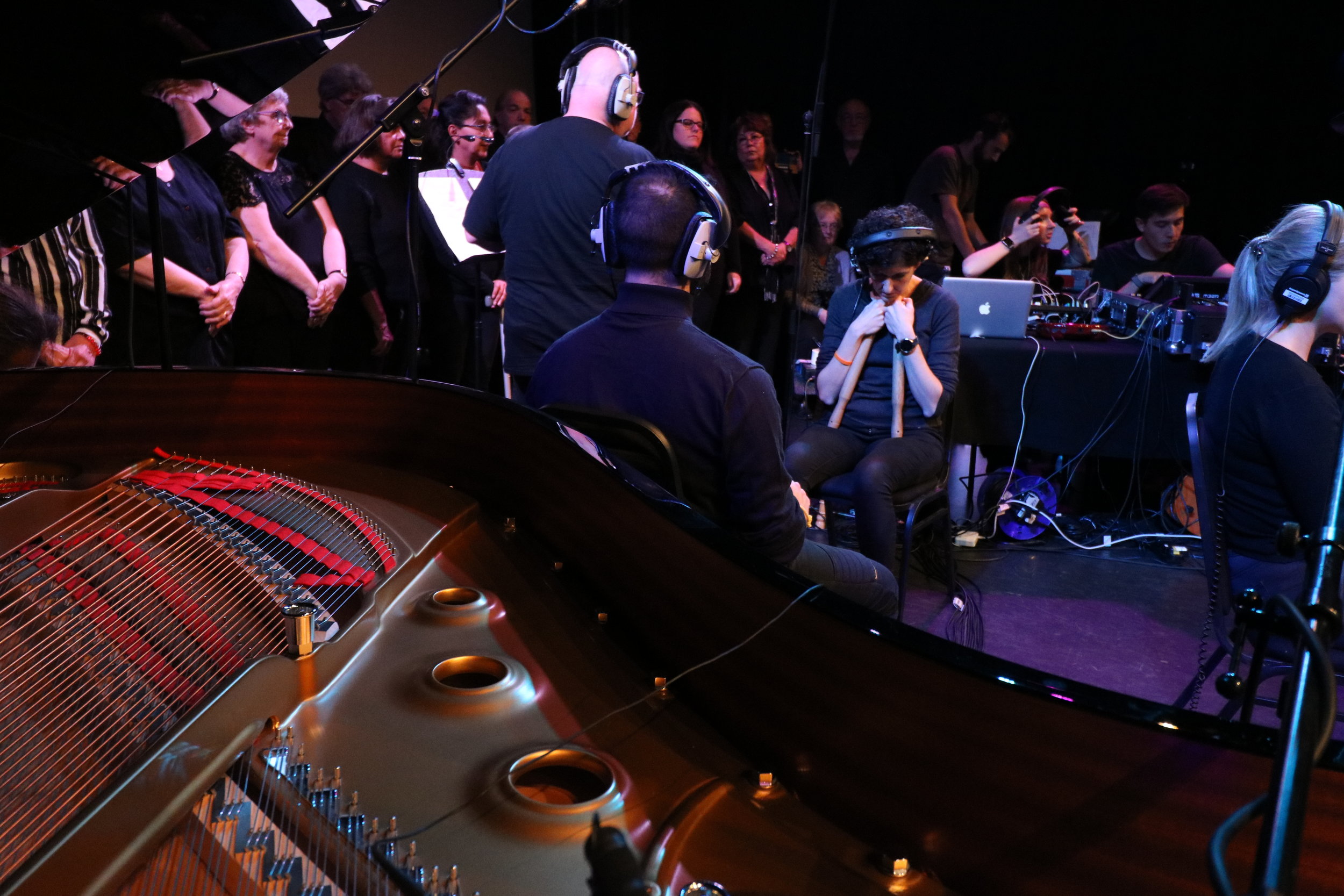
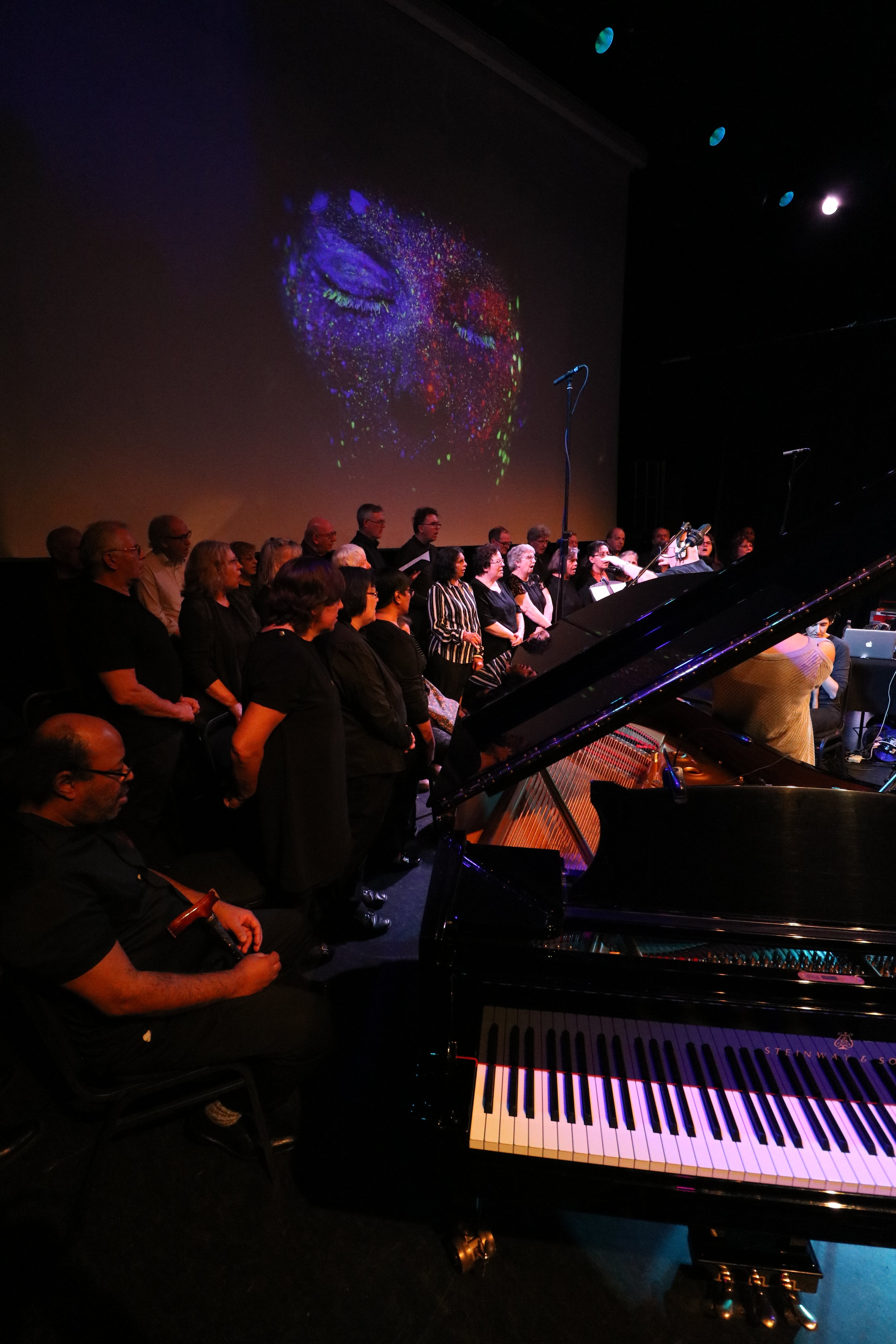
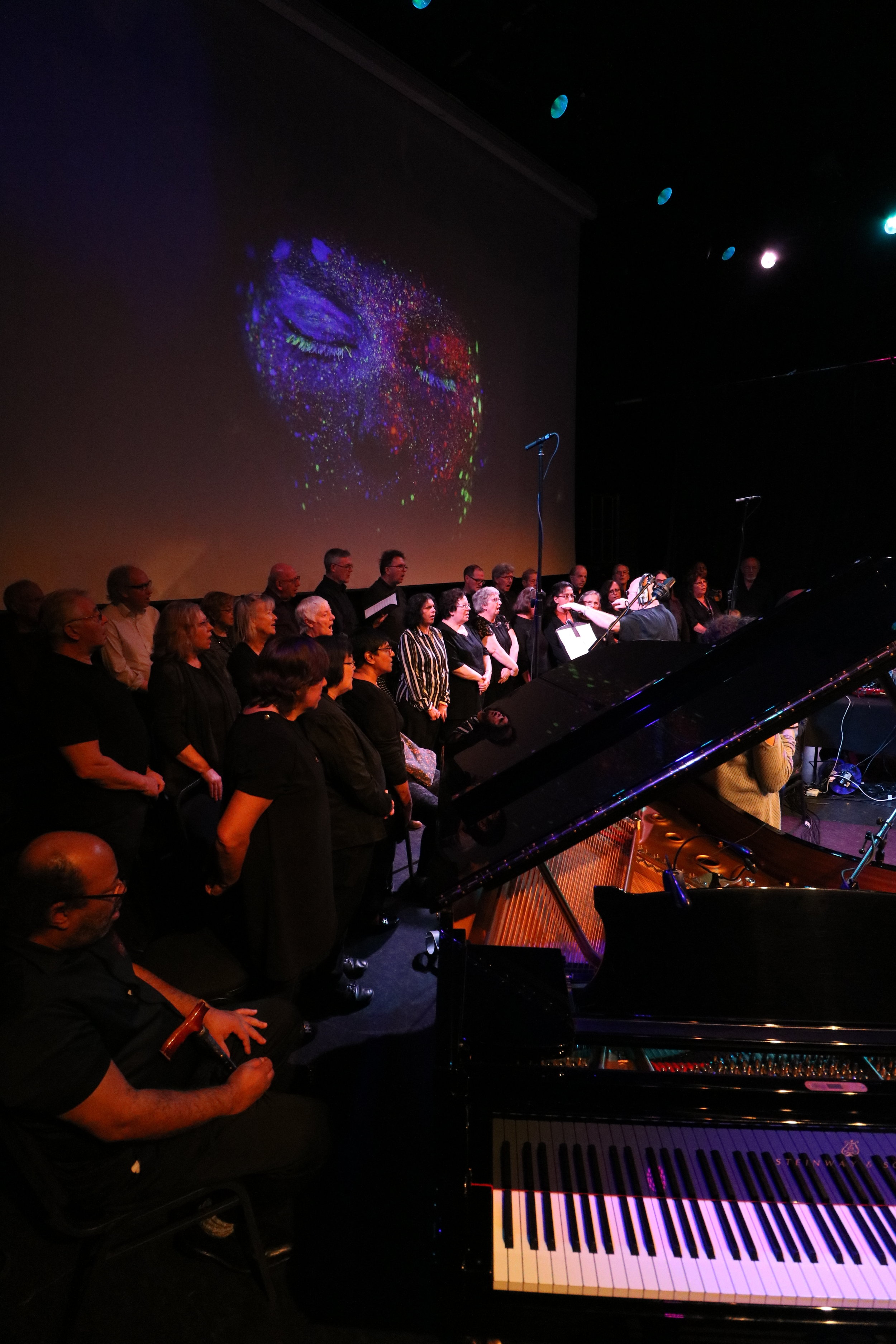
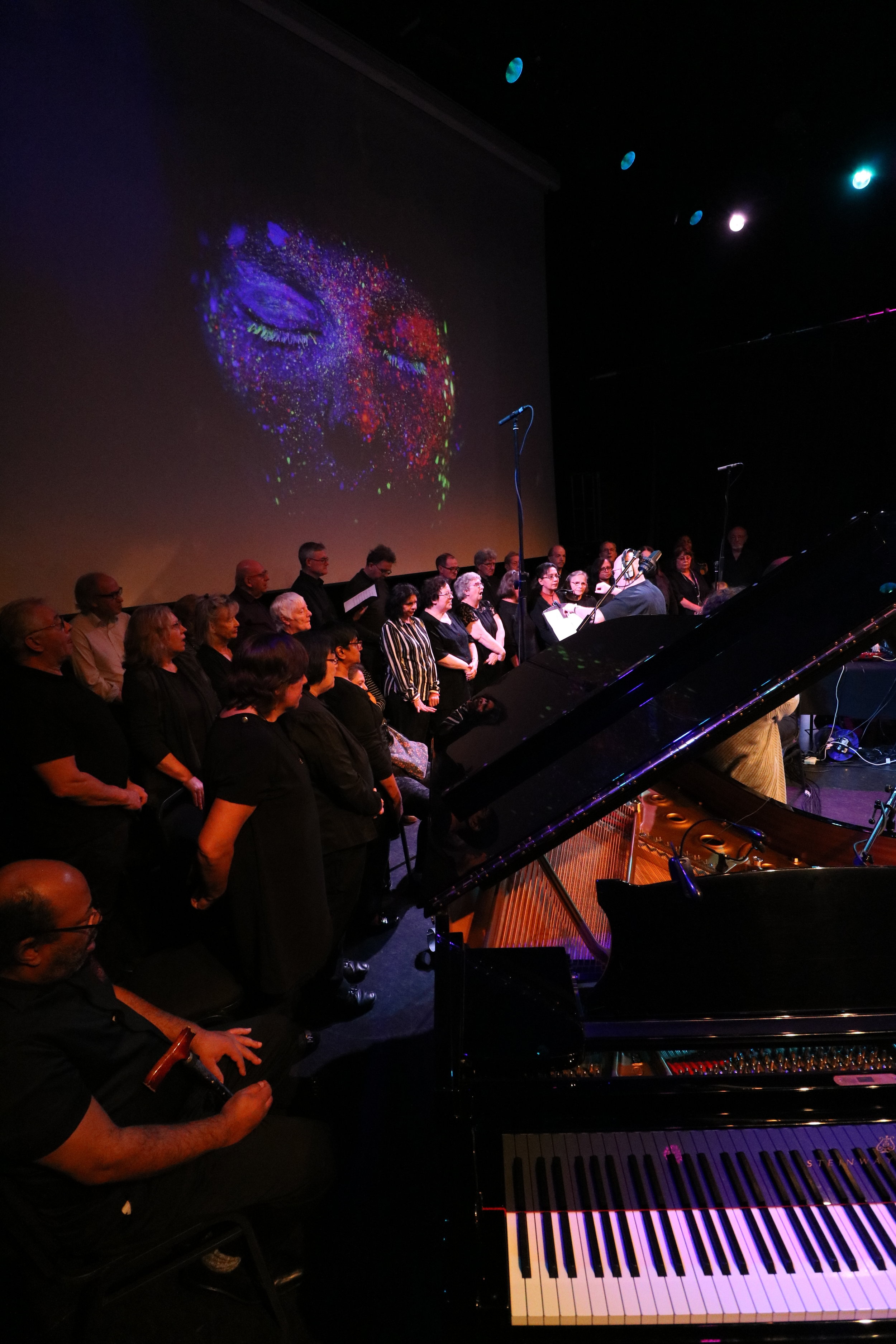
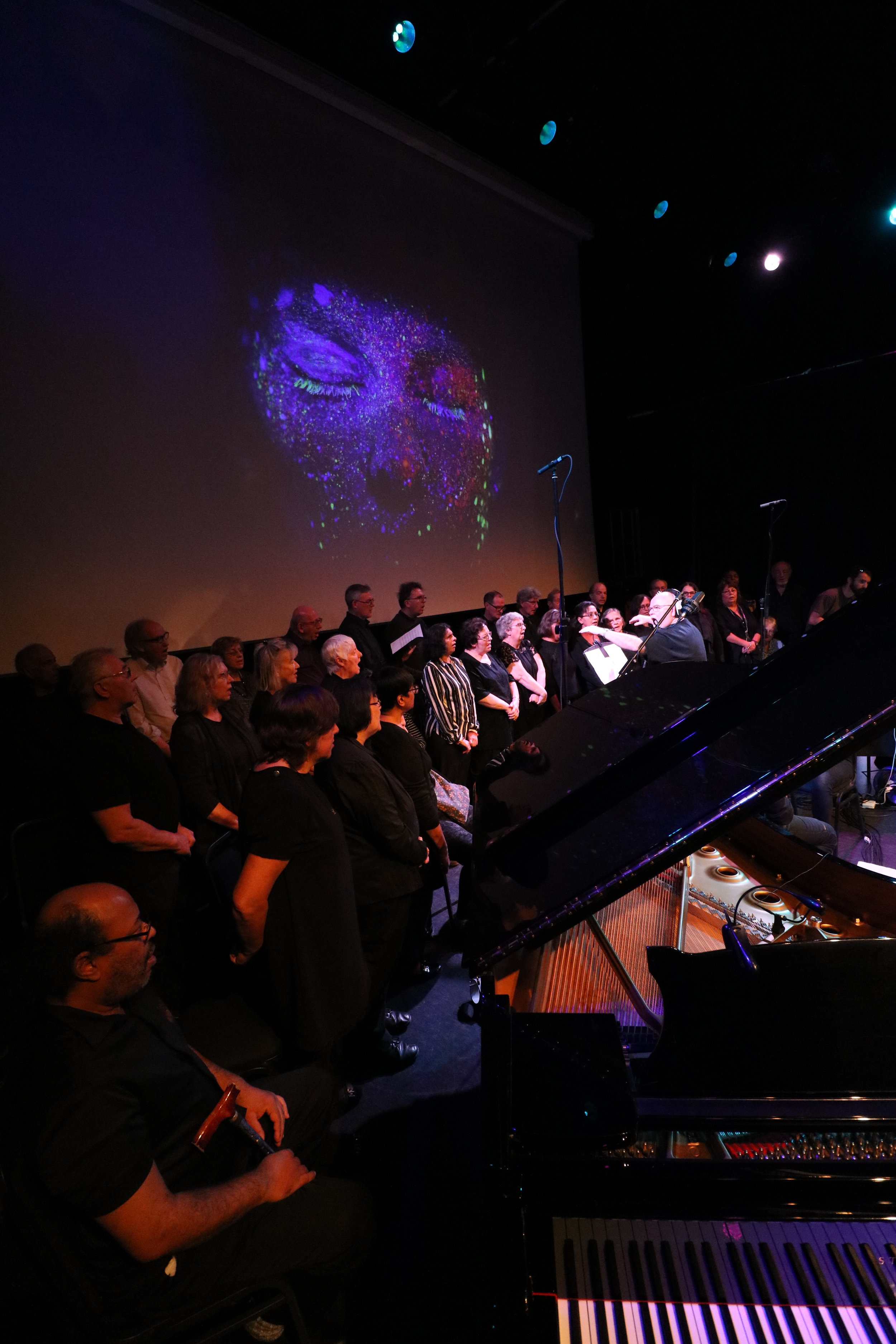
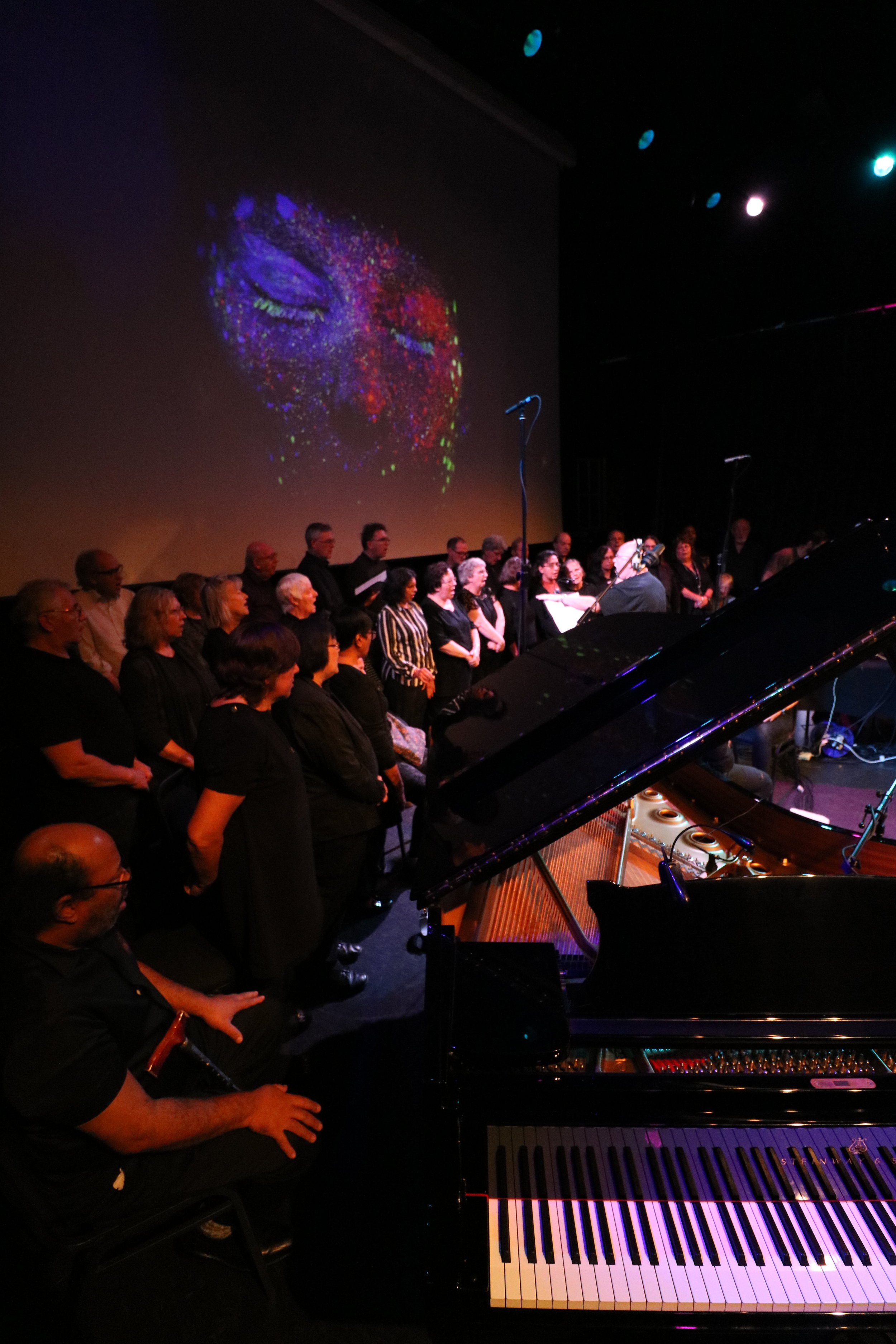
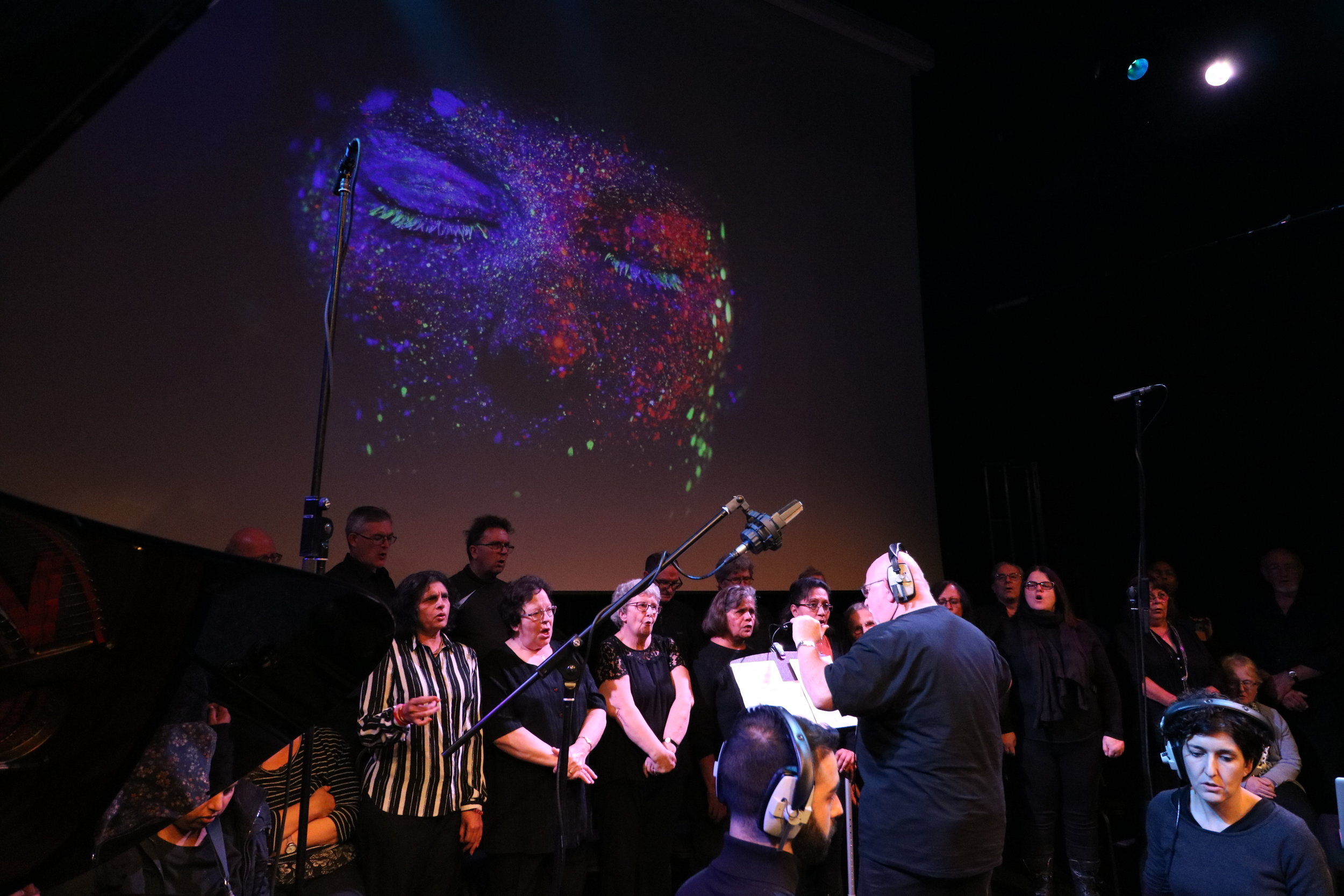
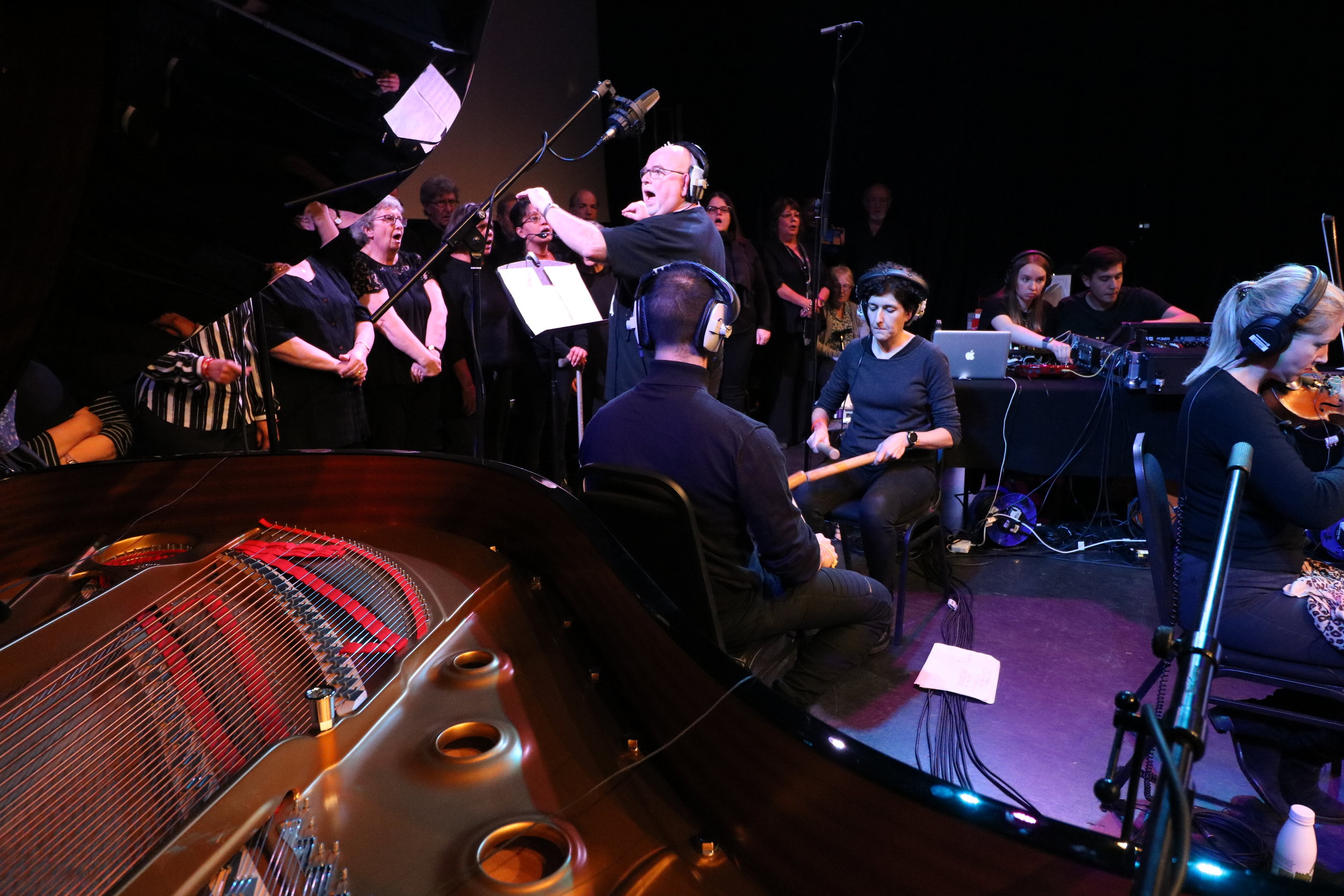
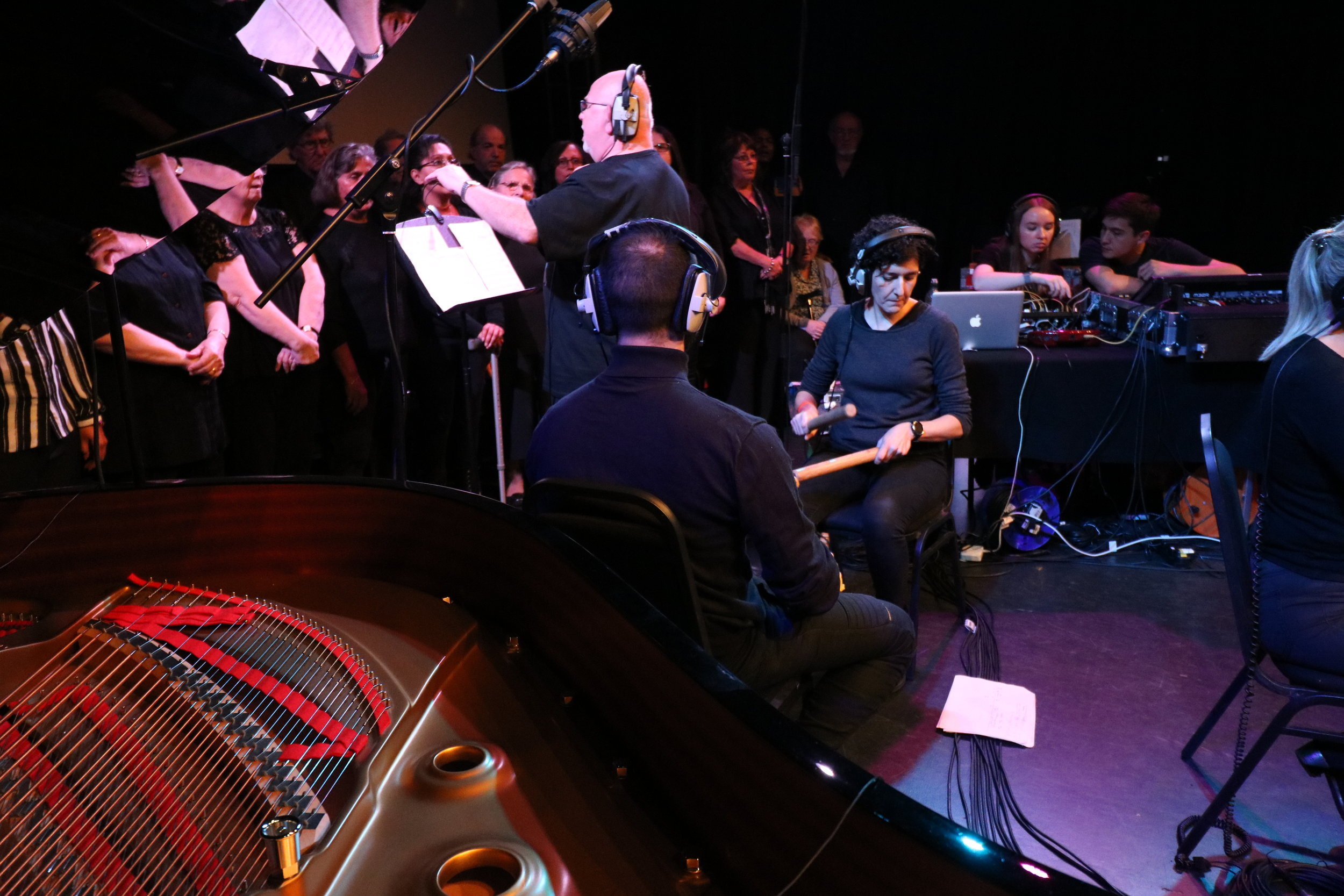
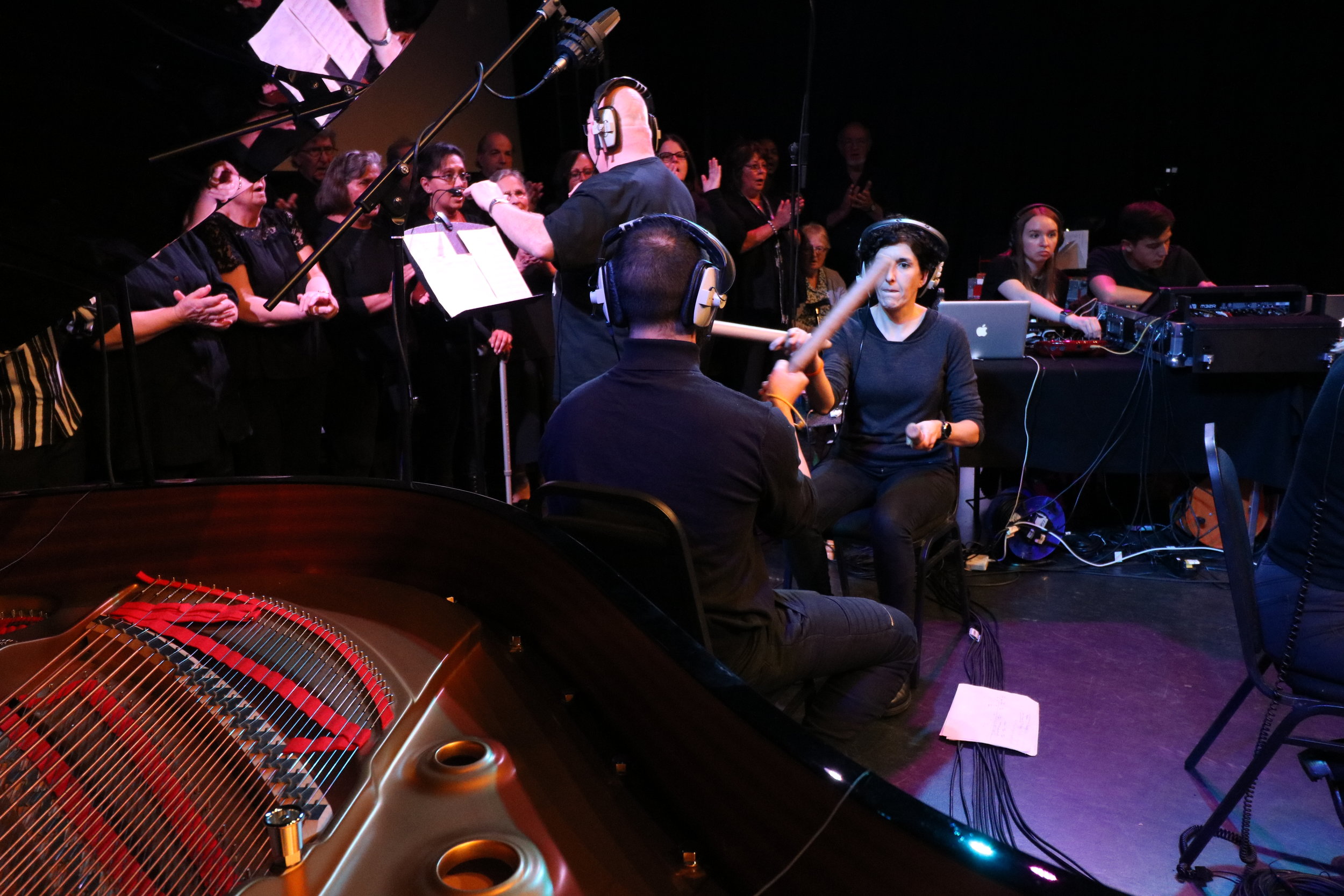
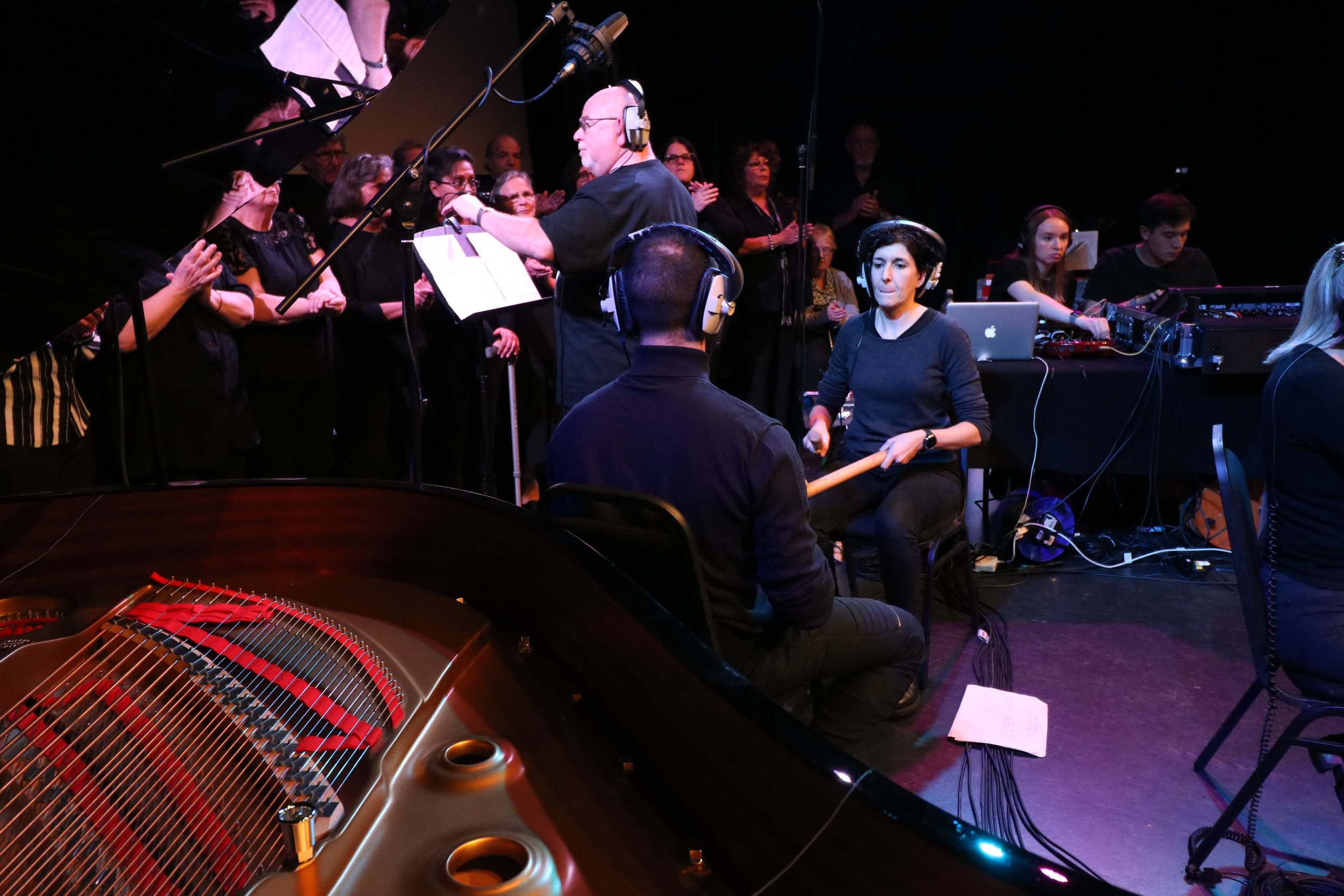
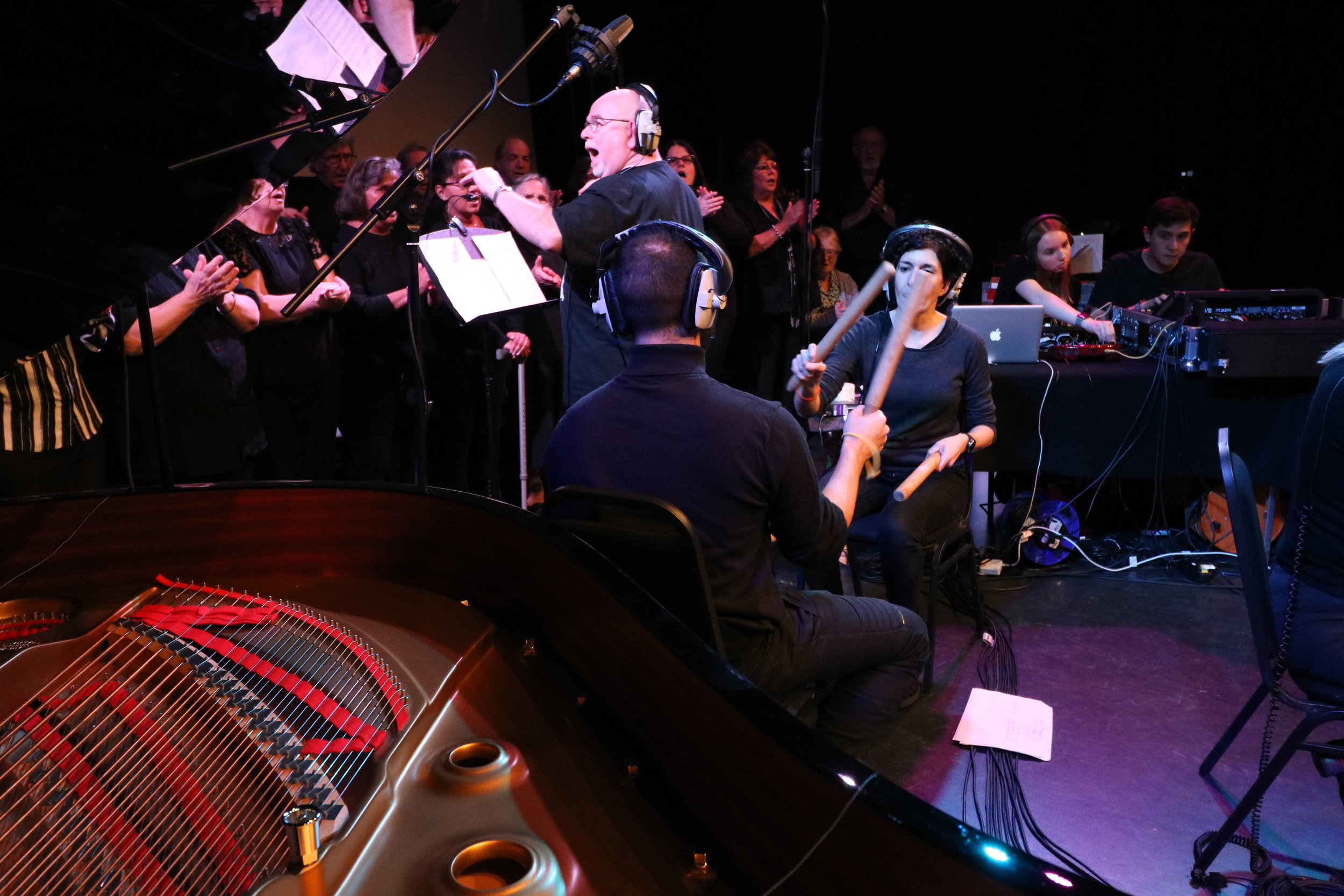
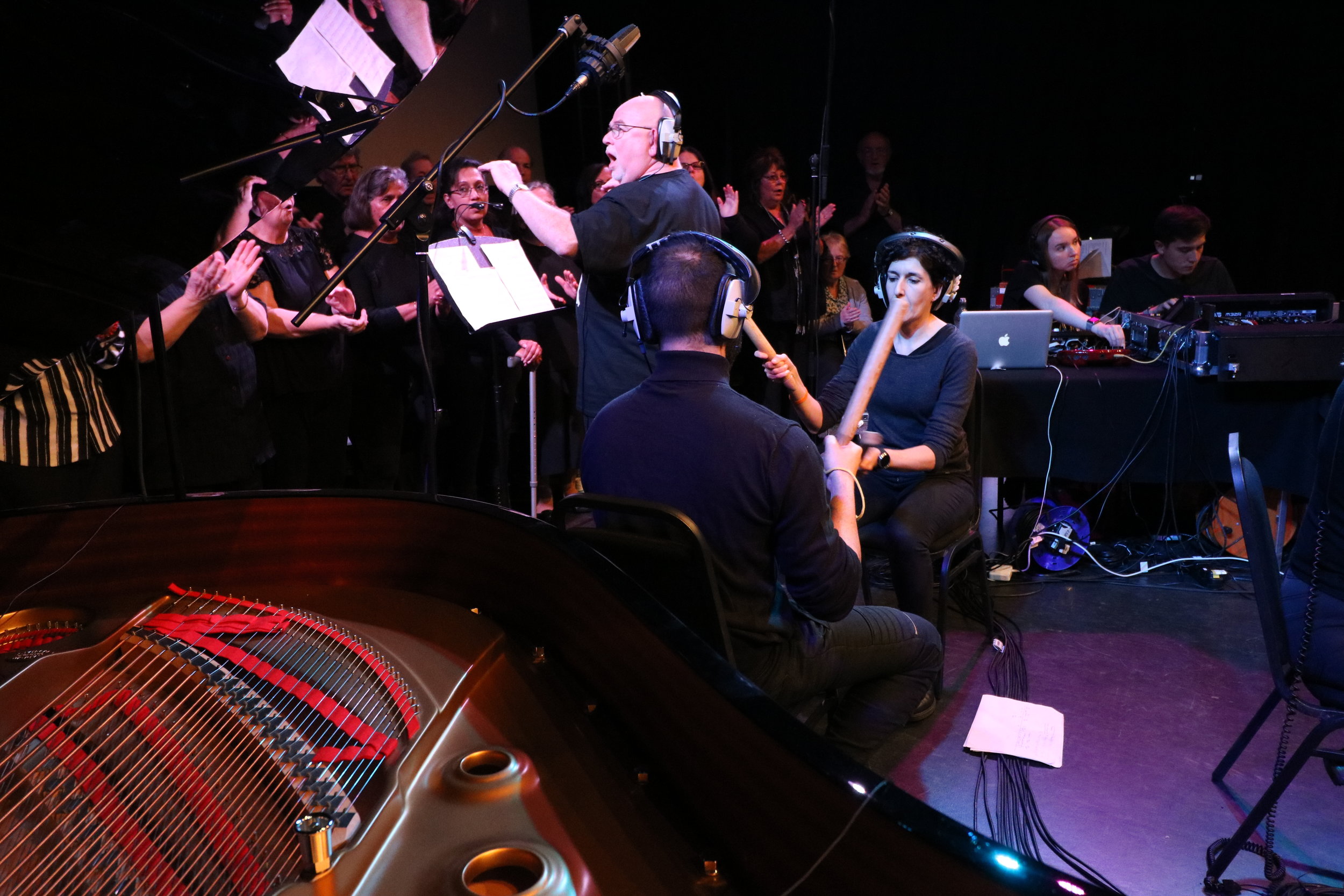
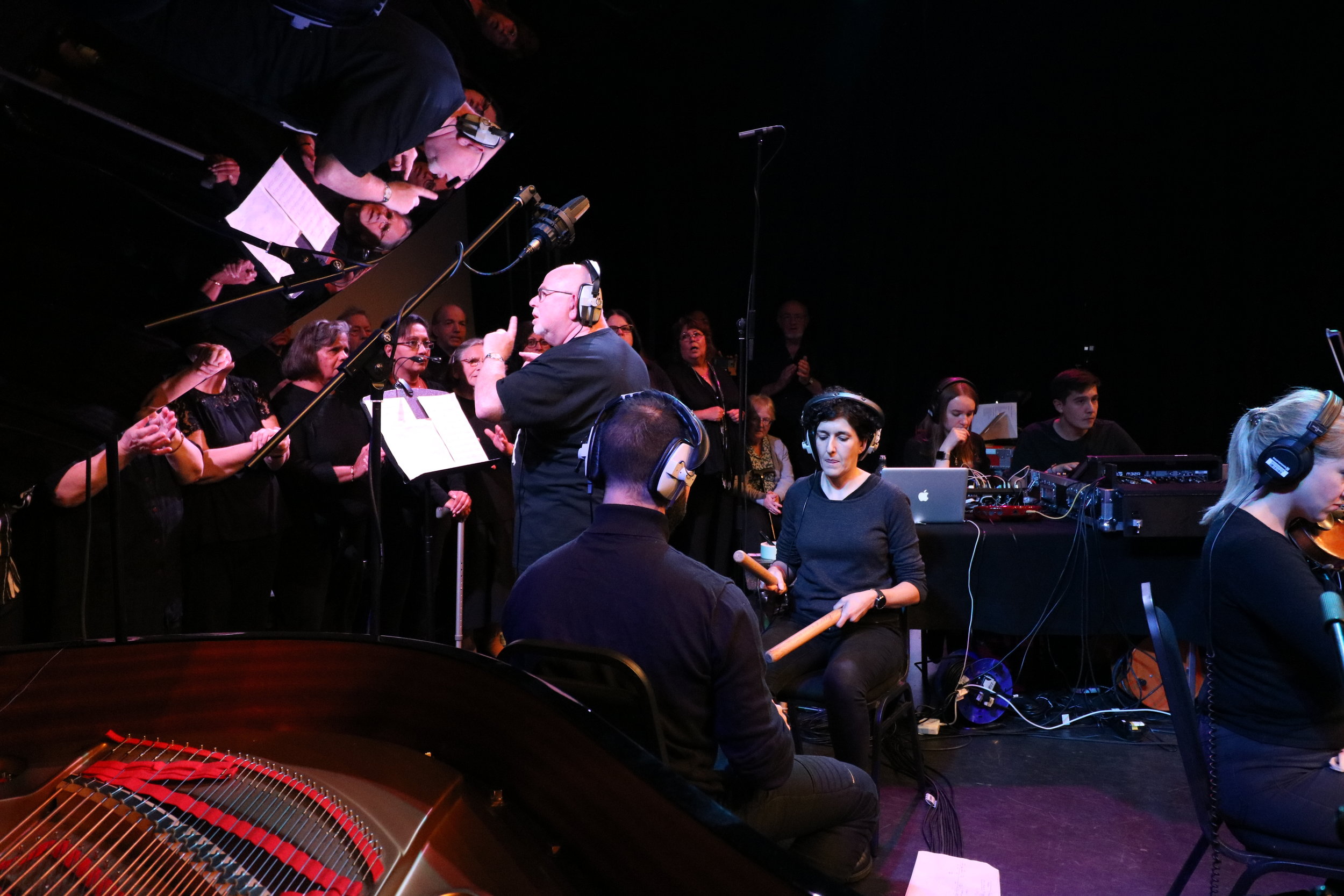
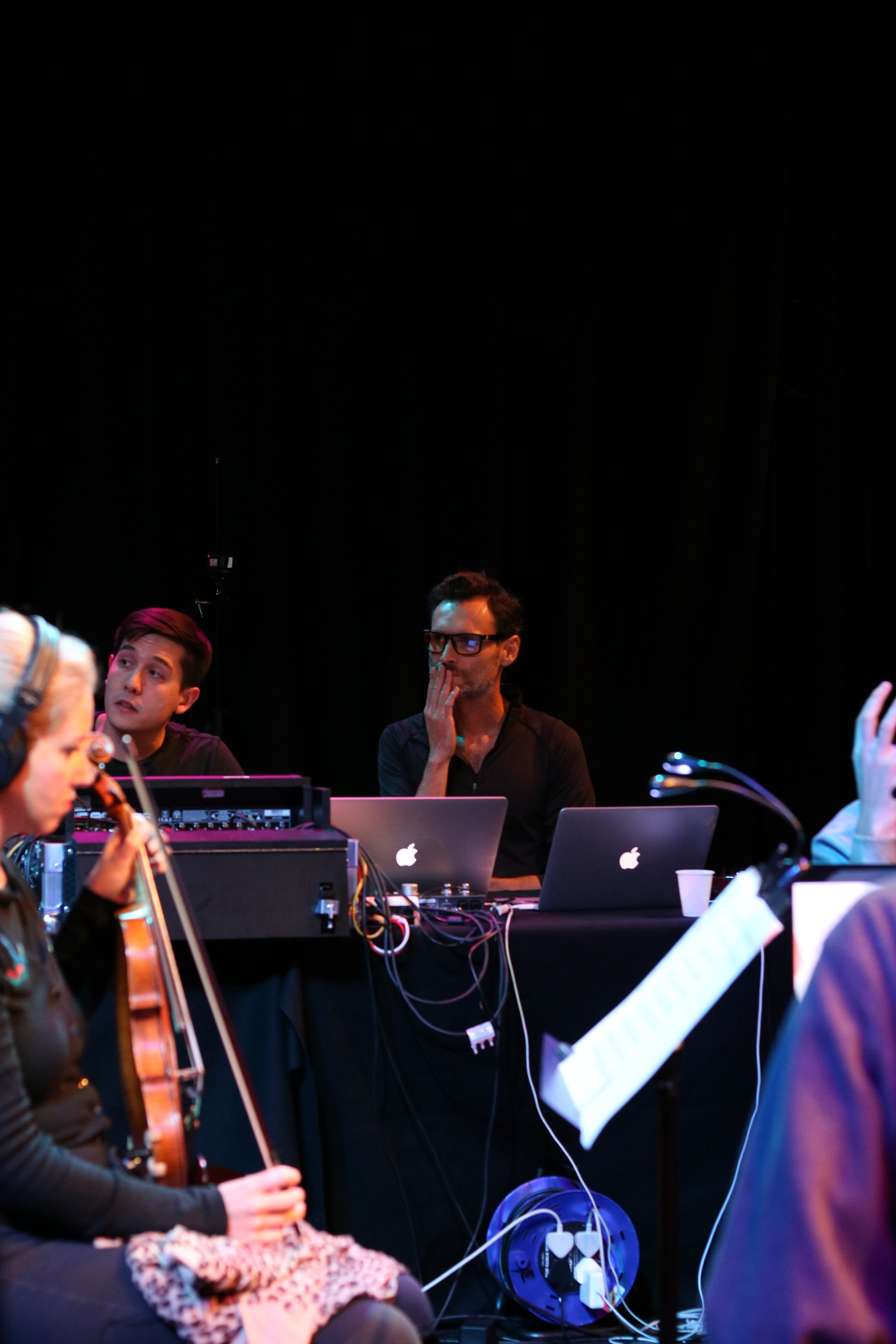
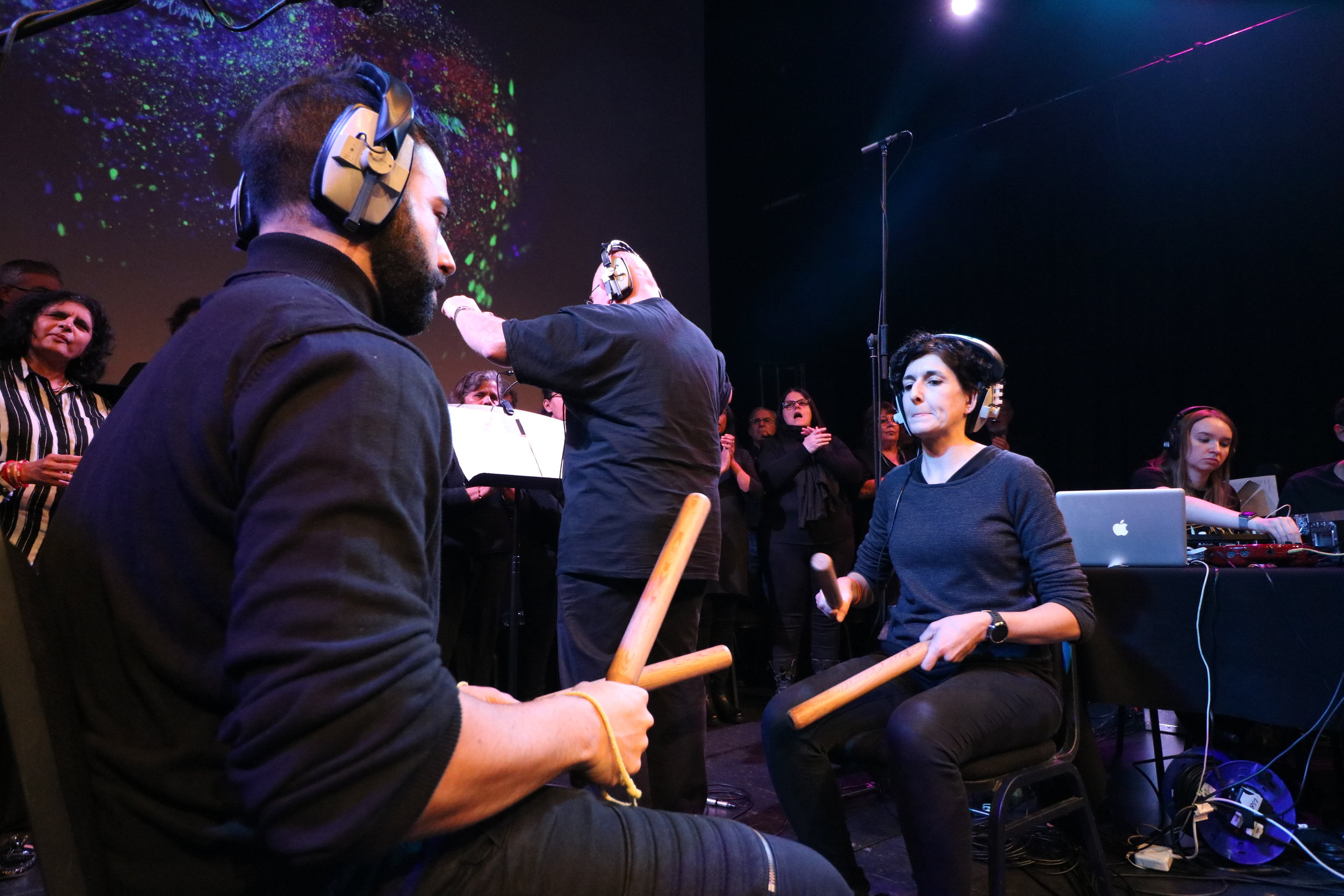
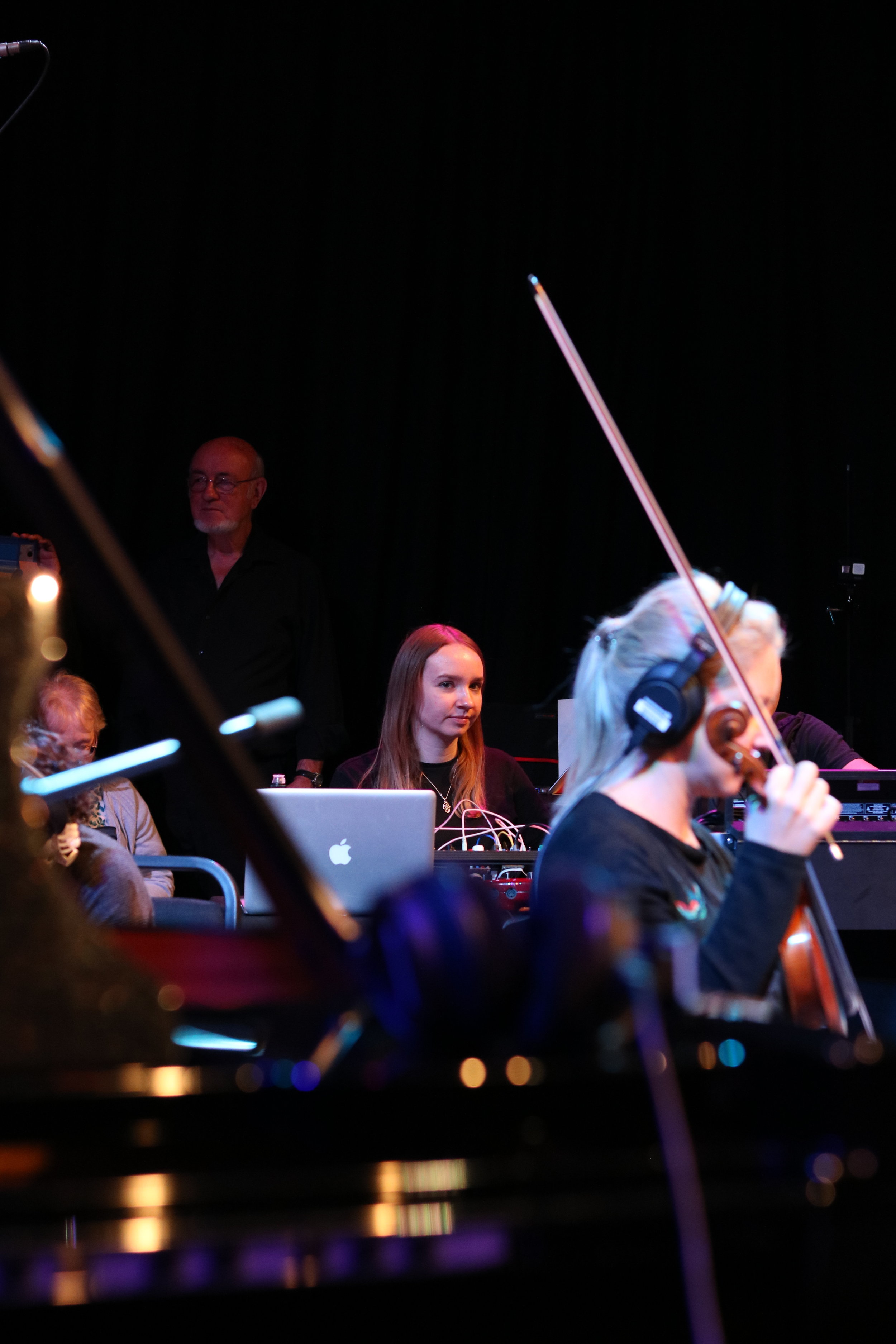

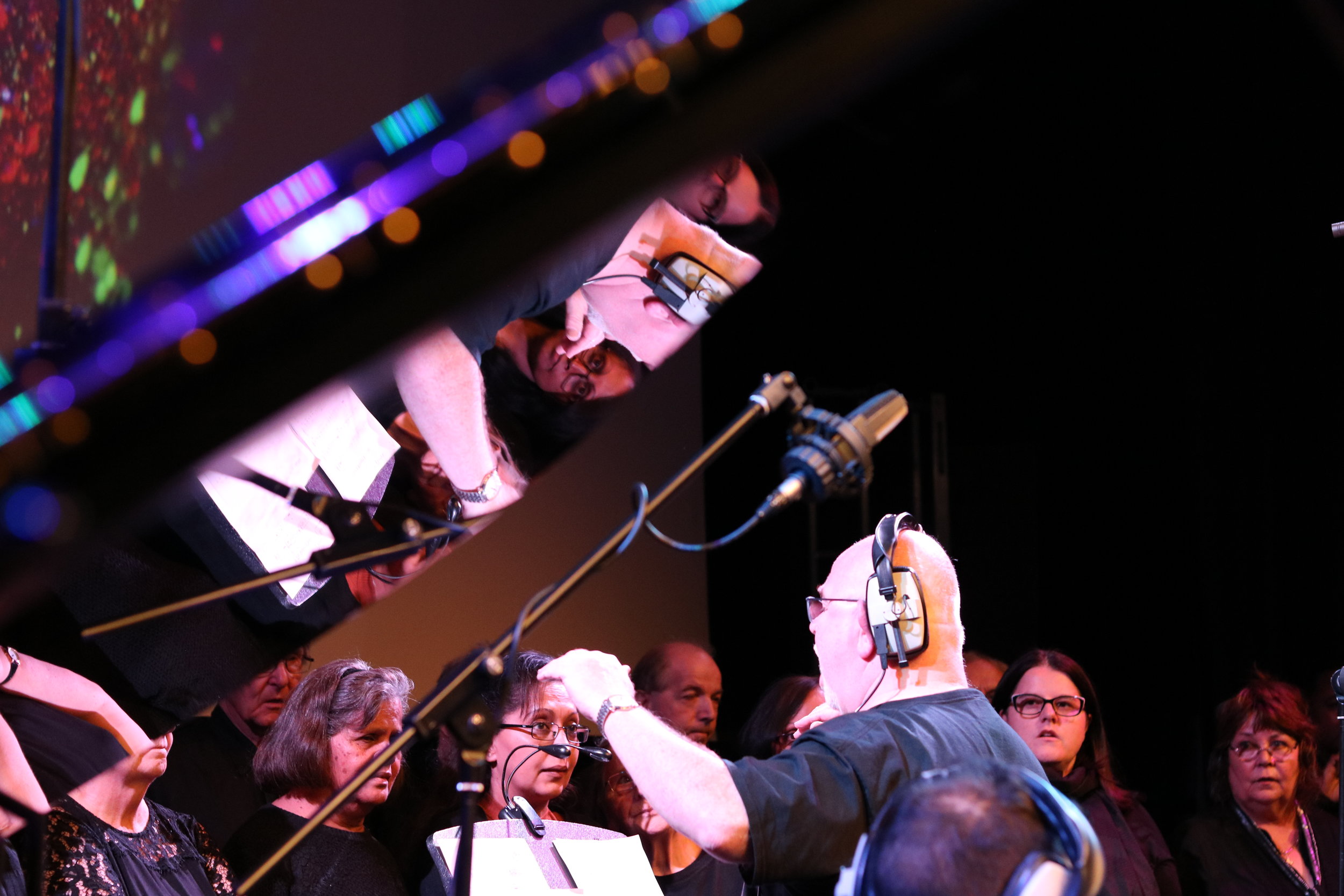
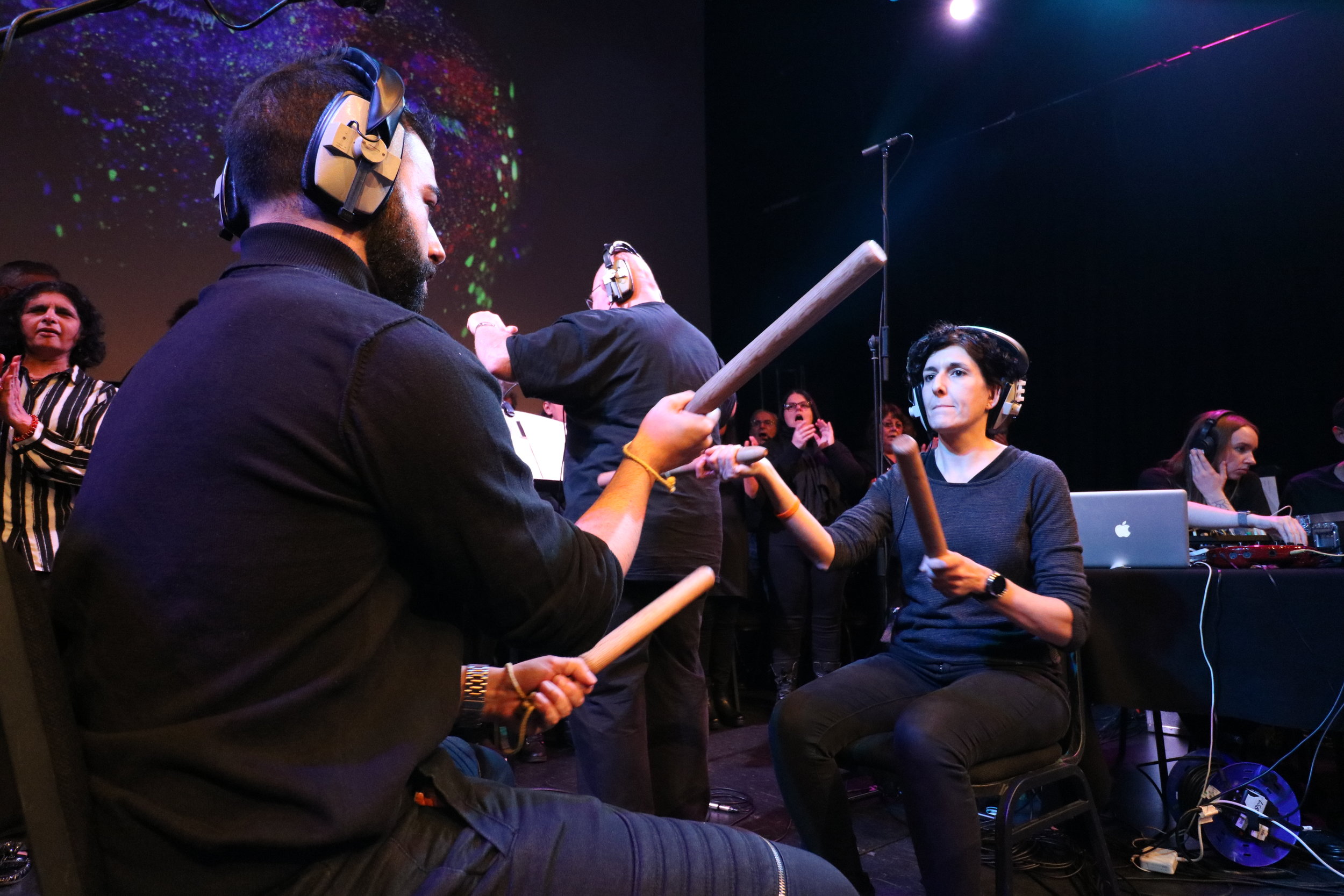
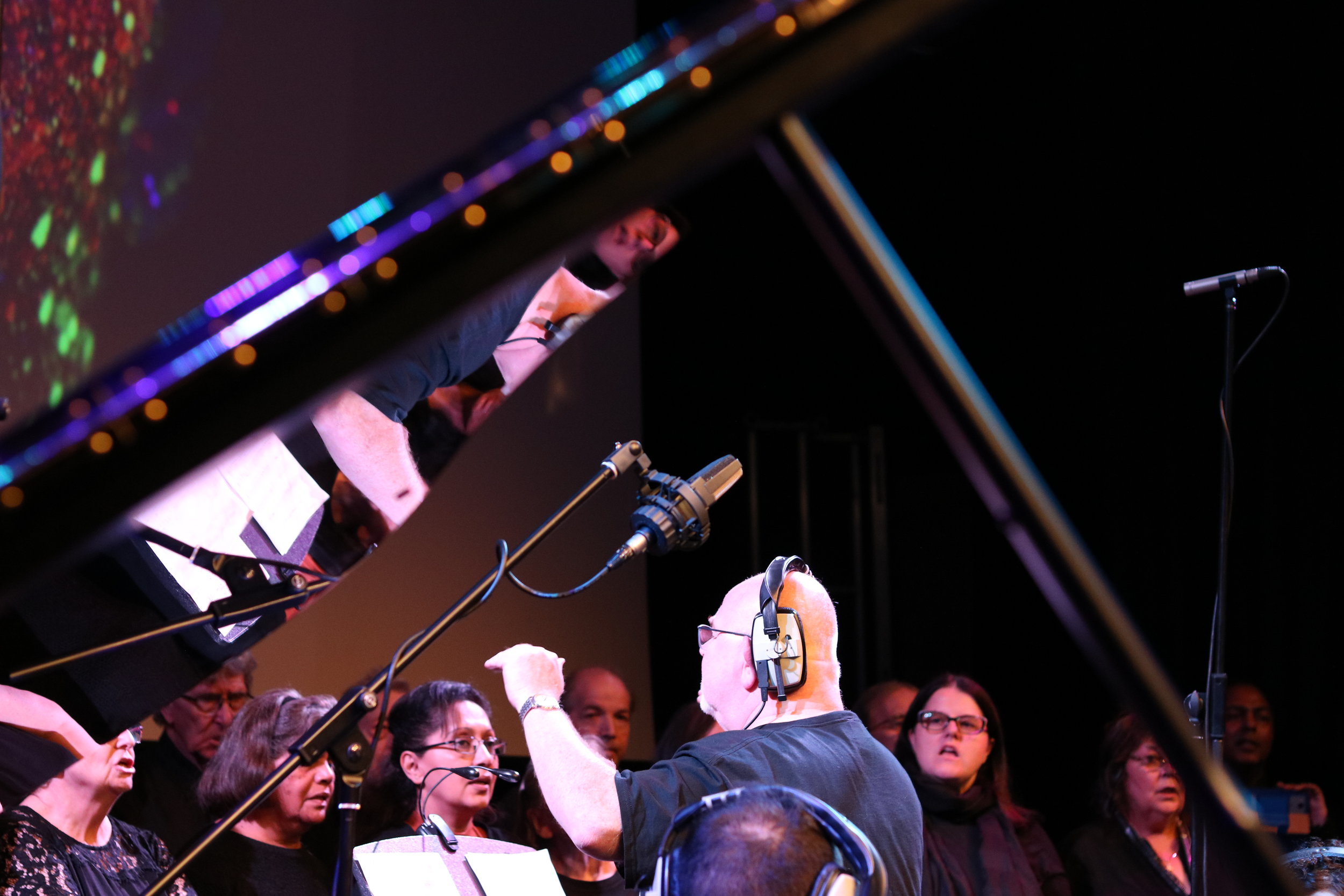
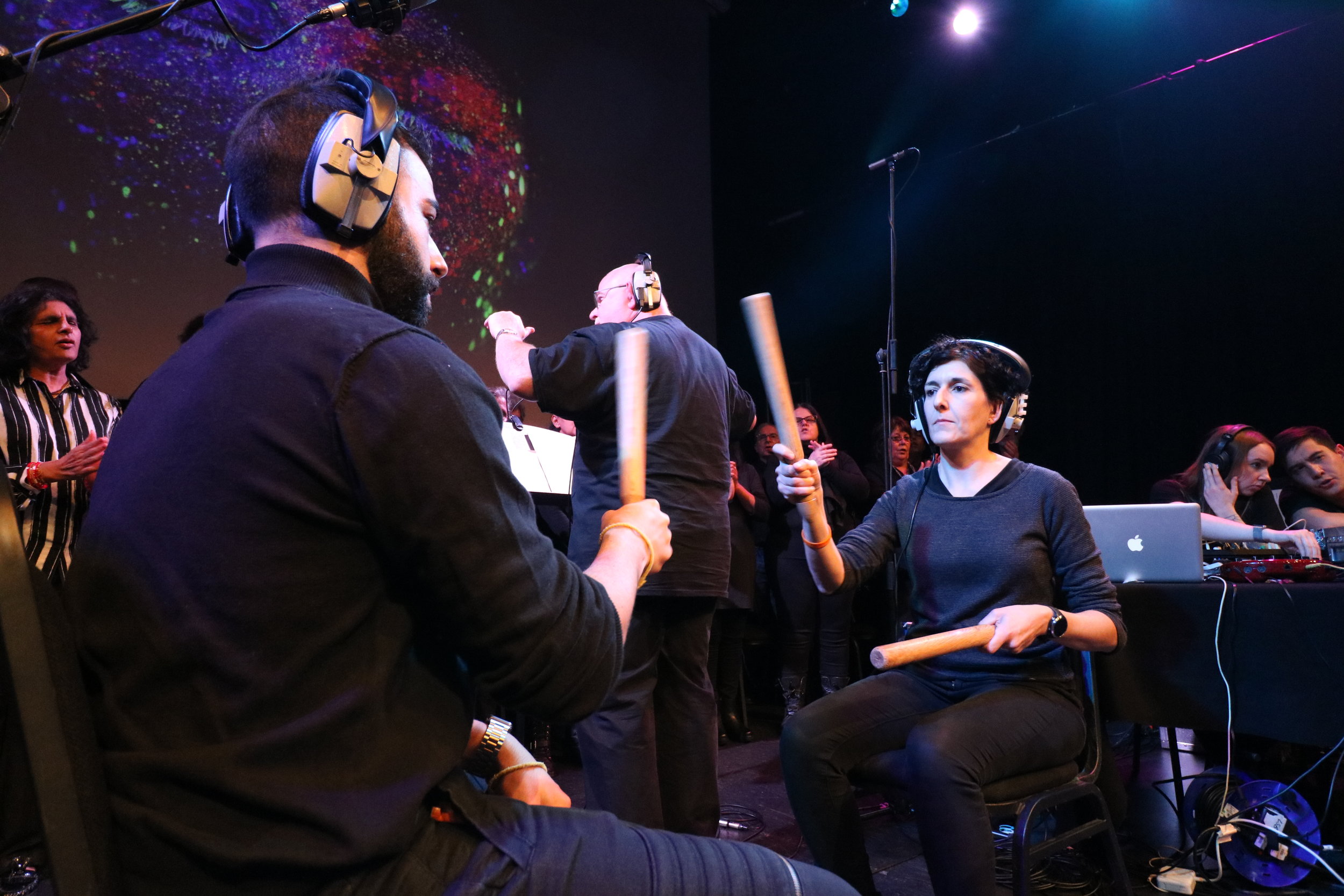
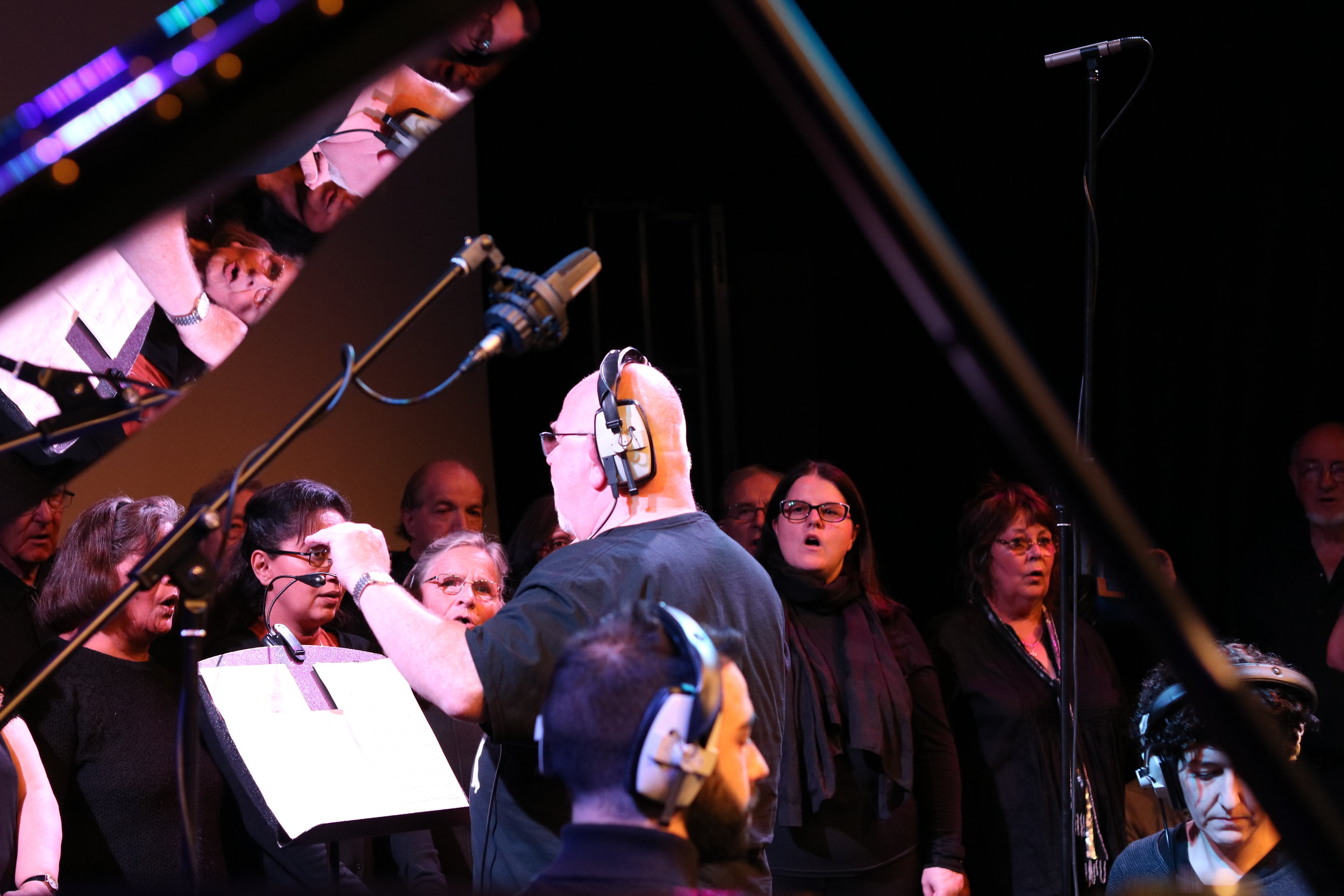
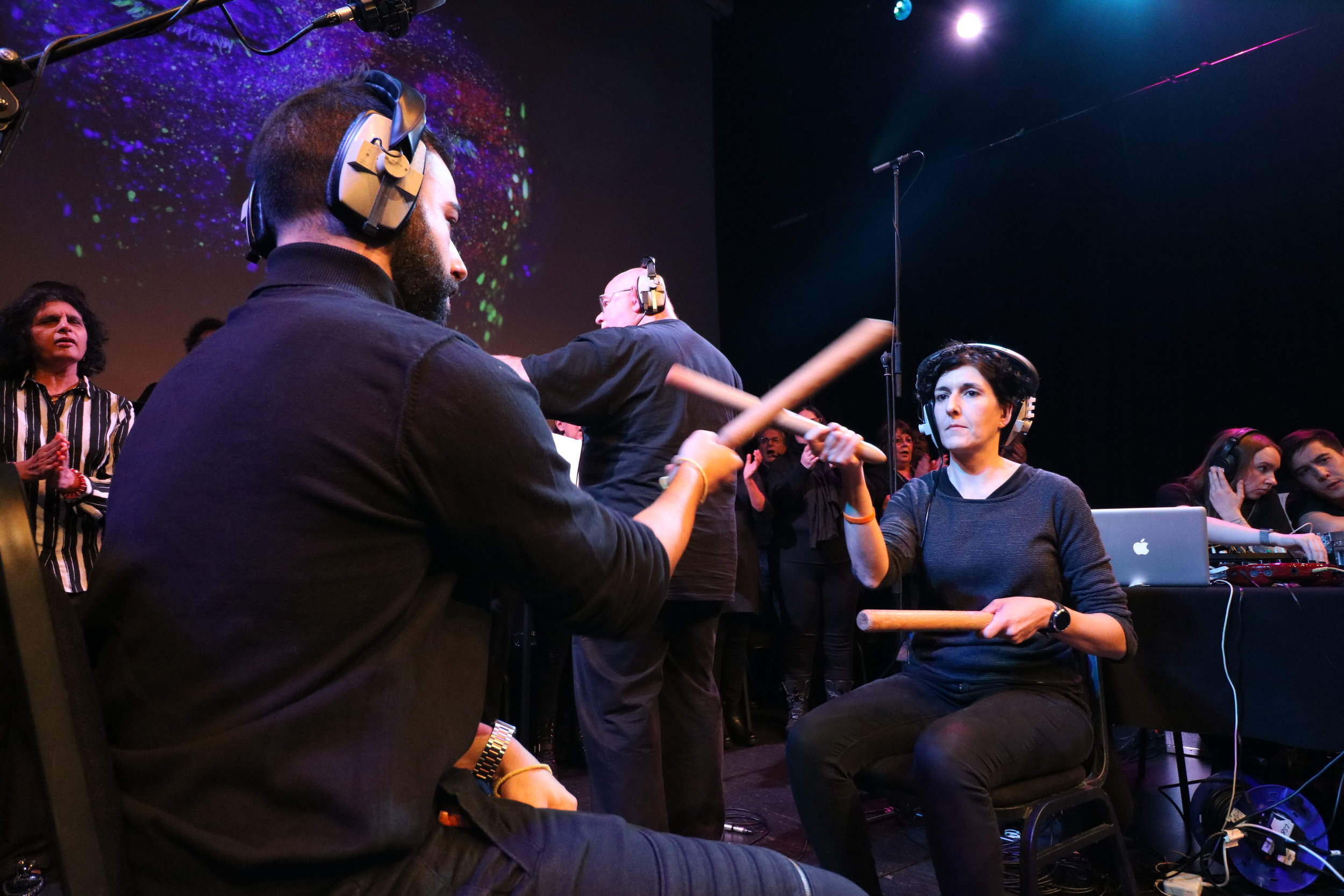

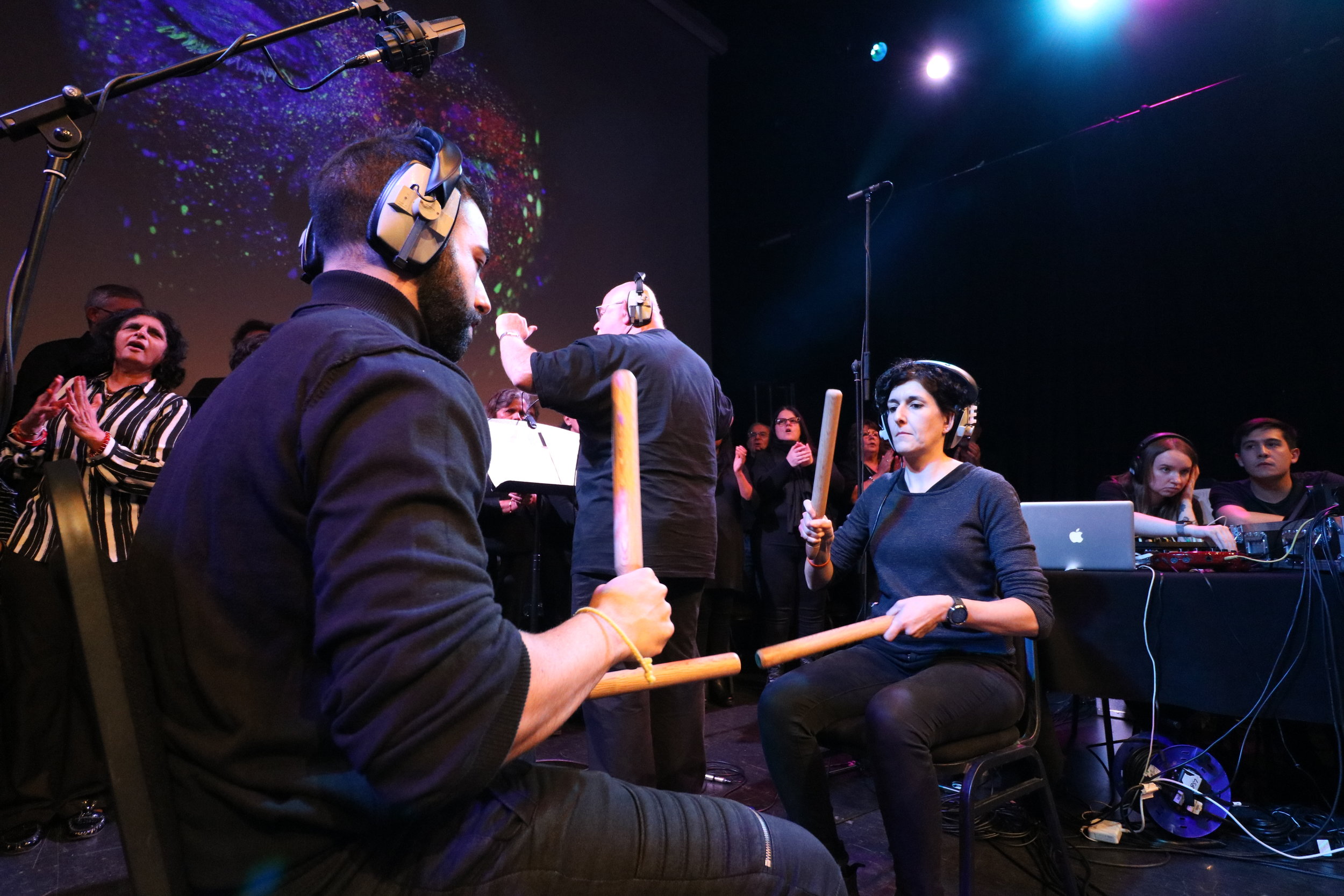
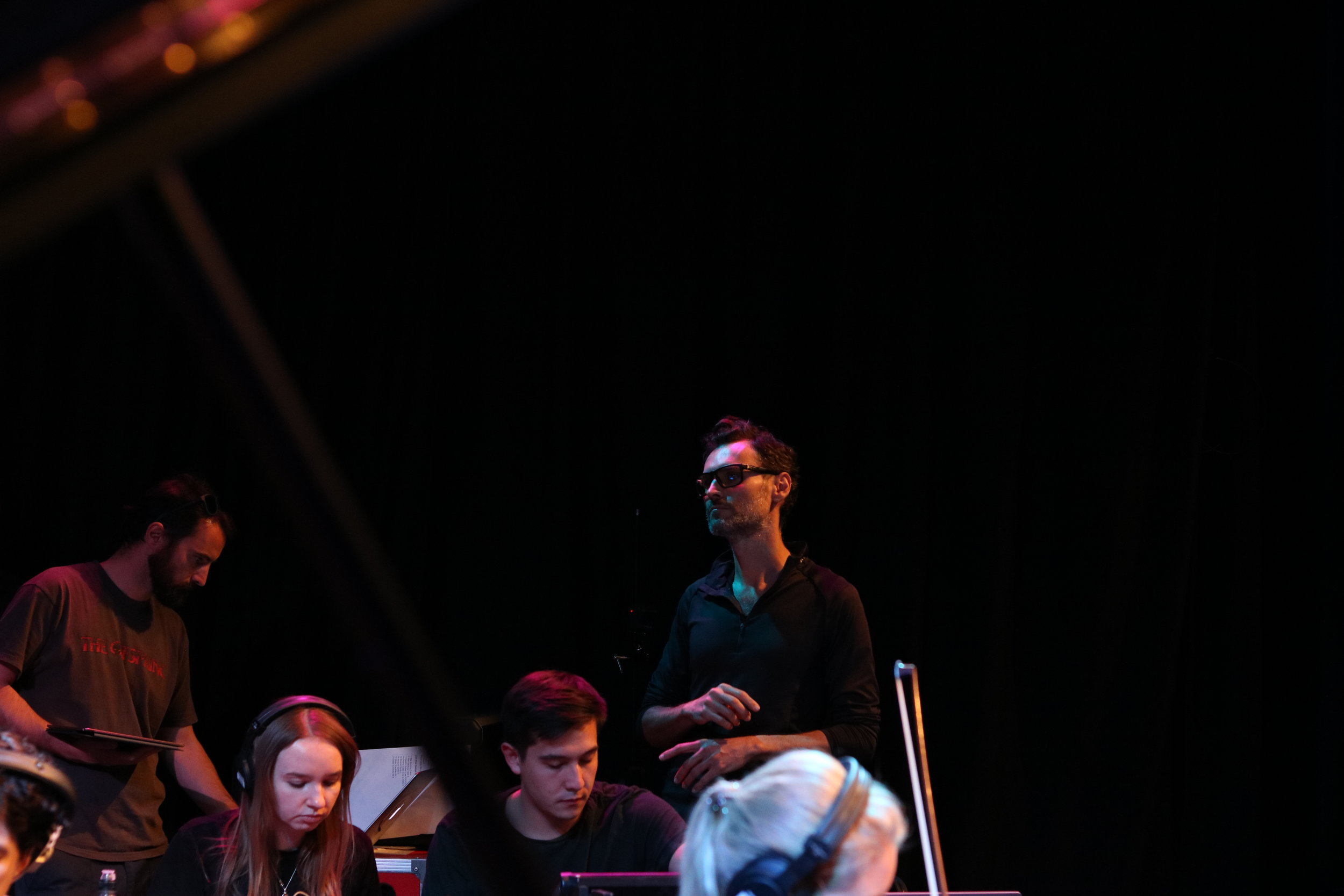
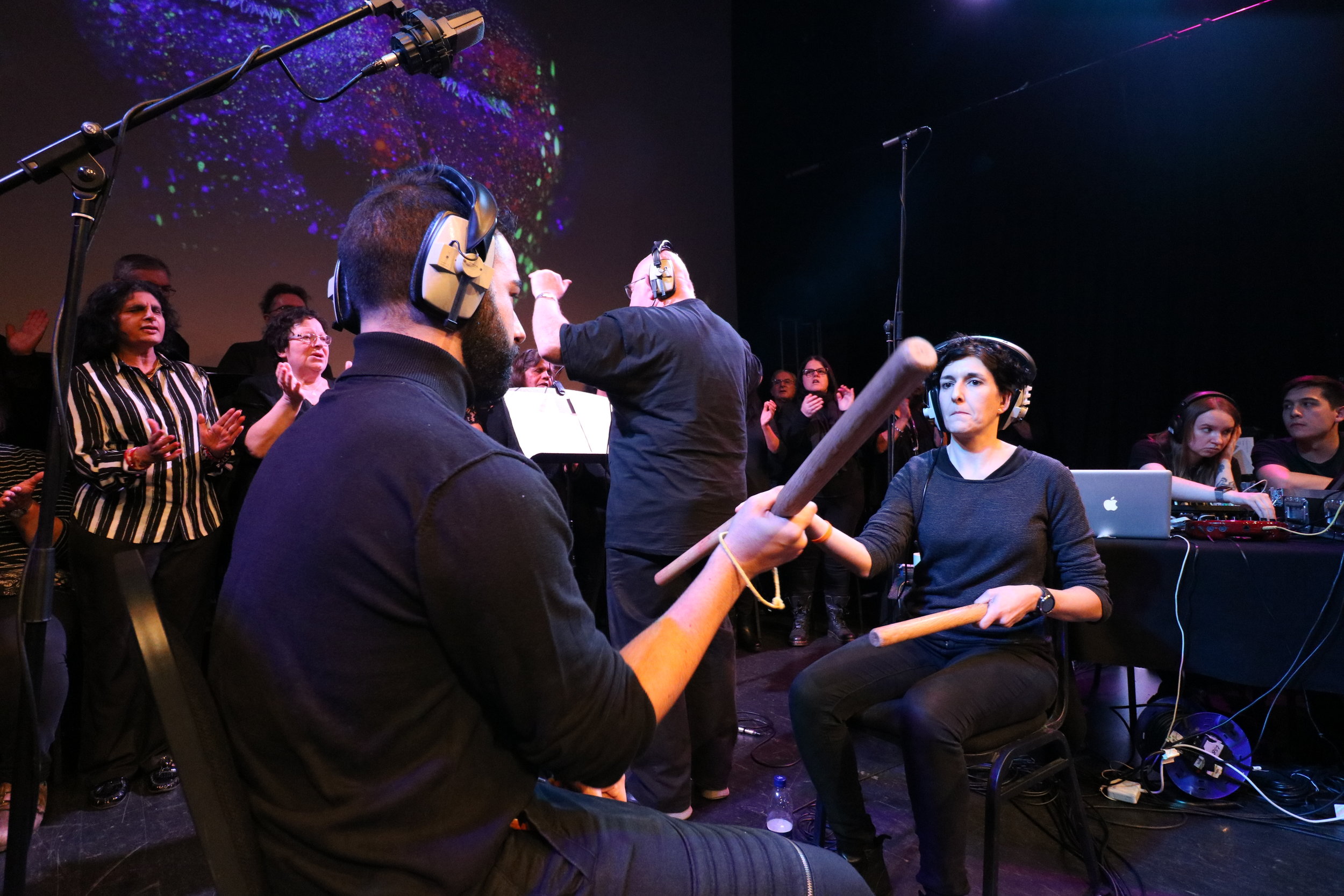

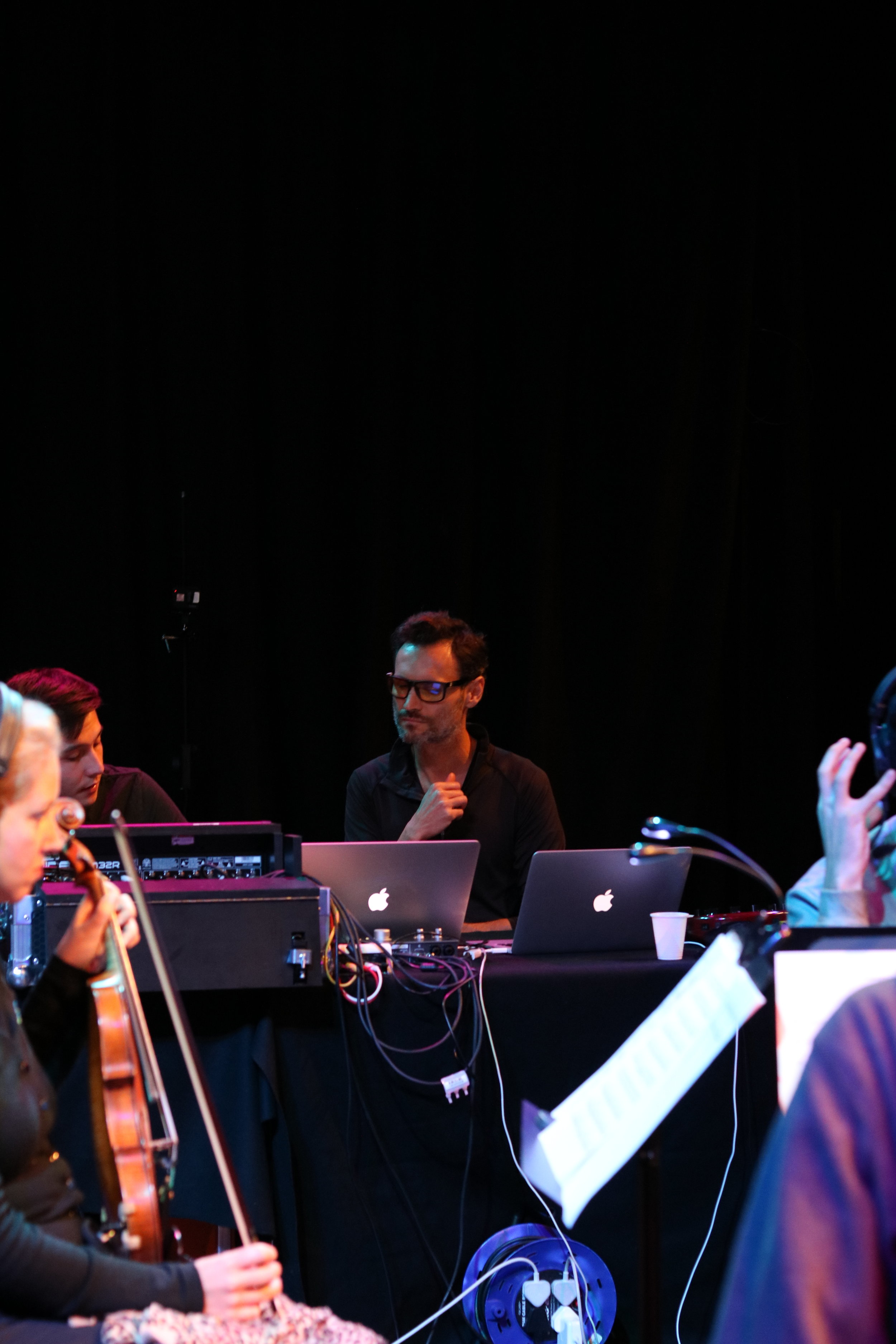
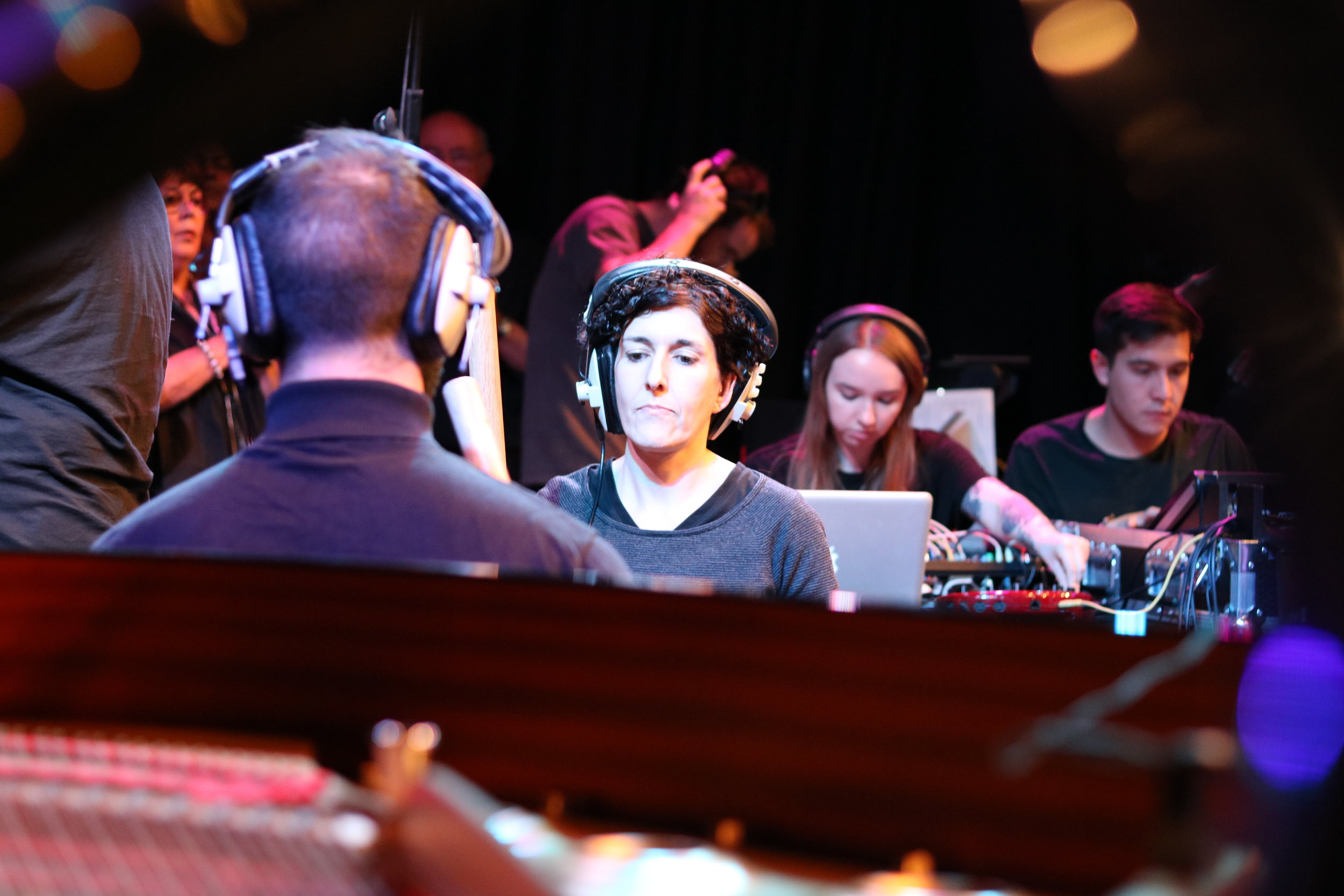

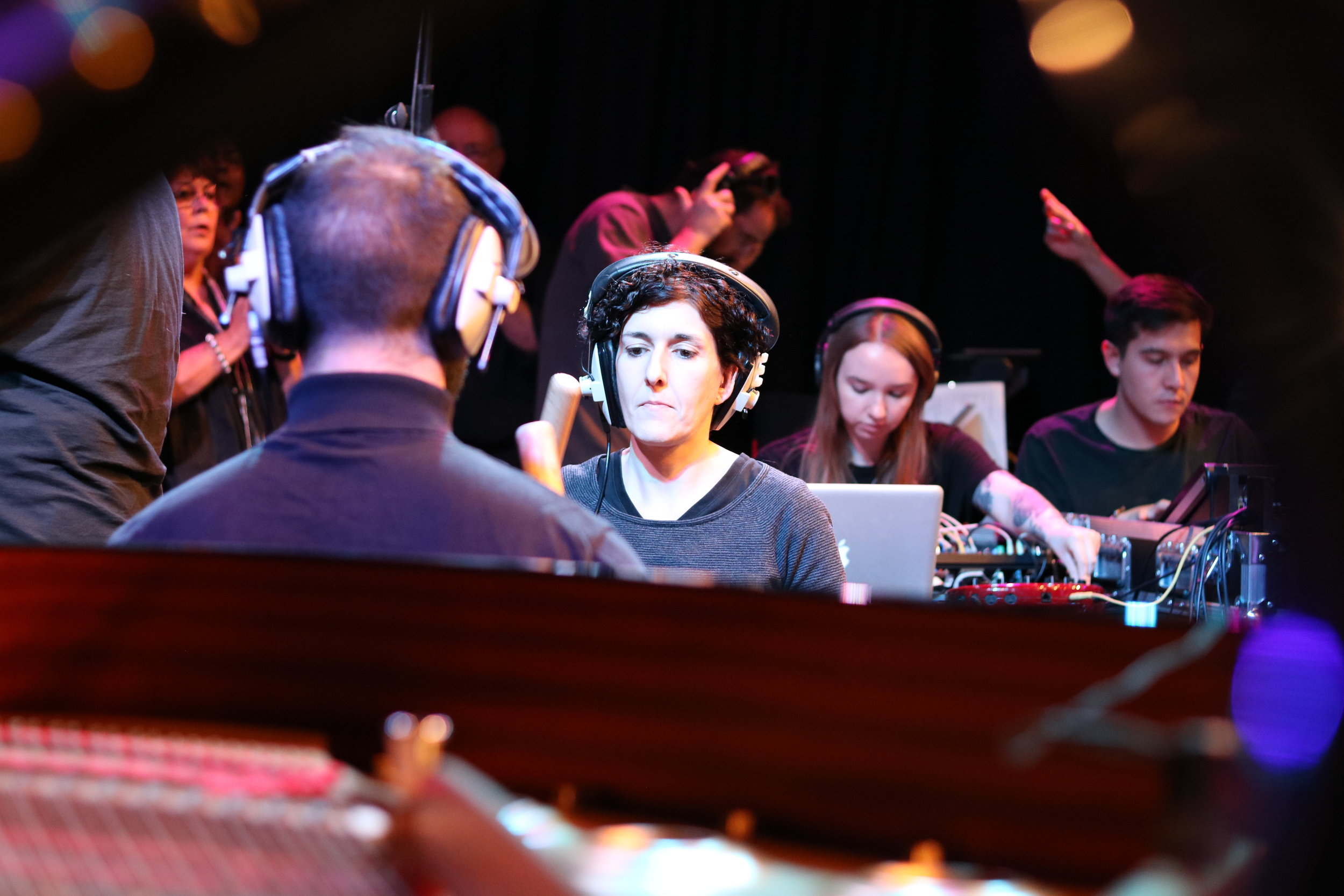
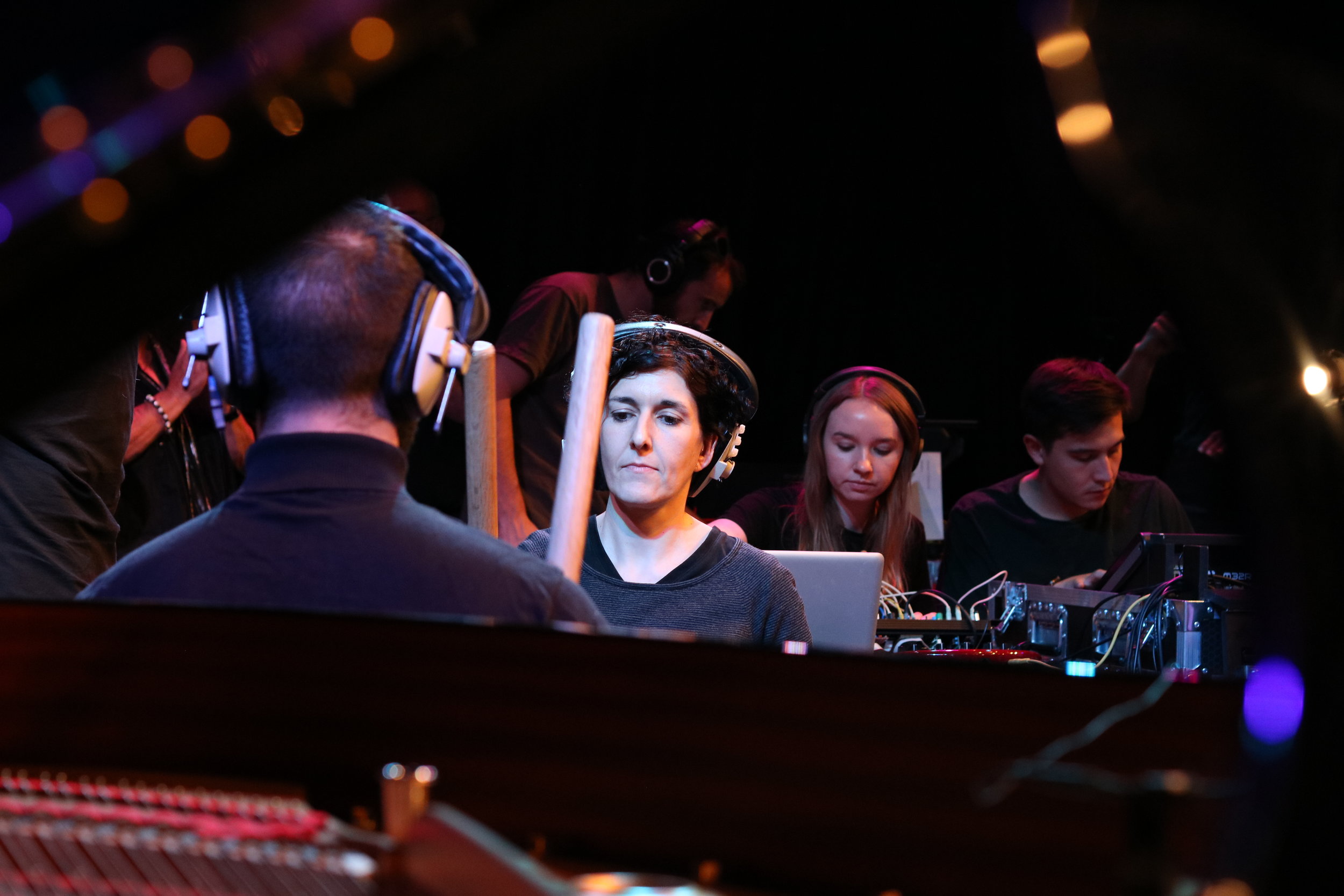
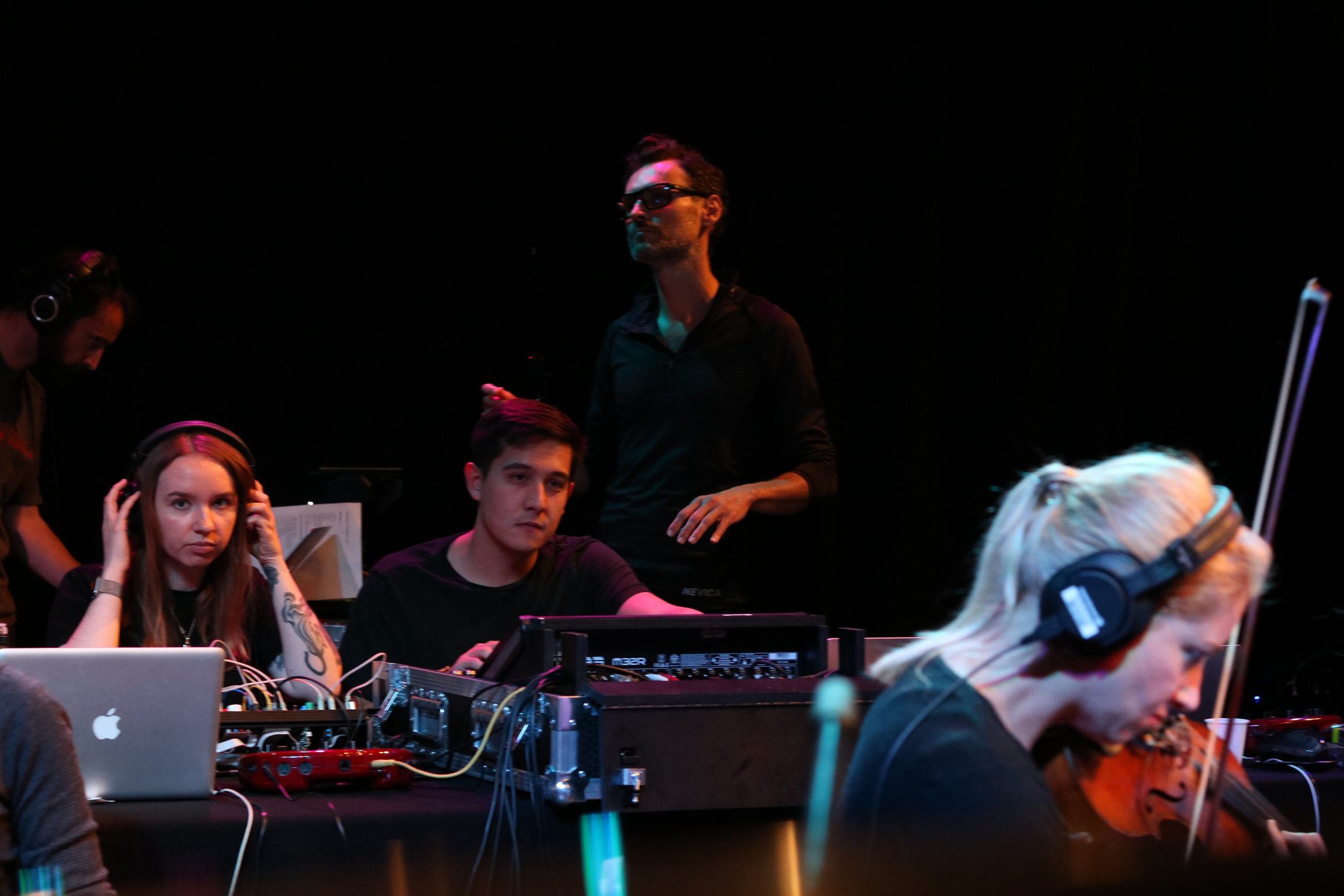
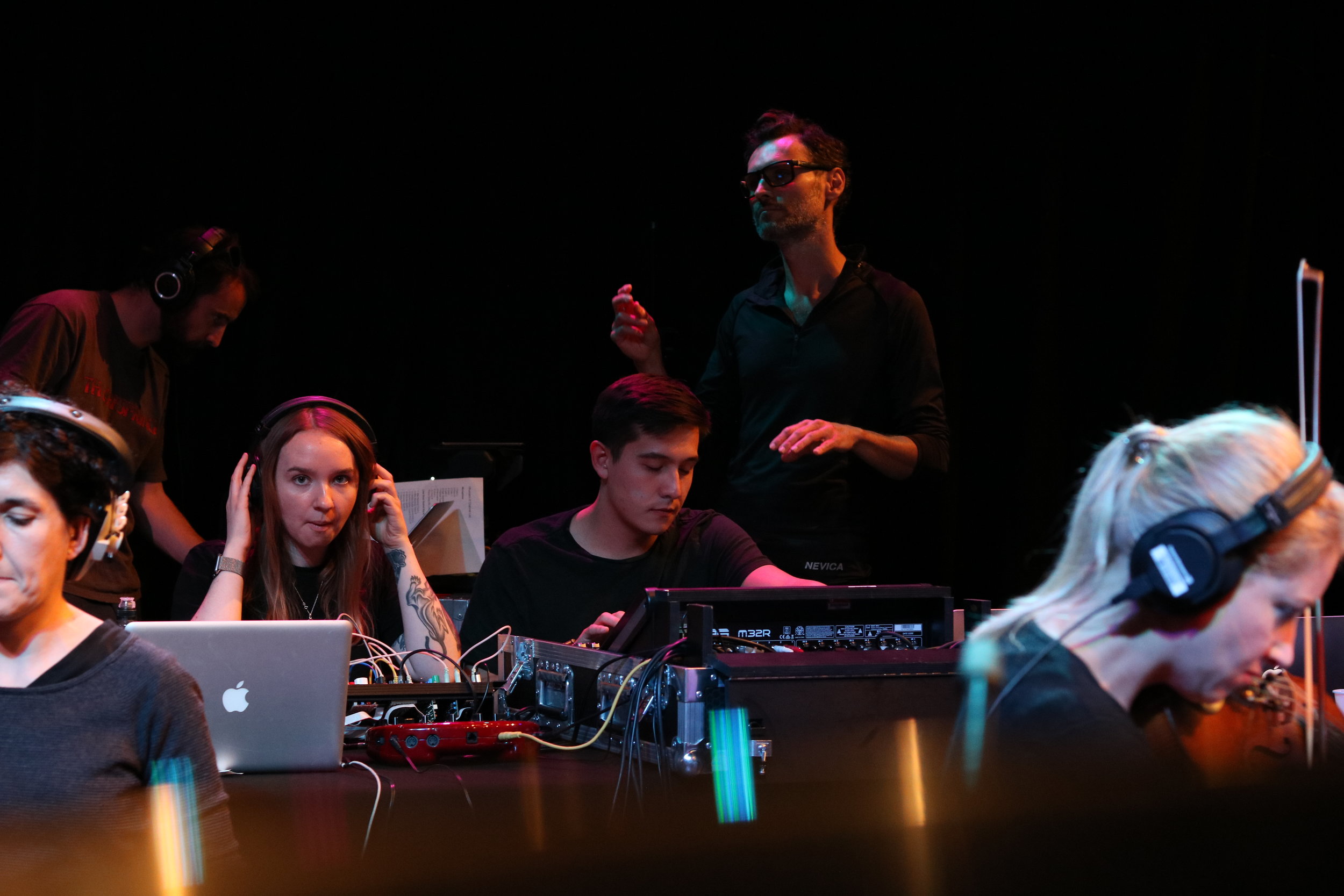
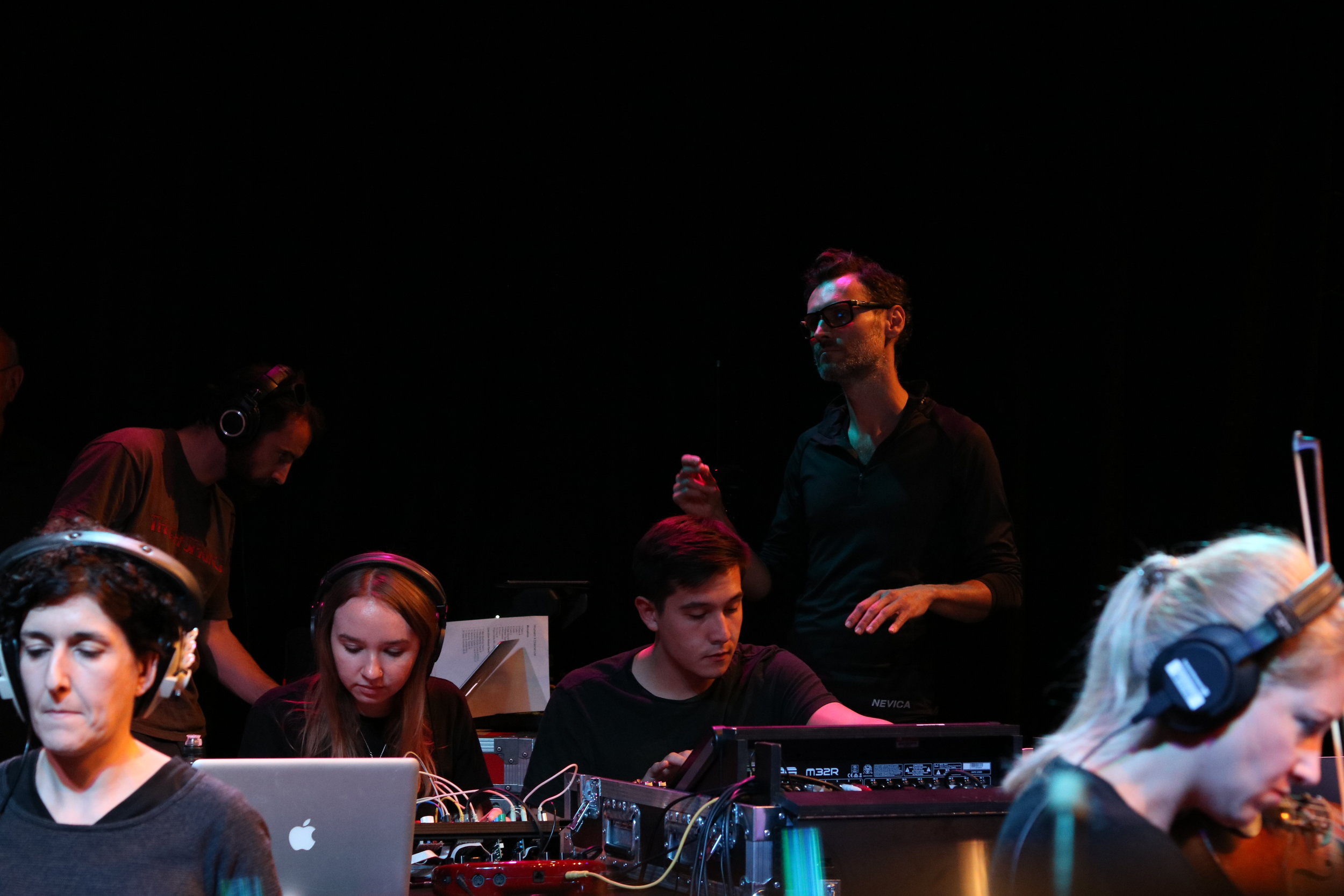
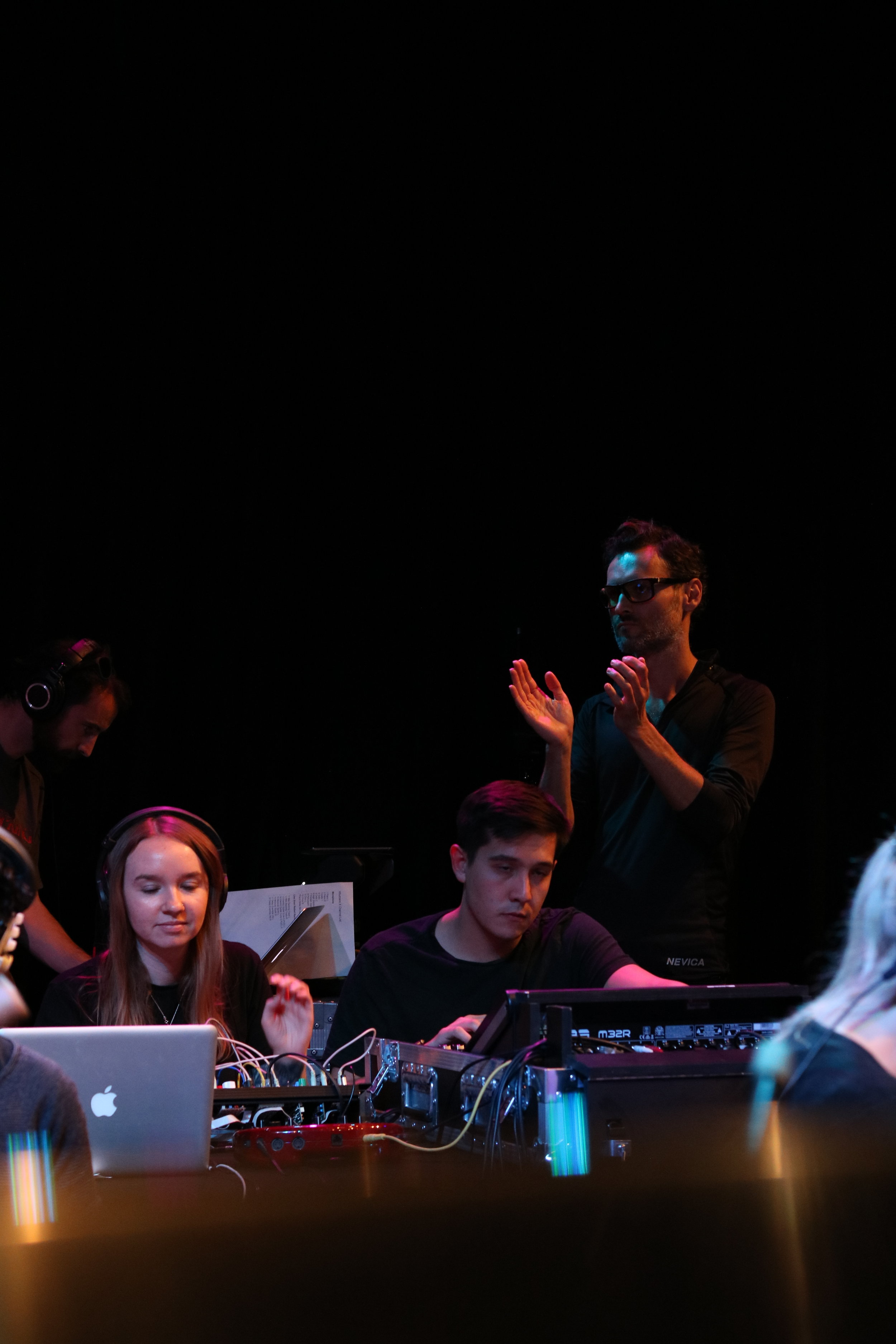
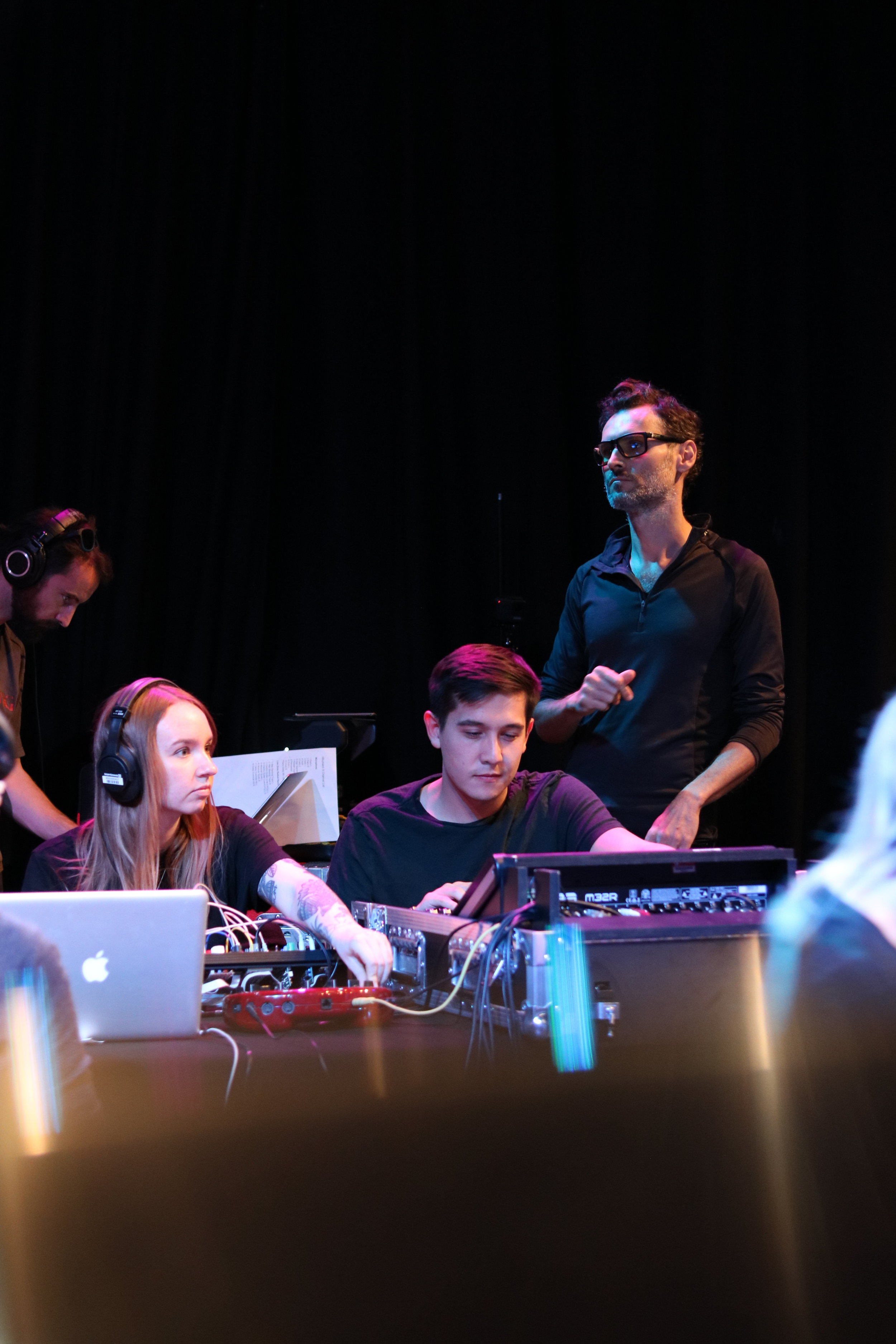
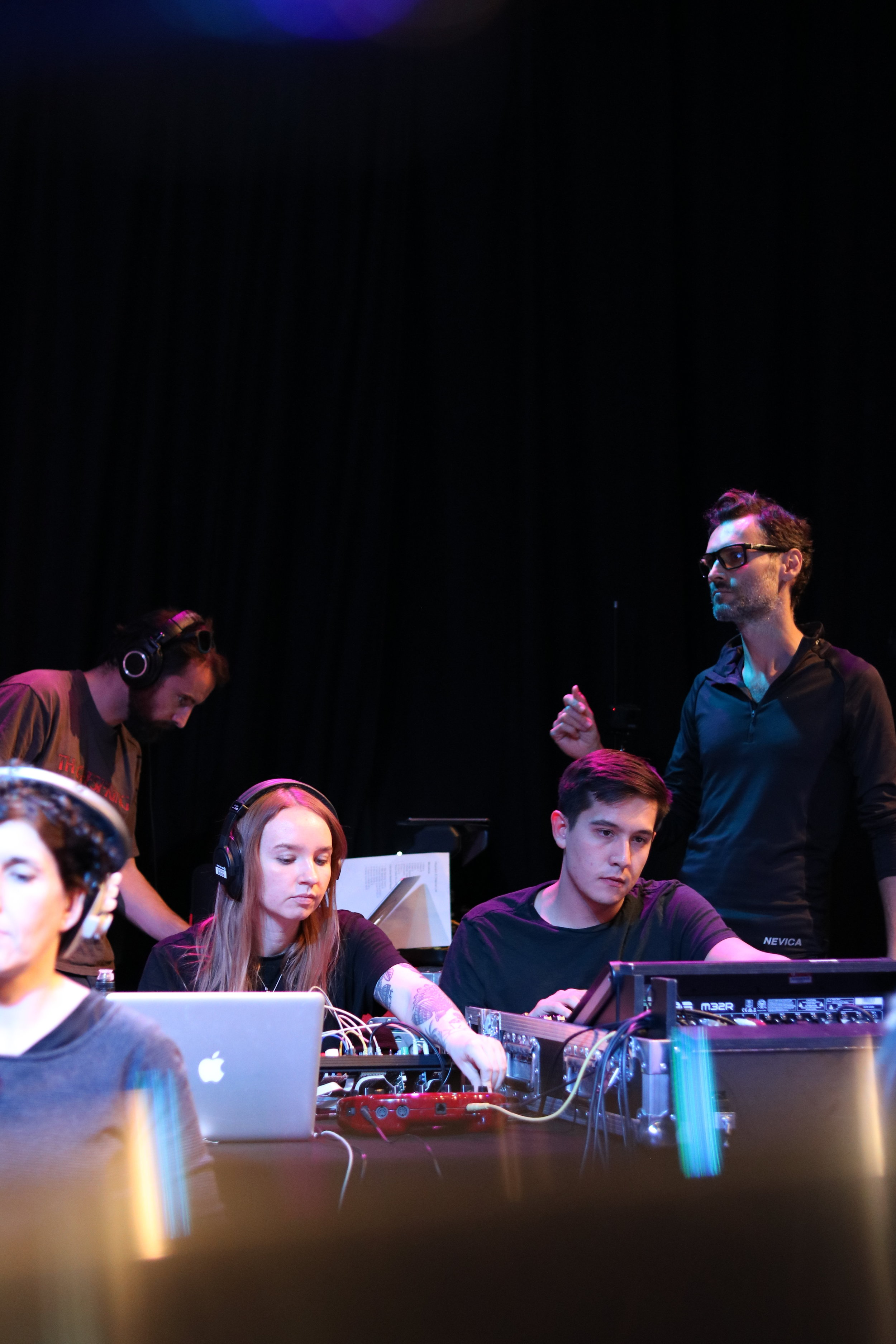
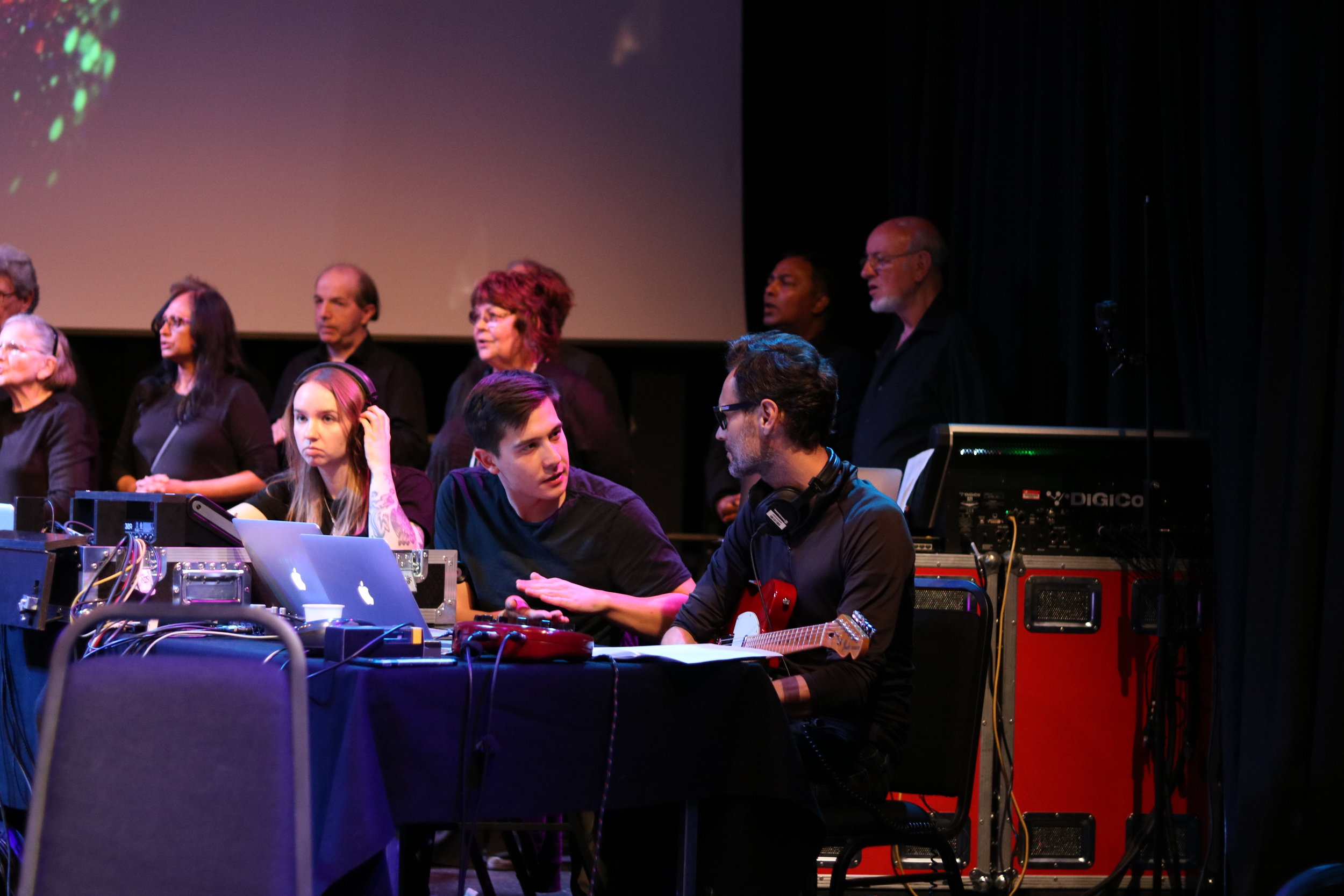
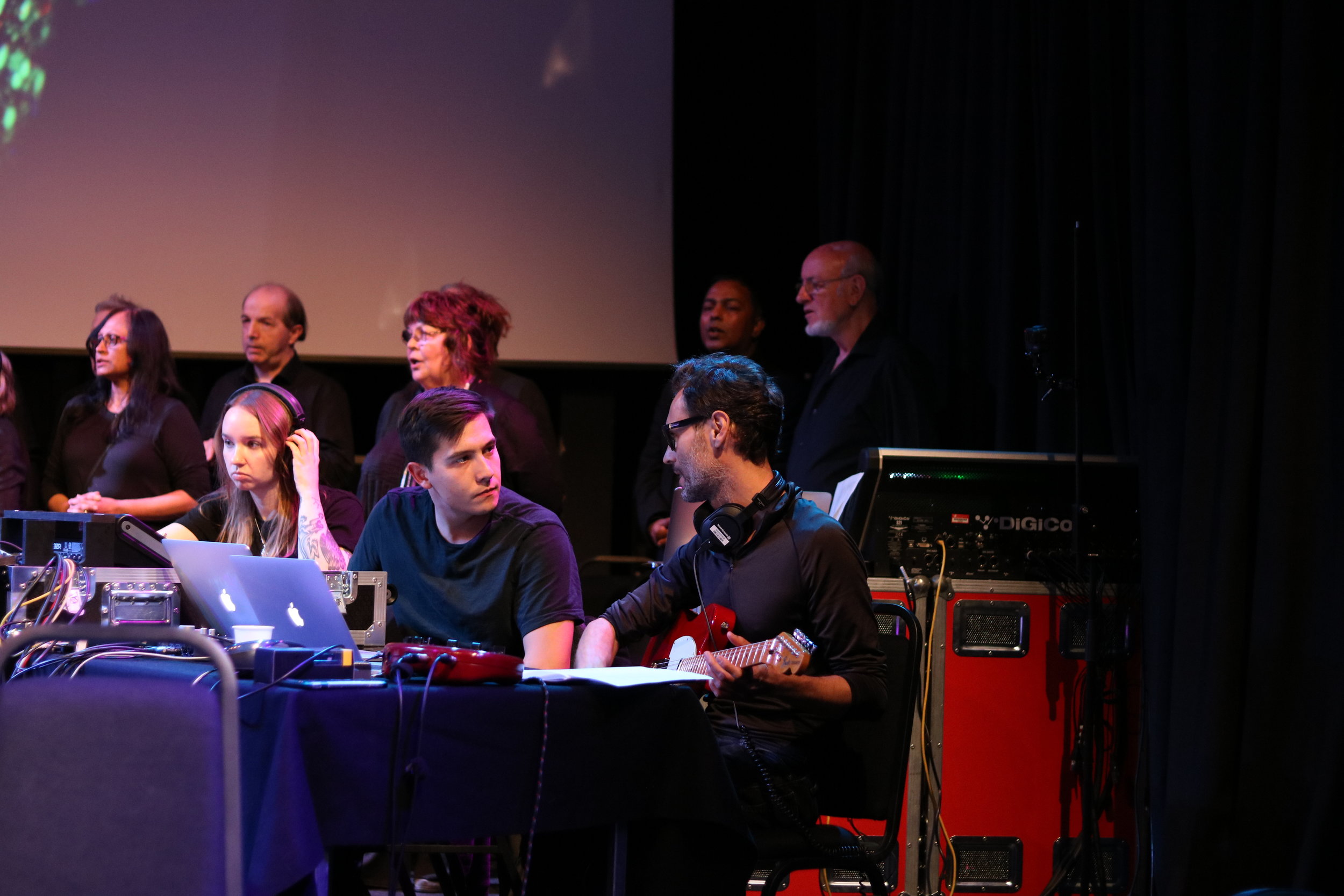
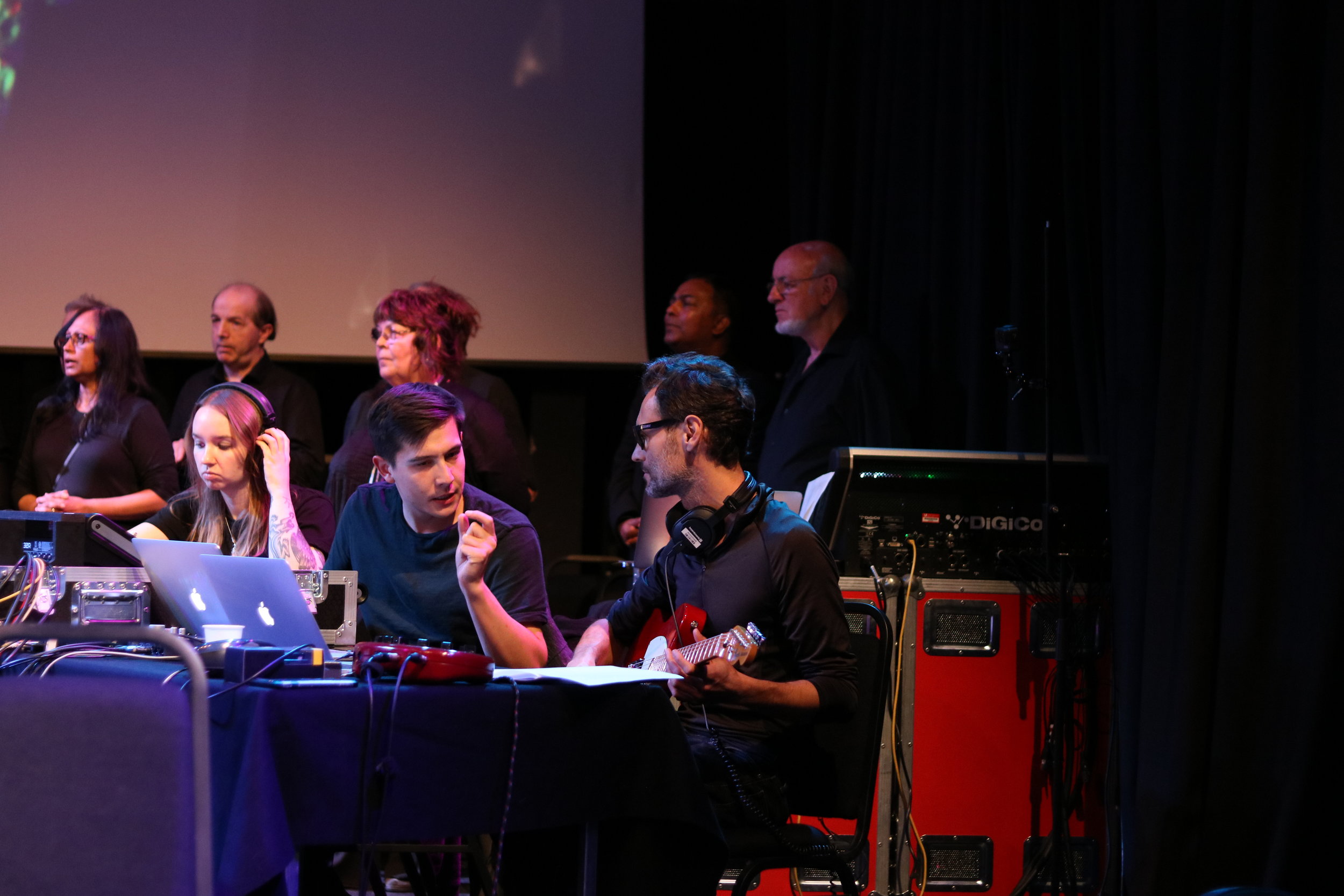

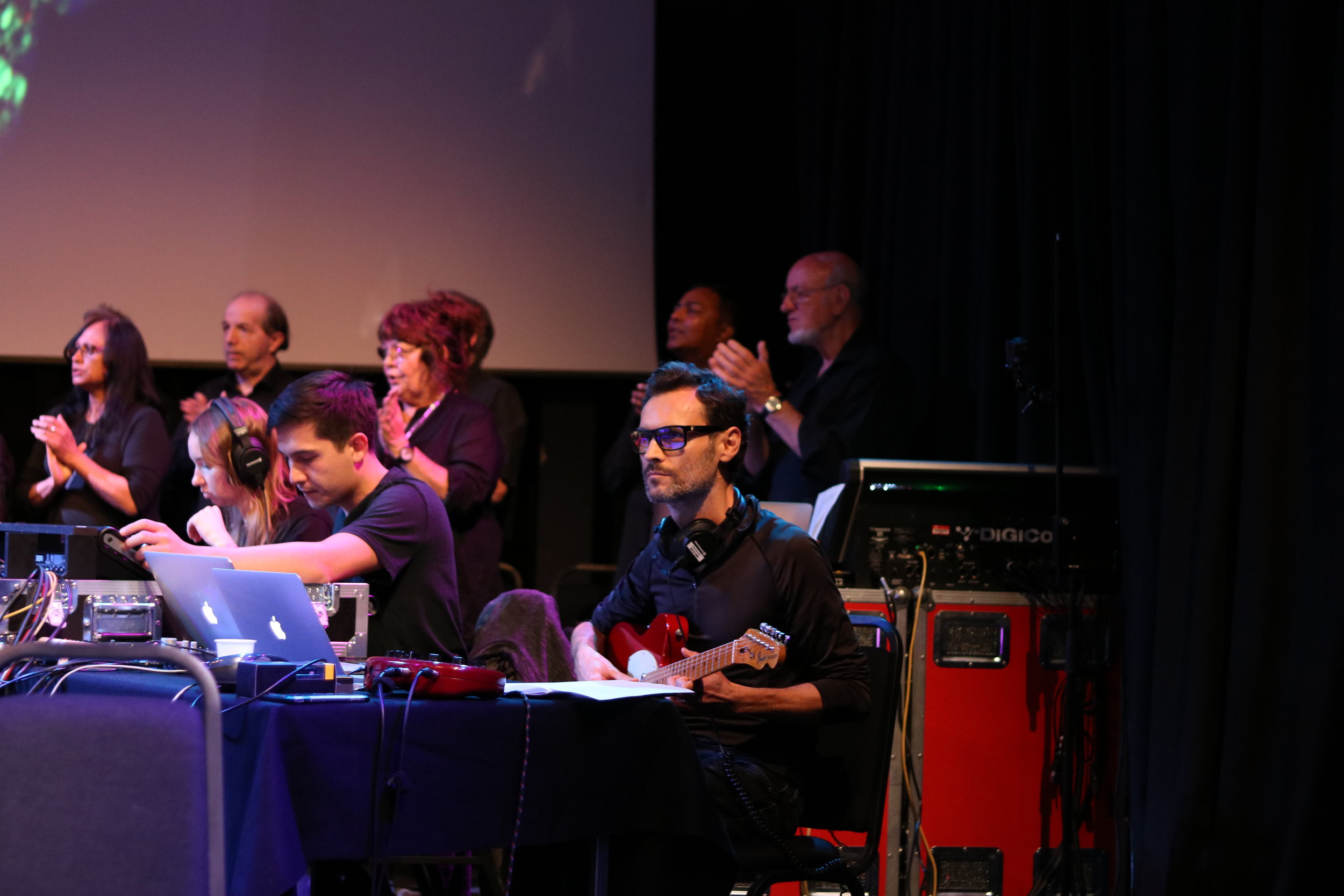
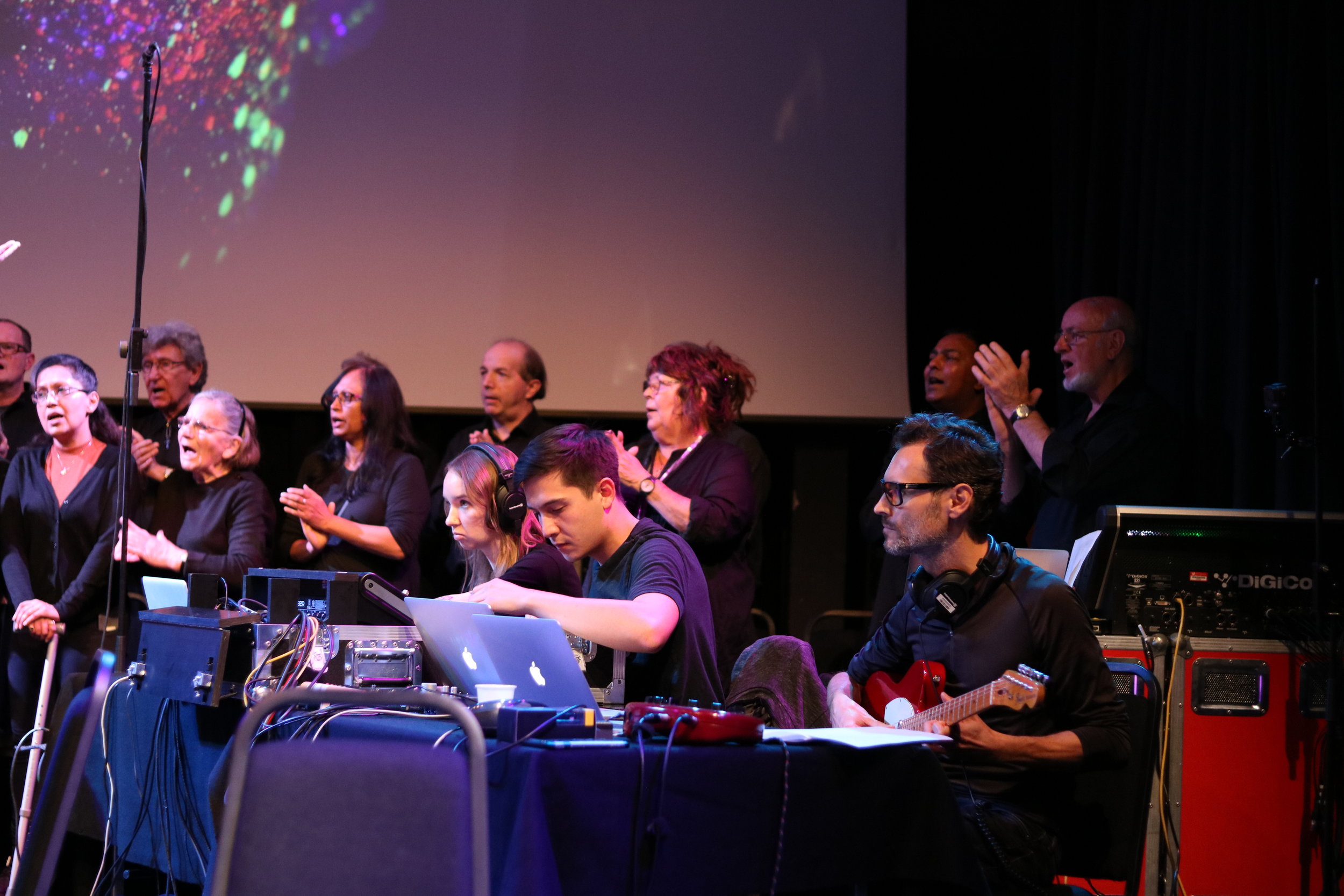
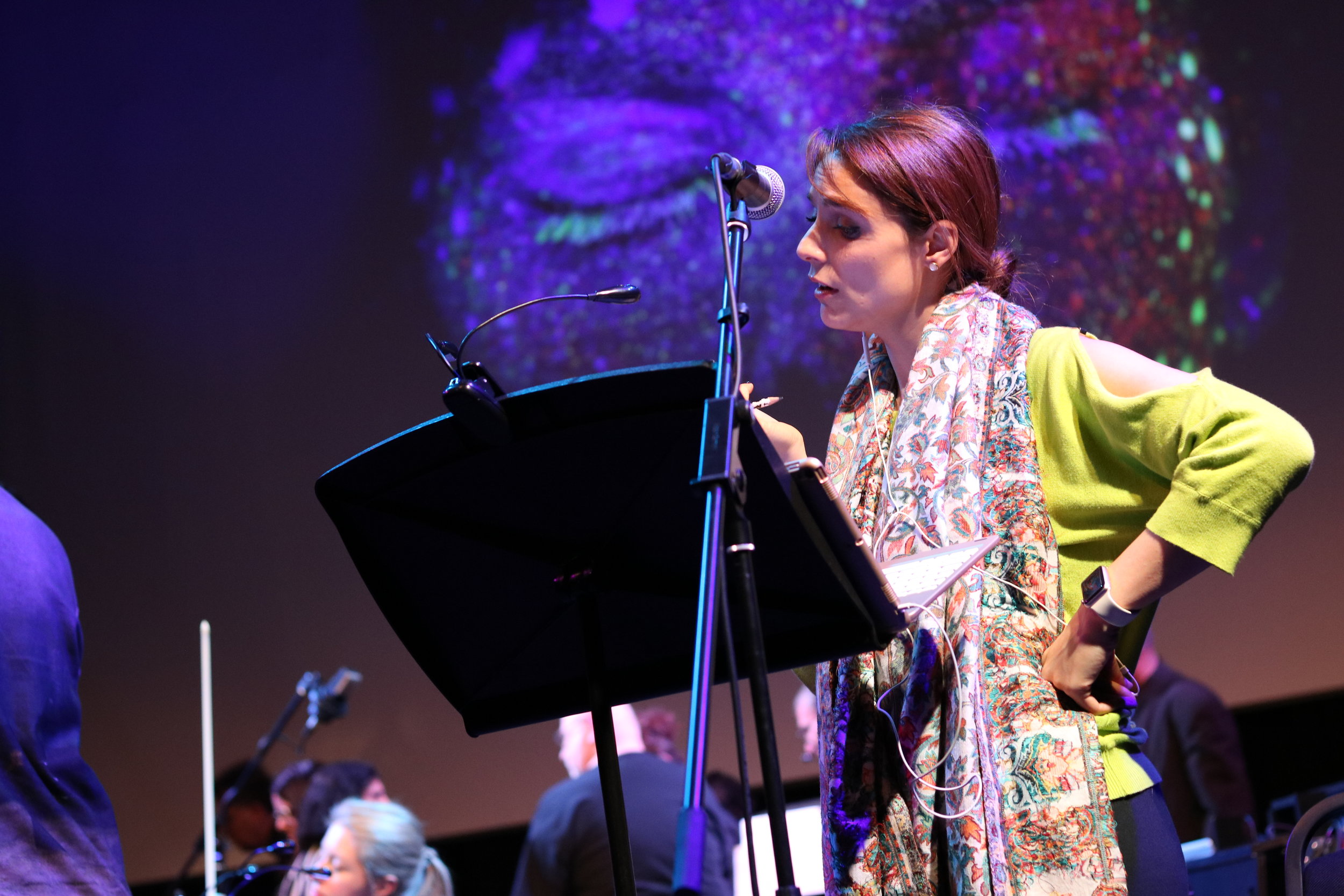
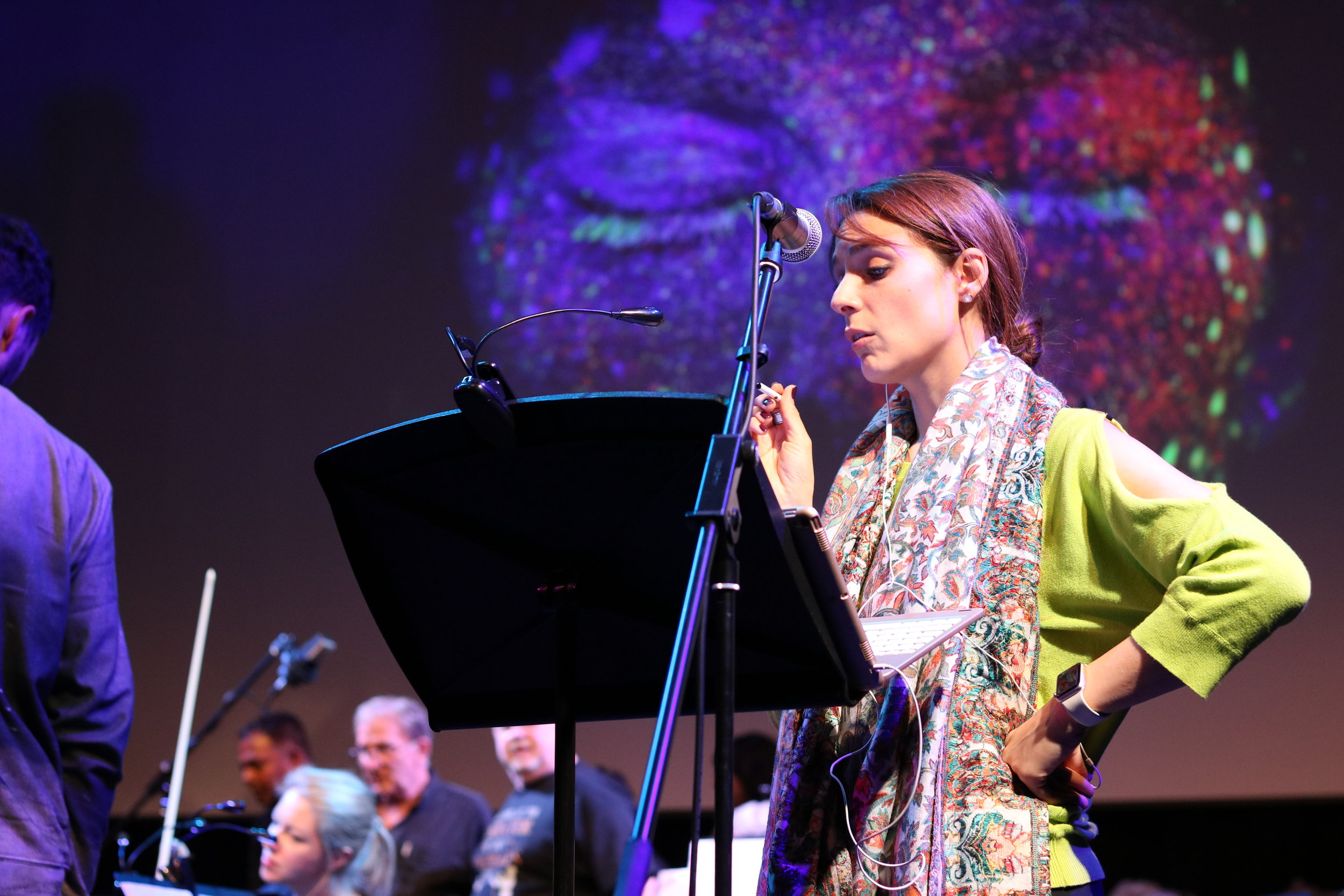
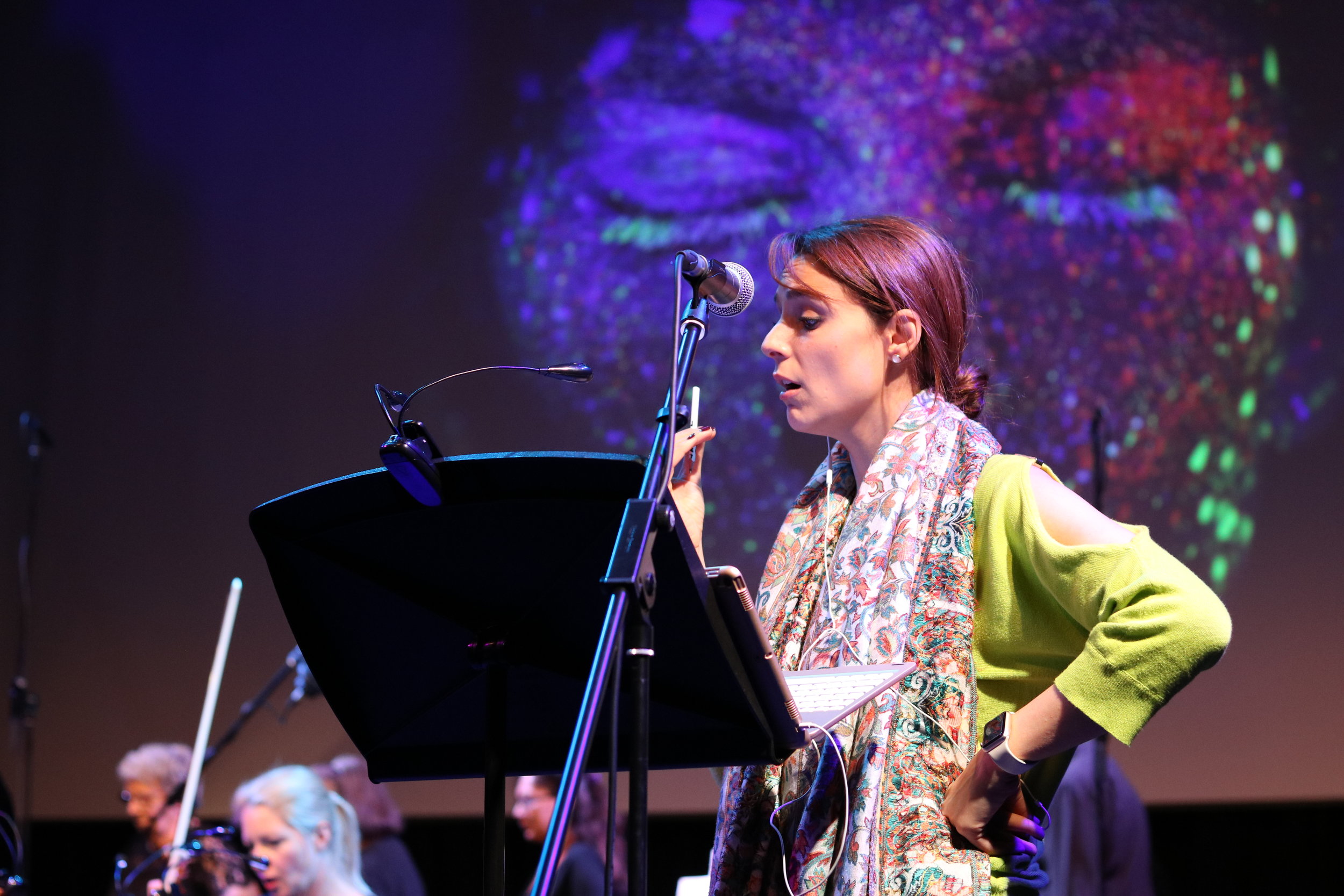
inception
To trace the origins of Hhumann X it’s necessary to revisit my two previous works, “Life from Light” (2012) and “2045: The Year Man Becomes Immortal” (2016)
“Life from Light” tried to raise awareness of the miracle of LIFE, how it appeared and flourished on Planet Earth and how rare it is in our known universe. That makes it extremely precious and valuable, although evidence shows we take this miracle for granted. The way humanity is irreversibly destroying the planet we live it and the life it sustains is testament of this generalised behaviour, a behaviour that not only can lead to our extinction as a species but can ultimately destroy the fragile ecosystems and the life they sustain in our planet. The piece tried to raise awareness on the imperious need to find sustainable ways for us to live on this planet.
“2045: The Year Man Becomes Immortal” moved the focus away from life itself to the end of life, DEATH, and our attempts to prolong that fate indefinitely through the means of technology. Technological Singularity, this dystopian future where man and machine finally merge and humanity is finally able to prolong life indefinitely, is used to reflect on the nature of life and in what it means to be human. The piece argued that there’s possibly a purpose to dying, that there’s a purpose to nature’s life cycles, and that the technocratic path we’ve embarked on is possibly distancing us more and more to what it really means to be human and from our purpose as humans, echoing concerns raised already by figures such as Stephen Hawking.
Therefore I had explored the creation of life and also the end of life, and in a way I had avoided what happens in between, life itself, the human experience itself, something I tried to explore in “Hhumann X” (2018) in a way completing a trilogy of works.
So “Hhumann X” intends to reflect on the greatest enterprise in the world, one’s own life, this journey we call life that we sometimes fail to comprehend. It is a journey we undertake with others, but also a journey we undertake within ourselves. The solitude we sometimes experience in this journey became the focal point of the piece, a solitude that is not always borne from a disconnection with others but mainly from a disconnection with our true self, our essence as humans.
Modernisation and progress have raised our living standards to the highest in human history, yet recent studies show that rates of anxiety and depression are reaching epidemic levels, especially in the Western world. At the same time, whereas technology has enabled an unprecedented state of hyper-connectedness between all us, loneliness and social isolation are also on the rise. Based on this, the question arises: Are we distancing ourselves more and more to what it means to be human? The answer would depend on what we would consider to be the ultimate purpose of human existence, but if we took the Aristotelean view that happiness is the ultimate goal of human existence, one could argue that there’s something amiss.
I identified myself with the findings of the Jo Cox Commission on Loneliness (2017) that showed that, in the UK alone, more than 9 million people report feeling often or always lonely. My life in London since I moved here in the year 2000 has been full of incredible achievements and memorable stories, but also full of moments of dark clouds and doubt, moments loneliness and disconnection. The idea of building bridges resonates throughout the piece, primarily as a means to end isolation creating meaningful connections with others, but most importantly building bridges within ourselves, connecting with our true nature and purpose. ‘Do you know what you are?’, borrowed from one of 13th-century Persian poet Rumi’s poems, is the key question I ask throughout this piece. The idea of the bridge is also used to connect Western and Eastern influences in the piece in an attempt to examine the question under the Eastern Philosophical tradition. First, in the form of the Hindu mantra ‘Soham’, which is sung by all voices at the climax of the piece. And second, with the words of Rumi that, despite coming from a distant time and place, remain timely.
The title: HHUMANN X
I doubled up the H and the N to emphasise the importance of what’s contained within the name, the human word. I repeat things when I think they are important, as much as I underline twice something that is more important that something that is underlined just once. The X is homage to Leonardo da Vinci’s the Vitruvian Man, his own reflection on ideal human proportions with geometry described by the ancient Roman architect Vitruvius, who described the human figure as being the principal source of proportion among the classical orders of architecture. It’s a powerful image which embodies the ethos of the Renaissance, bringing back man and the human form at the centre of all things after the dark periods of the middle ages when it had been subdued. The Vitruvian man also perfectly illustrates the symmetry of the human body, the symmetry characteristic of all life and also the symmetry that under which the piece is constructed.
I often describe my perception that humanity is going through again what we could call the Technological Middle Ages, where technology is used in many cases to control, oppress and enslaven people. There are instances and evidence of the contrary too, where technology is used to report and document abuse, oppression, etc. but I still think that a new Renaissance has to come in which man becomes again the centre of all things, and technology is used to serve man, not to enslaven him.
Leonardo da Vinci’s Vitruvian Man
MAIN THEME - WHOAMI
The main theme for the piece is called Whoami and it’s main kernel comprises a sequence of 7 chords in the key of Bb Major. This kernel is developed formally into 4 different variations of Whoami, using different instrumentations and harmonic variations, creating Whomai A, B, C and D. The harmonic sequence of the theme is III - IV - V - VI - I - III - IV. The top line of the harmonic sequence creates the melody F, G, A, Bb, D, F , G, following the harmonic pattern. The first five chords/notes are ascending and the last two repeat the first two.
To develop this theme I took inspiration from the New American Cursive calligraphy, the one I learned in school as a child. I forgot everything I learned in school, but I still remember this calligraphy, somehow it has stayed with me.
New American Cursive Calligraphy
If we were to follow the top line of the 7 chords of the main theme and join the notes with a pen, as in the connect the dots game, we would encounter that the theme takes the shape of the letter “i” in the New American Cursive Calligraphy. The first 5 chords are ascending in pitch, grouped in pairs, with the 5th chord left resonating at the top like the dot on the “i”. The last two chords are the same of the first two chords, mimicking exactly the shape of the letter “i”.
The letter “i” is of great symbology within the piece, as it’s the first letter of the word “isolation” - one of the chore themes of the piece - but at the same time symbolises this idea of breaking this isolation not through others but through going inside in search of the “I AM”, the “i” inside all of us, possibly the most important theme of the piece.
Besides of this morphological trait, the theme had to also sonically work and effectively reflect the idea of isolation. This was achieved by using long tails of reverberation and long gaps between the notes in order to create a sense of space, separation, distance and isolation.
STRUCTURE
The piece is 55min and 55sec long. The number 5 is of high symbolic significance, it was a symbol of human life for Pythagoreans. By repeating the name number 4 times I emphasise its importance, similarly to the idea expressed on the title of the piece doubling the H and the N in “Hhumann X”. The 3 main sections of the piece follow the timings of the Fibonacci Sequence (0 1 1 2 3 5 8 13 21 34 45 55), imitating the way biological settings in nature follow the proportions found in Fibonacci based sequences. The piece is exactly 55min long, with the final section starting at the Golden Ratio at 34min.
Hhumann X Structure
The composition is structured in 3 main sections: Fast - Slow - Fast. Classical pieces evolved to include several movements of contrasting characters and tempos. The movements within my work are not so clearly marked as in classical works as I like my pieces not to have a pauses or breaks but instead flow from start to finish, but the movements and sections are still there, a bit blurred, flowing from one into the next. The main theme of the composition Whoami - in different forms and arrangements - separates the three main sections.
There are two identical sections flanking the whole piece, Intro and Outro, a soundscape formed by the sound of my heartbeat, my breath and my voice. The sound of my voice is represented by a single note at 207Hz, the sound has been chopped and sliced, creating an interrupted effect. Generically, heart beat, breath and voice represent the three sounds that uniquely identify and define us as human.
Besides of having an identical Intro and Outro sections, the piece is also flanked by two identical versions of Whoami (versions A and D). And flanking these too, the piece includes two different versions of the same fragment, Just a Whisper (versions A and B), giving the piece a symmetrical structure that - together with Fibonacci based timings - characterises most of my work. Symmetry is characteristic of all life and it was especially important that Hhumann X had a highly symmetrical nature.
INSTRUMENTATION
The human voice takes a central role in the piece, in the form of two female voices, high soprano and Persian soprano, and a chorus. The high soprano - using invented language and singing at the top of her register where she feels most uncomfortable - embodies this isolation from her immediate context of the ensemble. The Eastern sounds of the second singer, the Persian soprano, establish not only a bridge to a different culture but also a bridge through which the high soprano can move and travel. The two main voices appear during sections 1 and 2, often in conversation and dialogue or on their own. During section 3 the chorus is introduced, a chorus that raises from the audience and joins the ensemble, symbolising the power of community. The bridge that the Persian Soprano had laid out now makes sense, and it’s used by the high soprano to join and reach the choir. The direct experience of the power of that community show her a way out of her isolation.
The choir chosen for the premiere was More Than Just A Choir, a community choir based in North London that works with people suffering from mental illness and social isolation. The choir helps its members build their confidence, whilst also connecting with the wider community. This collaboration is key to strengthen the meaning of the piece, bringing into the core of the performance these individuals who are overcoming social isolation through music and community.
The voices are accompanied by a string trio formed by a violin and 2 cellos. The cello is of great importance in the piece, being the instrument that most resembles the human body and whose register and timbre is closest to the human voice. The two cellos face each other on stage, creating a sense of duality that will be repeated with other elements in the ensemble.
The piano is another key element of the piece, the first acoustic notes we hear in the piece come from the piano on Whoami A. Percussion if of great importance too, and here it’s represented by two “bastoners”, members of a troupe of “Ball de Bastons”. Ball de bastons is a ritual weapon dance spread through Europe and the Mediterranean with strong presence in Catalonia. Its origins are difficult to trace, its first written record dates back to the 12th century. Various different traditions are encompassed in the phrase, but normally the dancers will all carry one or two sticks (bastons) traditionally of holm oak elaborating some patterns of stick-clashing. Sometimes, a peculiar chief character directs the movements and changes. The dancers may wear white skirts or short trousers, as well as red ribbons and ornaments. The two “bastoners” are again performing against each other, creating the same sense of duality as the cellos, this time however their interaction is physical and the sound is created by their wooden sticks clashing into each other’s.
Jesus Balta and Maria Pachon playing the “bastons”
The other elements that complete the ensemble are modular synthesizers, an Eventide H9 Max and an electric guitar with distortion. A backing track with electronic elements and sound FX accompanies the ensemble in their performance.
STAGING
In this diagram below we can see the stage plan I devised for Hhumann X. The stage is of symmetrical nature and the disposition of instruments in the stereo field left to right is highly symbolic. There are invisible BRIDGES being drawn between the left and right hand side of the stage and between the front and the back of the stage.
Using a vertical axis to divide the stage left/right, the first thing we see are the high soprano on the left-hand side of the stage and the Persian soprano on the right-hand side. We could say the high soprano is placed in the West and the Persian soprano on the East, representing the Eastern and Western nature of their voices and origins. The dialogue East/West is important in the piece and the issue of isolation is analysed under a Western perspective (ending isolation through community) but also under an Easter philosophical perspective (ending isolation through going within and finding one’s true self).
Vanessa Bowers, high soprano (Left) and Honey Rouhani, Persian soprano (Right)
The two cellos are also in opposition left/right to this vertical axis. As discussed, the cello is the instrument that most resembles the human body and whose register and timbre are closest to the human voice. The first cello, on the left, uses a higher register closer to the female voice, the second cello on the right has a lower register echoing the male voice. Male/female duality is represented by the two cellos, whose melodic lines are constantly in harmonious conversation and dialogue.
Behind the strings we can find the two “bastoners”, again male and female, who generate the rhythmic patters by clashing their wooden sticks again each other. The fact that the “ball de bastons” was a ritual weapon dance is highly symbolic and, contrary to the harmonious dialogue of the cellos, here conflict and separation are represented. The stage plan that follows shows up a drummer in between the “bastoners” which in the end was dropped for the final form the of the piece.
Symmetry between the 2 cellos and the 2 “batsoners”
Another left/right symmetry is the formed by the piano, which occupies the left-hand side of the stage, and the electronics and electric guitar, which occupy the right-hand side of the stage. It’s possible to appreciate this very clearly on the stage plan below. Both are at an angle, occupying the left/right flanks of the stage, symbolically representing the acoustic world, tradition and the past (piano) and the electronic world and the future (electronics). The piano and electric guitar entertain various dialogues along the piece, dialogues between the past and the future, but the most important element here is the way these two interact using the tape delays and real time FX, the past and future colliding creating the present, what is happening now, the performance itself. This marriage between the acoustic elements and the electronic elements is of extreme important in the piece, and not only the piano is driven through the electronics, the voices of the two singers are also blended with electronics at different parts of the piece.
HHUMANN X Stage Plan - LSO ST LUKE’S 20th October 2018
Besides of all these invisible bridges that exist between the left and hand side of the stage, there’s another very important bridge which is laid out between the front and the back of the stage, between the high soprano - embodying isolation - and the chorus at the back - symbolising community. This concept of isolation is represented by the use of a very high register, where she feels most uncomfortable, and the use of a wordless unintelligible language that no one can understand. Her register will gradually drop until finding the one of the chorus, joining up with them and saying her first words, SOHAM, in conjunction with the choir.
High soprano at the front (Vanessa Bowers) and chorus at the back (More Than Just A Choir conducted by David Pheolps)
There’s another staging metaphor being represented here by having originally the members of the choir sitting amongst members of the audience. They raise from the audience, unaware of this setting, to join the stage on the third section of the piece after hearing the call of help from the high soprano. It’s a staging metaphor that is designed to strengthen the idea that isolation and mental illness are invisible to most of us.
rumi
Rumi was a 13th-century Persian poet, jurist, Islamic scholar, theologian, and Sufi mystic. His poems have been widely translated into many of the world's languages and transposed into various formats. Rumi plays an important role in the piece as one of his celebrated poems is chosen as the backbone of the piece. The poem includes the main question of the piece: Do you know what you are?, and also includes Rumi’s answer, one that the audience is asked to reflect upon.
“Do you know what you are?
You are a manuscript of a divine letter.
You are a mirror reflecting a noble face.
This universe is not outside of you.
Look inside yourself;
everything that you want,
you are already that.”
soham
Soham (सो ऽहम्) is a Hindu mantra, meaning "I am He/That" in Sanskrit. In Vedic philosophy it means identifying oneself with the universe or ultimate reality. Its use as a mantra emerges in mystical Sanskrit literature of the medieval period in the 14th century.
Sanskrit text
Many centuries before, however, a similar version appeared in the Torah - the five sacred books shared by Islam, Christianity and Judaism - in the form of “I Am That I Am”. Its context is the encounter of the burning bush (Exodus 3:14): Moses asks what he is to say to the Israelites when they ask what God has sent him to them, and Yahweh replies, “I Am That I Am”.
The Hebrew text
It is therefore a word full of power and symbolism and one that identifies us, each one of us, with the universe and everything that is. The mantra, in a way, answers the question Rumi poses: Do you know what you are? And also echoes Rumi’s own words when he’s asking us to look inside for that answer: “this universe is not outside of you, look inside yourself. Everything that you want, you are already that”.
The choir sings the mantra at unison at the end of the piece. It is symbolic that is precisely the choir that introduces such word, the choir that symbolises the power of community to end isolation (Western perspective) is also reminding us that we can end that isolation by going within (Eastern perspective), connecting with our true nature, as isolation isn’t possible when we connect with the whole universe which is inside each one of us.
mORE THAN JUST A CHOIR
Hhumann X was written with a chorus part in mind and I especially wanted a choir formed by people suffering mental illness and social isolation, people that use music and the community of a choir as a means to overcome that terrible social condition. Many choirs like this have appeared in recent years in an attempt to address this terrible epidemic, in London alone there are several choirs working on that remit and many more worldwide.
Working with a choir with those characteristics has its technical and artistic limitations, but for me it was very important to find a choir of that nature not only to strengthen the meaning of the piece, but also to feel the energy of this incredible people, to feel their pain and anguish, and to use the music of Hhumann X as a transformational tool to make them realise that - inside each one of them - they have everything they need. On a different level, this participation could also be seen as an intervention. The community that these choirs create have clear beneficial effects on the mental health of the participants and it plays a key role as a means to end their social isolation, but undoubtedly Hhumann X would take them out their comfort zone and would put them in touch with a wider community performing alongside professional musicians in a professional environment at a world renowned stage. I wasn’t sure whether that would put them under too much pressure and whether such an ambitious goal would be detrimental to the incredible work these choir are doing.
During the first months of 2018 I approached some of the London choirs working under this remit and one of the first replies I got was from David Phelops, a very enthusiastic man and director of More Than Just A Choir, a community choir based in North London that works with people suffering from mental illness and social isolation. The choir helps its members build their confidence, whilst also connecting with the wider community. This collaboration is key to strengthen the meaning of the piece, bringing into the core of the performance these individuals who are overcoming social isolation through music and community. He was interested in hearing more about the project and he invited me to meet the choir up in Harrow for one of their rehearsals.
I met the choir for the first time on the 1st of May 2018 at the Harrow Leisure Centre where they meet every Tuesday, have some food and socialise for a bit before starting their evening rehearsal. To experience first hand the work David had been doing for years was a transformational experience for me. The passion and enthusiasm that the members of the choir transpired during the rehearsal was an extremely moving experience, together with witnessing the power of music and sound to unite voices and souls. It became quickly apparent that they are more than just a choir. Halfway through the rehearsal I came to the front, David introduced me and I explained to them the idea behind Hhumann X. They loved the idea, and we agreed to move forwards in our collaboration.
I decided to write a monophonic line for the choir, it would suit their level best and it would reinforce the idea of unison, and unity, of many people being one. To overcome the fact that some members of the choir can’t read scores, I decided to create my own music maps for them to follow. I also provided them with mp3 files of the tracks with and without the choir for them to practice and learn.
The song maps contain a basic timeline defining a basic song structure and instrumentation. Their parts were detailed using blocks representing their melodies in a graphic way, with lines representing each note, indicating duration and reference pitch. Dynamics were represented also on the timeline graph. These song maps seemed to be an effective way to notate their music in a way they could understand and reproduce.
